| Almost all of the birds here are on the British list, though some are only occasional visitors. Some of our photos were taken "in the wild", others out of windows and hides on to bird feeders and several, we admit, at wildlife centres (key to all locations below). We shall be honest and say which! |
| The photos are in the order usually found in bird identification books, but first is an alphabetical list to enable you to find a particular bird (or to see whether we have actually taken a photo - we know there are many gaps!). We've used 'usual' rather than official names in this index e.g. Buzzard rather than Common Buzzard (apart from Common Tern and Common Gull, where there are others). |
| NOTE - you may need to wait a few seconds for all the pictures to download before the index will work correctly. |
back to 'Fauna'
Back to top
back to 'Fauna'
| RED-THROATED DIVER Gavia stellata |
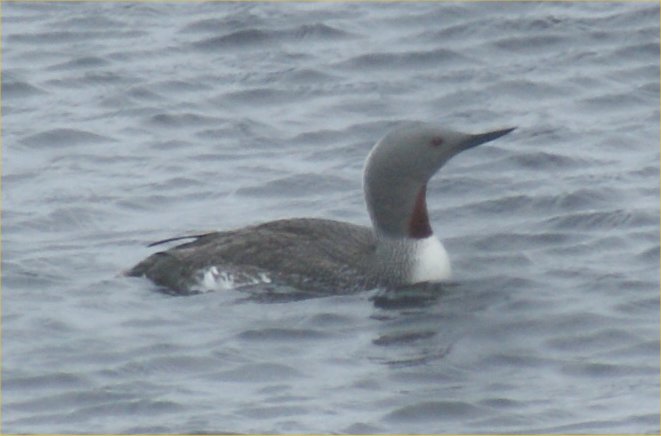 |
| Difficult to get close to, and anyway protected on their breeding sites. This one was in a small lake by the road near Nibon, Shetland in June 2013, so we could photograph it from the car. |
Back to bird list
| GREAT CRESTED GREBE Podiceps cristatus | |
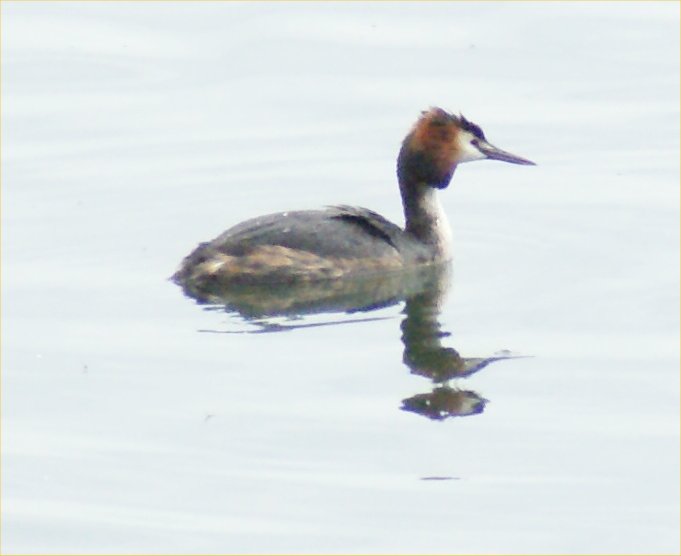 |
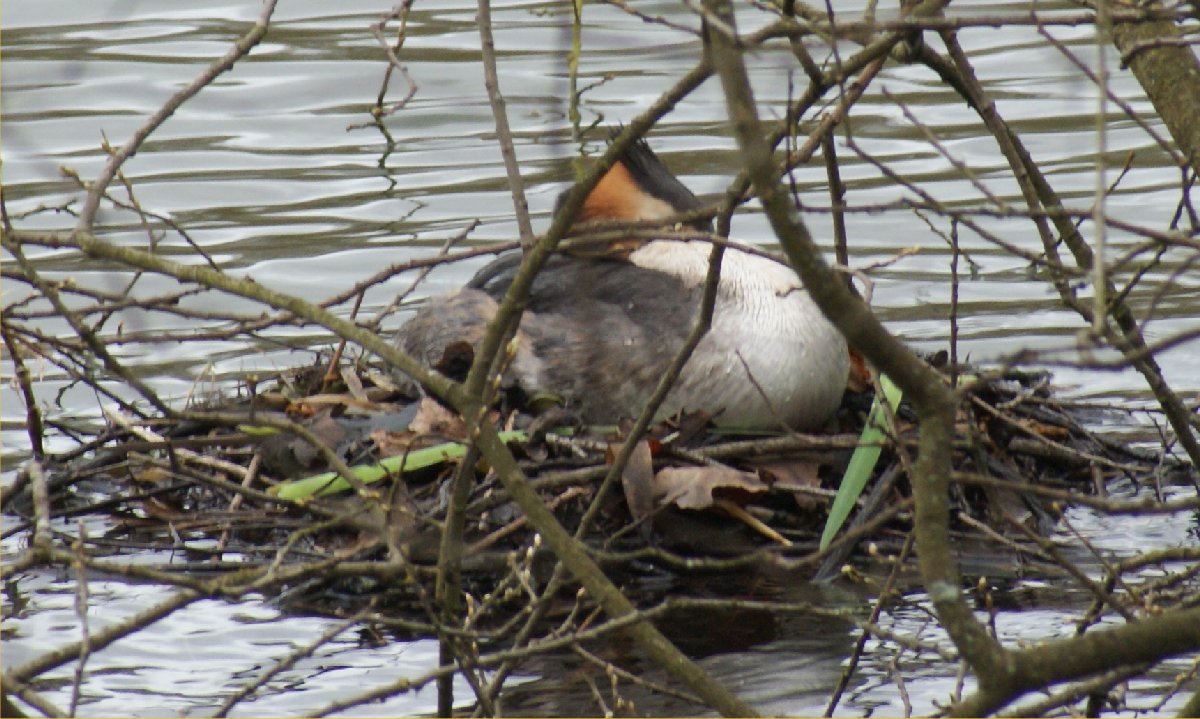
|
| We've seen very few of these lovely birds since we moved north, beyond their normal range. The left-hand one was in Milton Keynes in May 2014, the other in Send, Surrey, in April 2013, both seen when we were on trips south. |
Back to bird list
| FULMAR Fulmarus glacialis | |
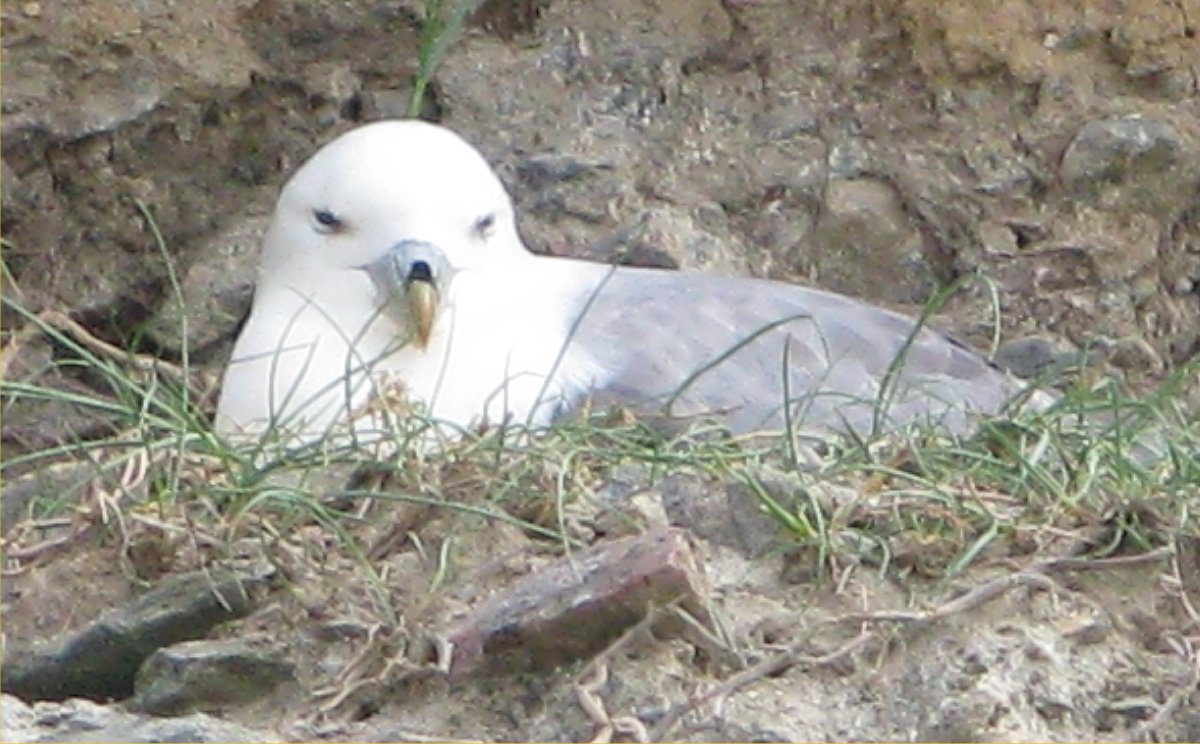 |
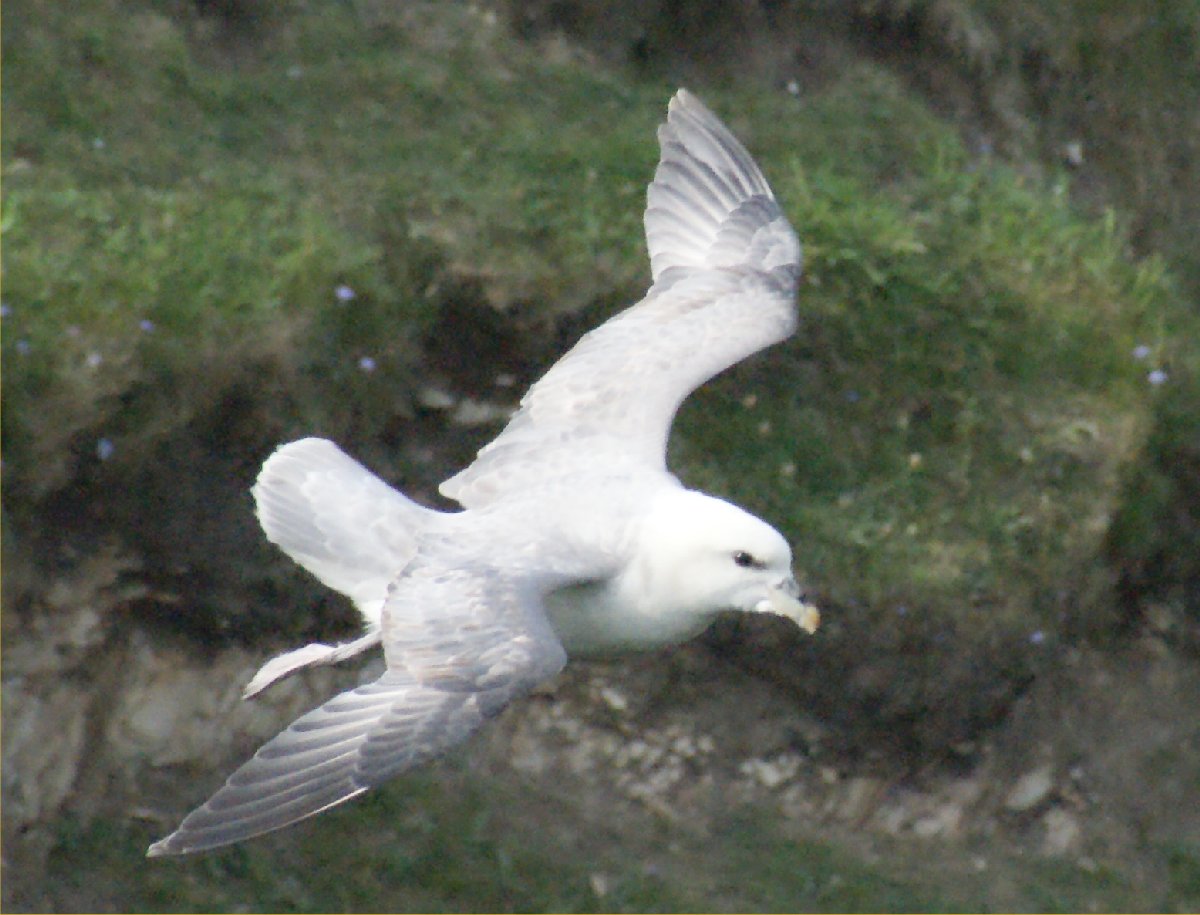
|
| One of our favourite birds, partly from association with holidays, though we have seen them locally too. Elisabeth came across the nest on Spiggie Beach, Shetland, quite suddenly in June 2010; fortunately the bird was relaxed and didn't spit! The one soaring on air currents was on St Ninian's Isle, also in Shetland, and photographed later the same day. |
Back to bird list
| NORTHERN GANNET Morus bassanus |
 |
| Always a joy to see, whether soaring elegantly or plunging for fish. We have a few pictures of the latter, though none worth showing online! This bird was above Sanna Bay, Ardnamurchan, in May 2009. |
Back to bird list
| GREAT CORMORANT Phalacrocorax carbo |
 |
| We haven't managed a good photo of a stationary bird yet, but here's an action shot instead, from Hauxley Nature Reserve in August 2012. |
Back to bird list
| SHAG Phalacrocorax aristotelis | |
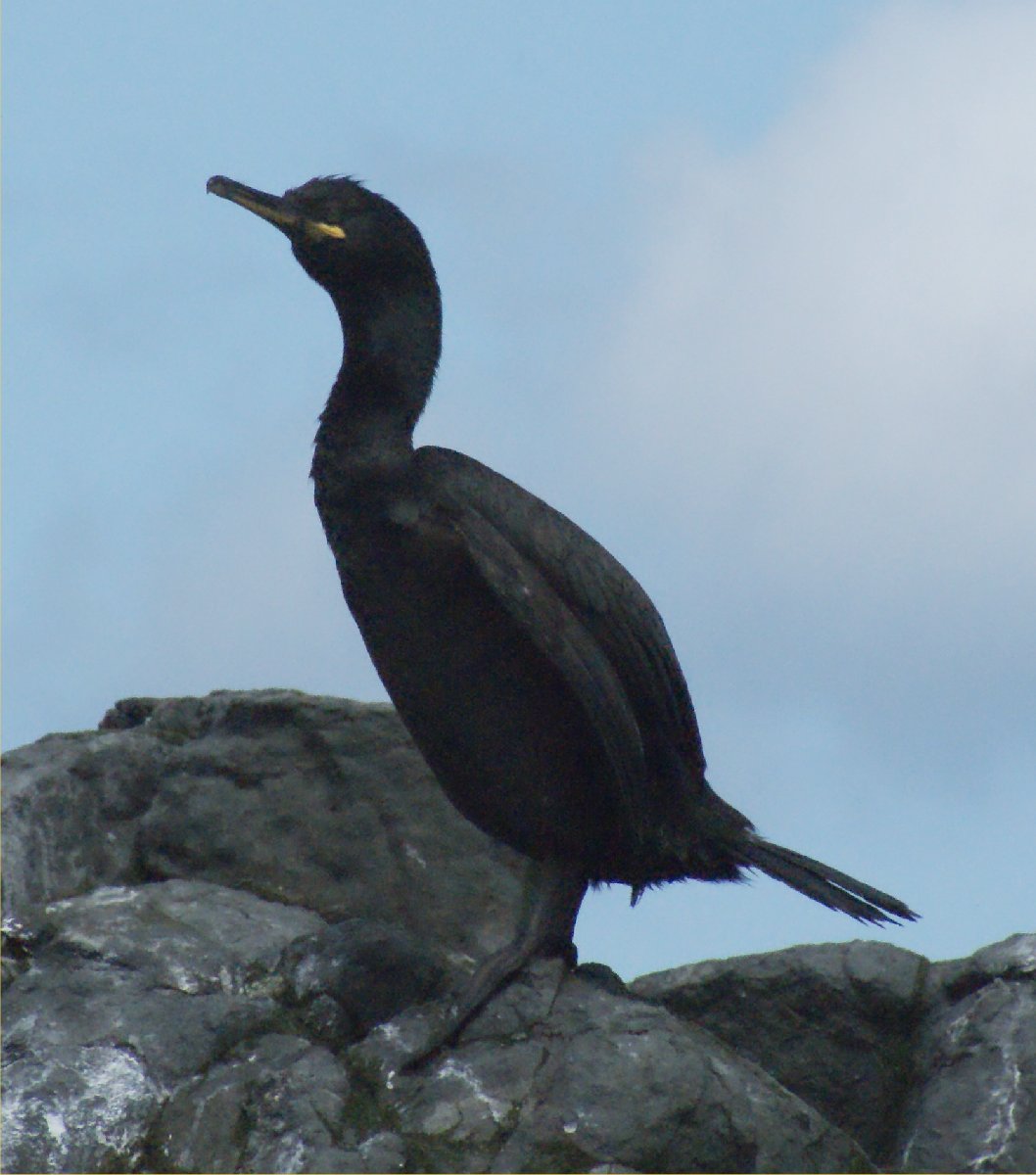 |

|
| We saw both of these during a trip to the Farne Islands in June 2011. |
Back to bird list
| LITTLE EGRET Egretta garzetta | |
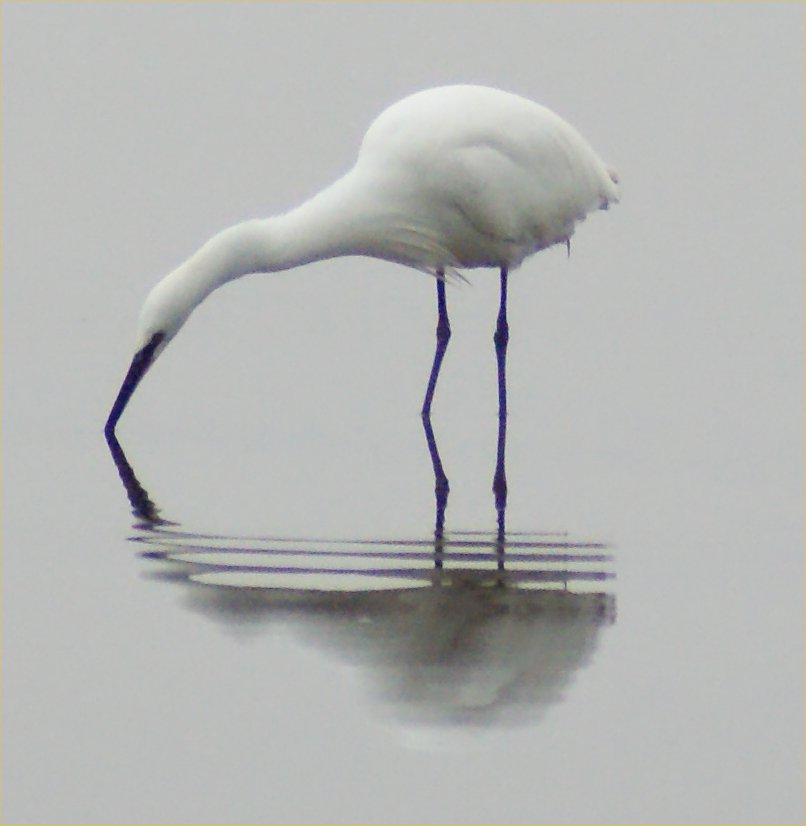 |

|
| There was a time, quite recently, when these were but rare visitors on the south coast. We have seen them in Northumberland once or twice, though this one was in Cley, Norfolk in November 2014. |
Back to bird list
| GREAT WHITE EGRET Egretta alba |
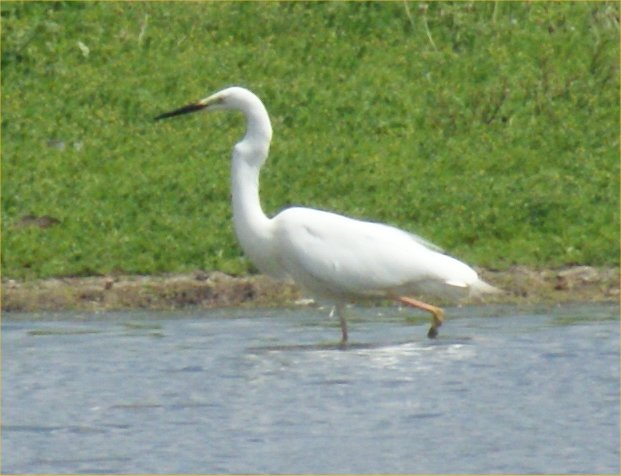 |
| Our one sighting of this bird, obviously a vagrant, was at Hauxley Nature Reserve in June 2014. |
Back to bird list
| GREY HERON Ardea cinerea | |
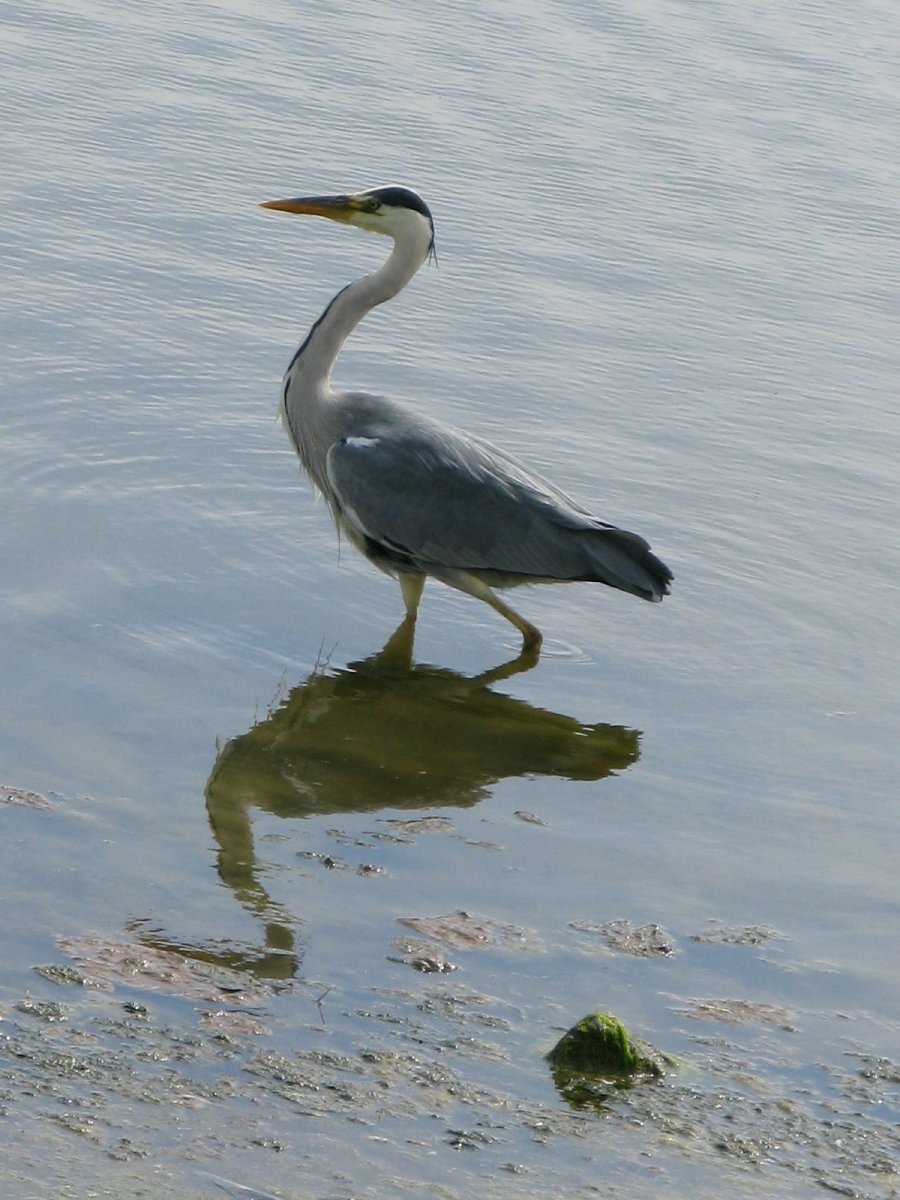 |

|
| A very photogenic bird, especially when reflected in still water. The left-hand one was at Hauxley Nature Reserve in June 2010, and is seen in action below. The other was at Druridge in May 2014 - the female Mallard was very relaxed and clearly didn't see it as a threat to her ducklings. |
 |
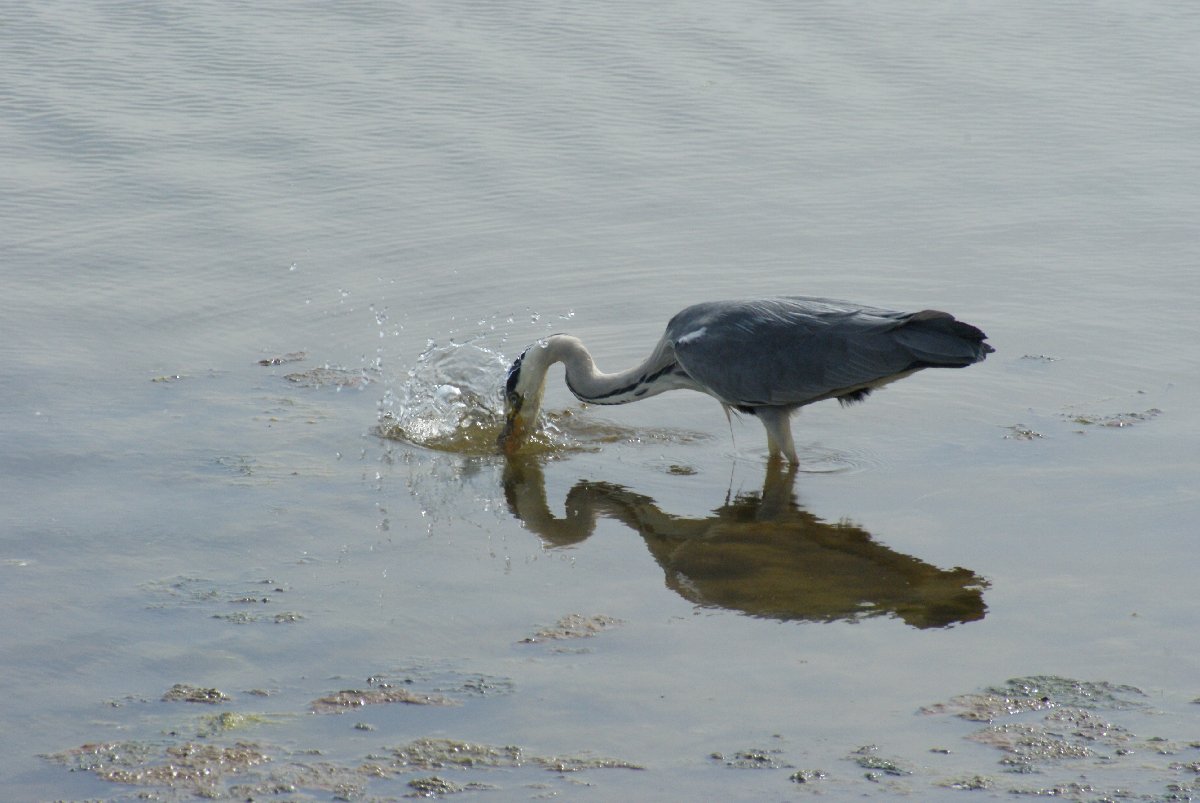
| | "I think there's something there." | "Got it!" |
Back to bird list
| BEWICK'S SWAN Cygnus columbianus | |
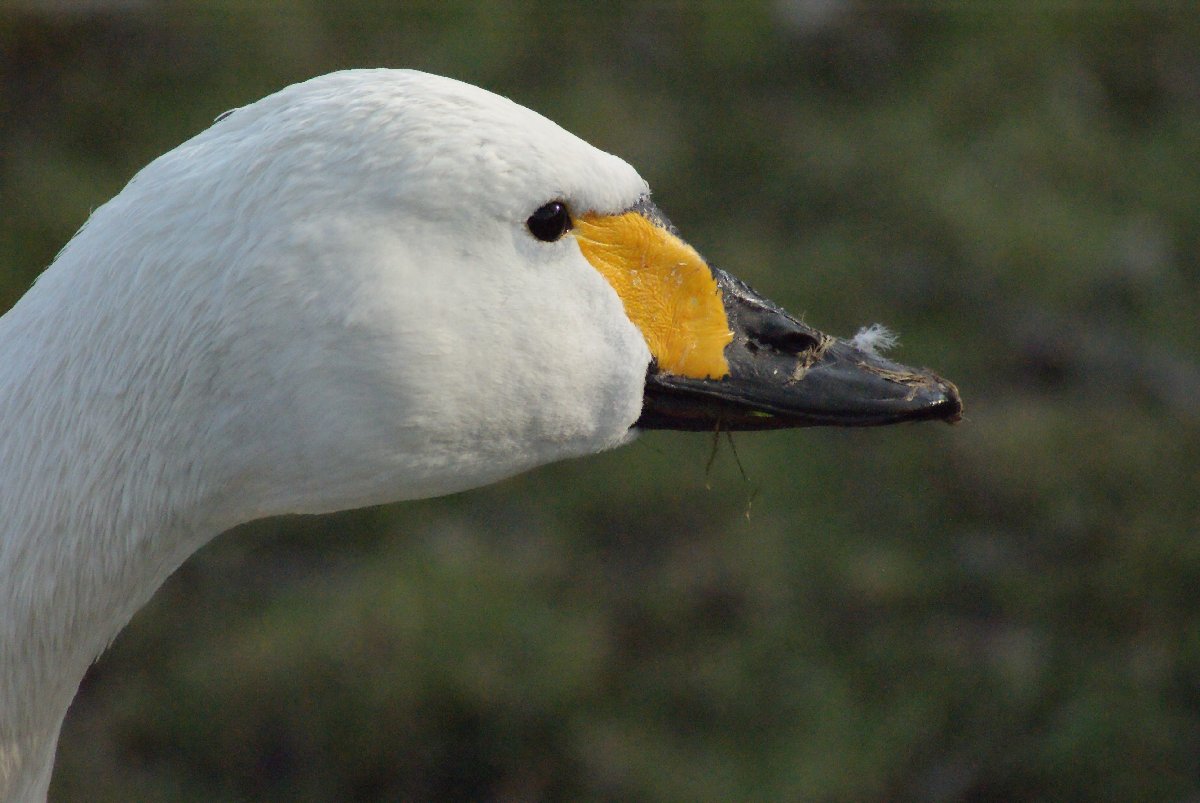 |
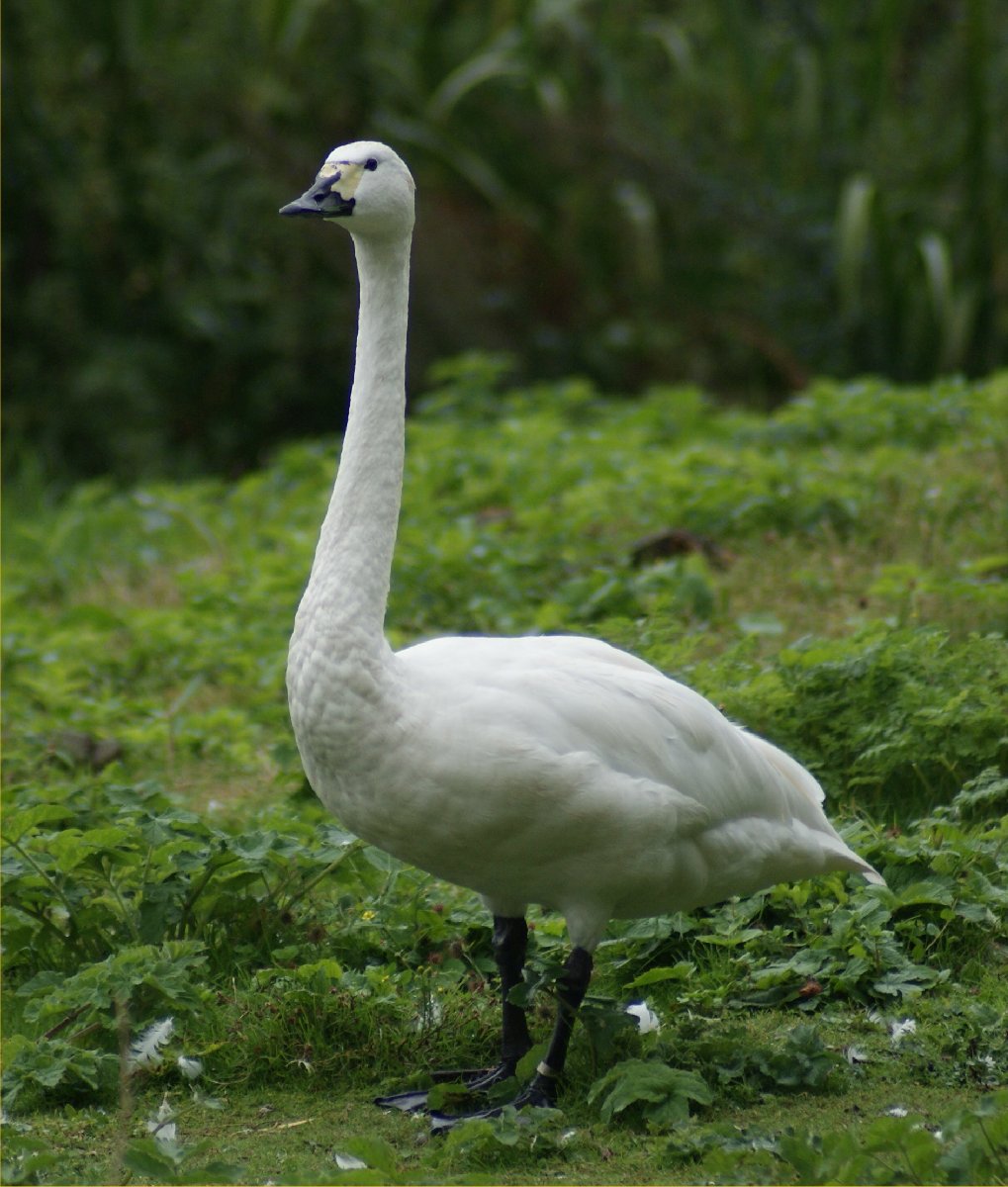
| 
|
| We've never managed to see Bewick's Swans in the wild (not knowingly anyway), but Washington WWT always has a pair, who produce cygnets (right-hand picture) from time to time. Dates February 2010, September 2008 and February 2011 respectively. |
Back to bird list
| WHOOPER SWAN Cygnus cygnus | |
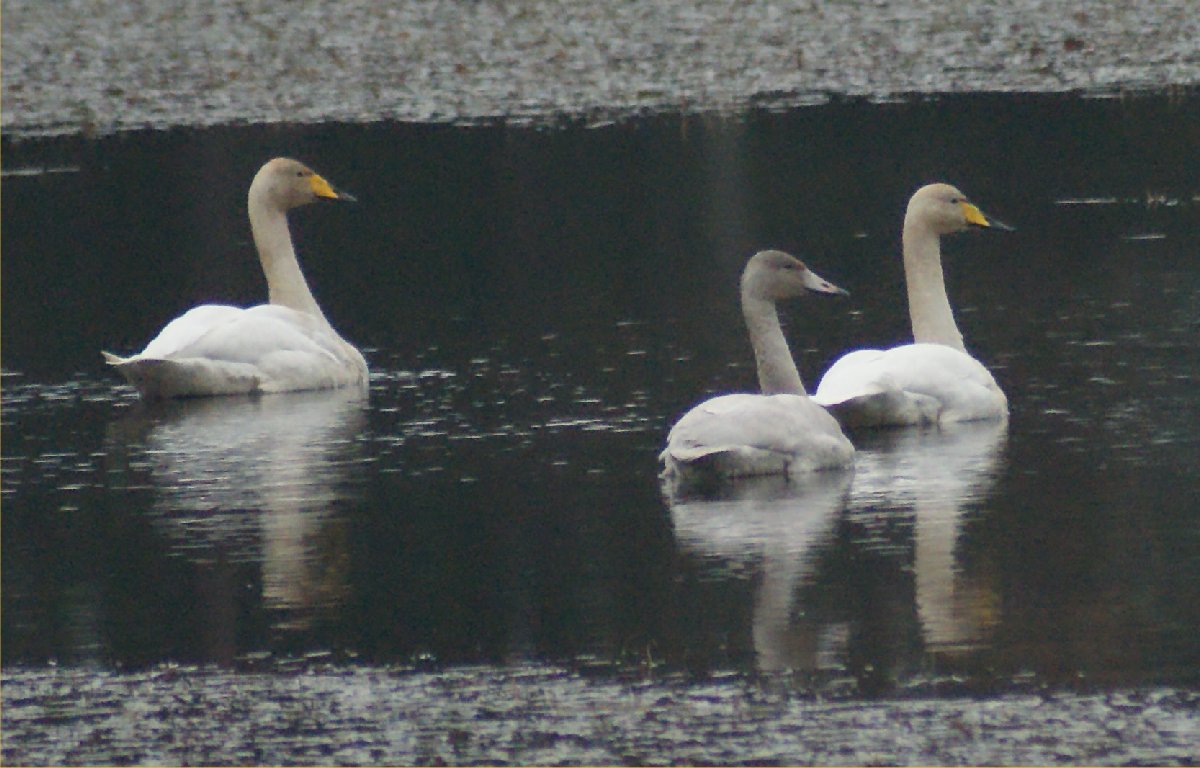 |
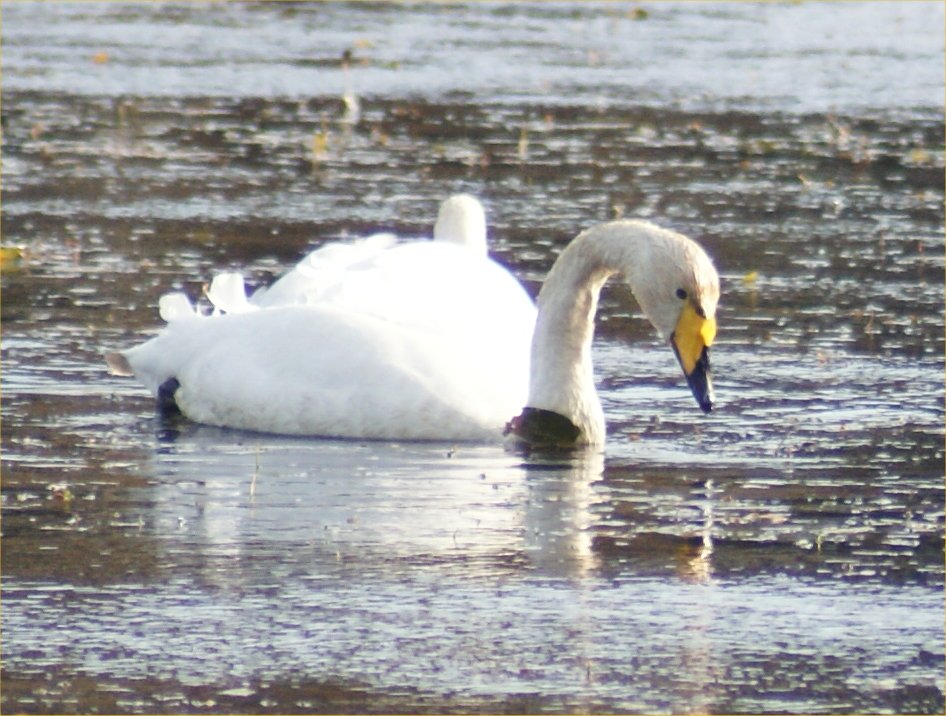
|
| We've seen these at Caerlaverock WWT, but in the wild almost only on Nelly's Moss North, at Cragside. The lake is quite large and they tend to congregate in the middle! We saw the left-hand ones in November 2011, the other in October 2010. |
Back to bird list
| MUTE SWAN Cygnus olor | |
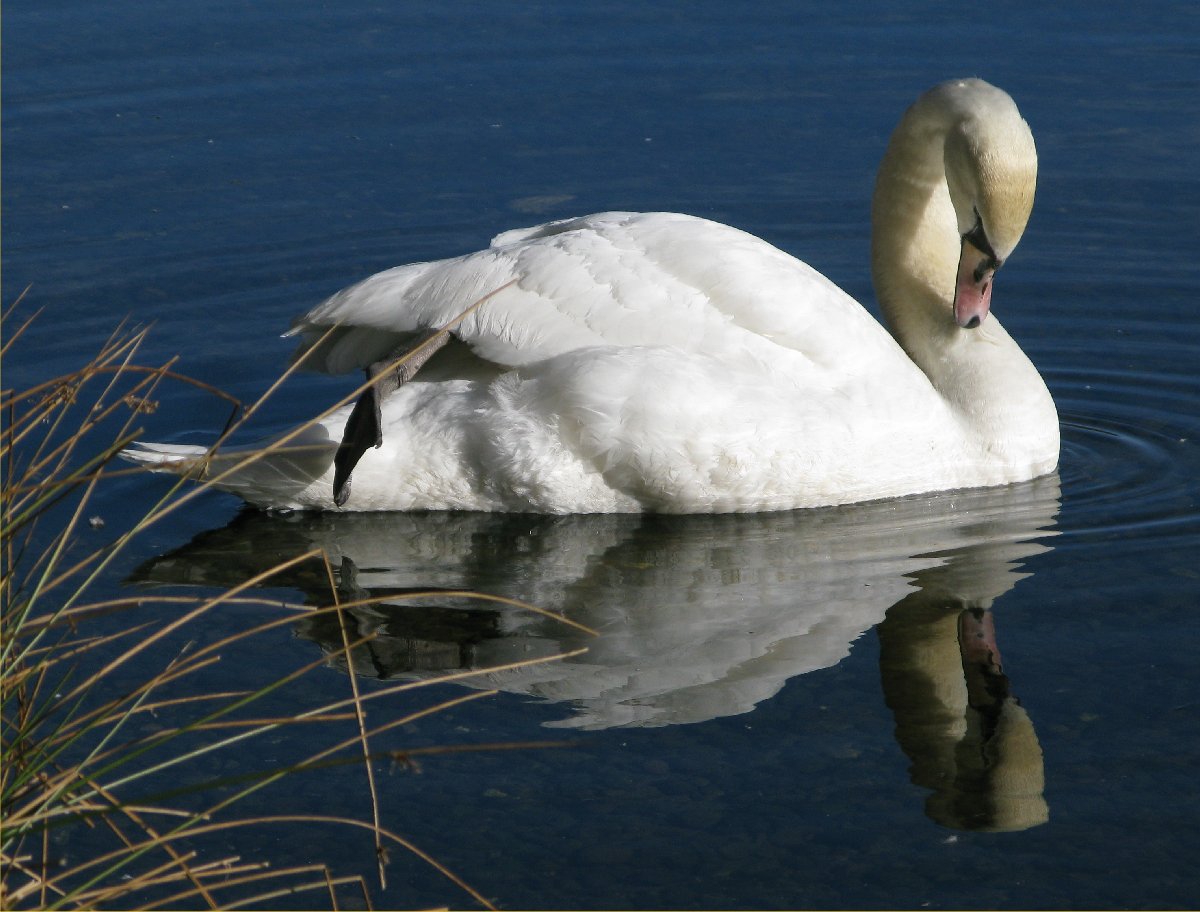 |
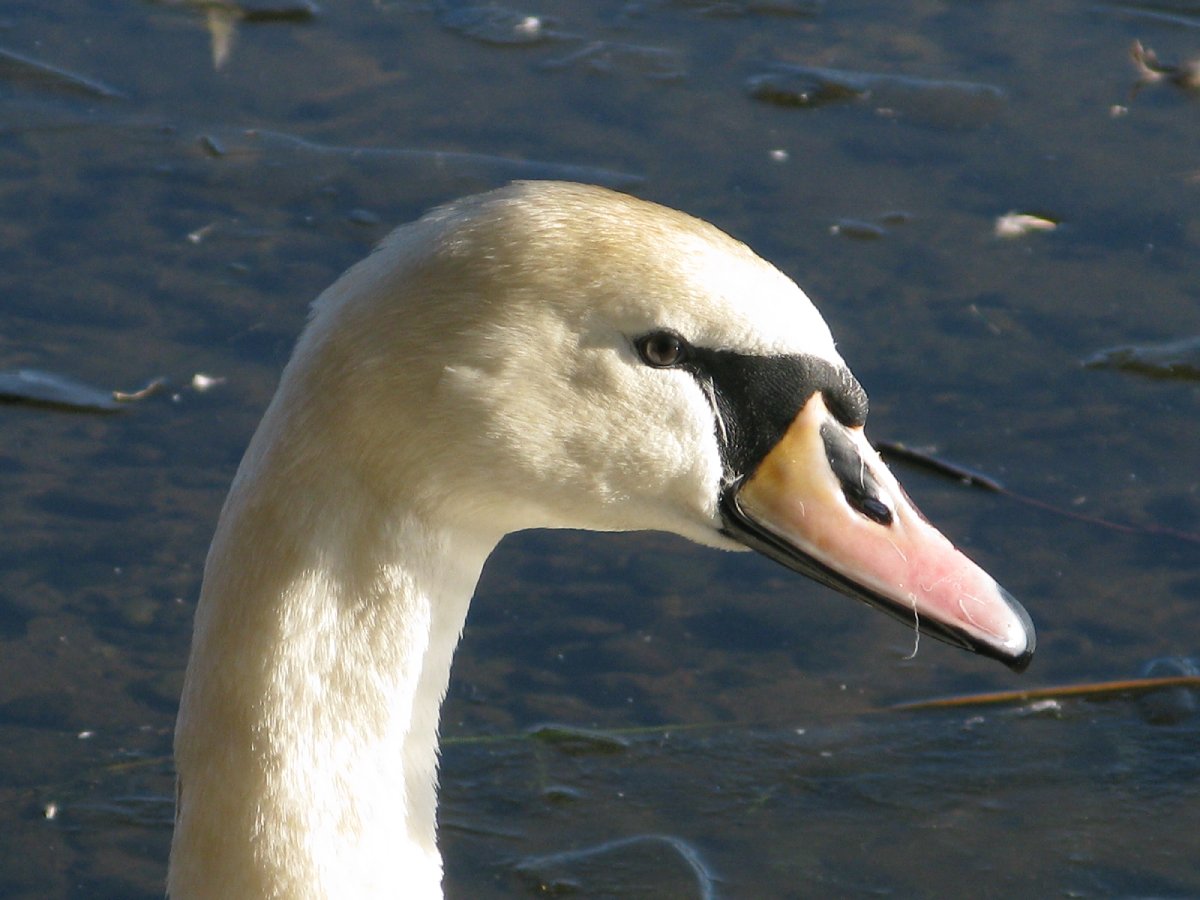
|
| Who will resist getting their camera out when Mute Swans are around? This one was at Talkin Tarn, Cumbria in February 2010. |
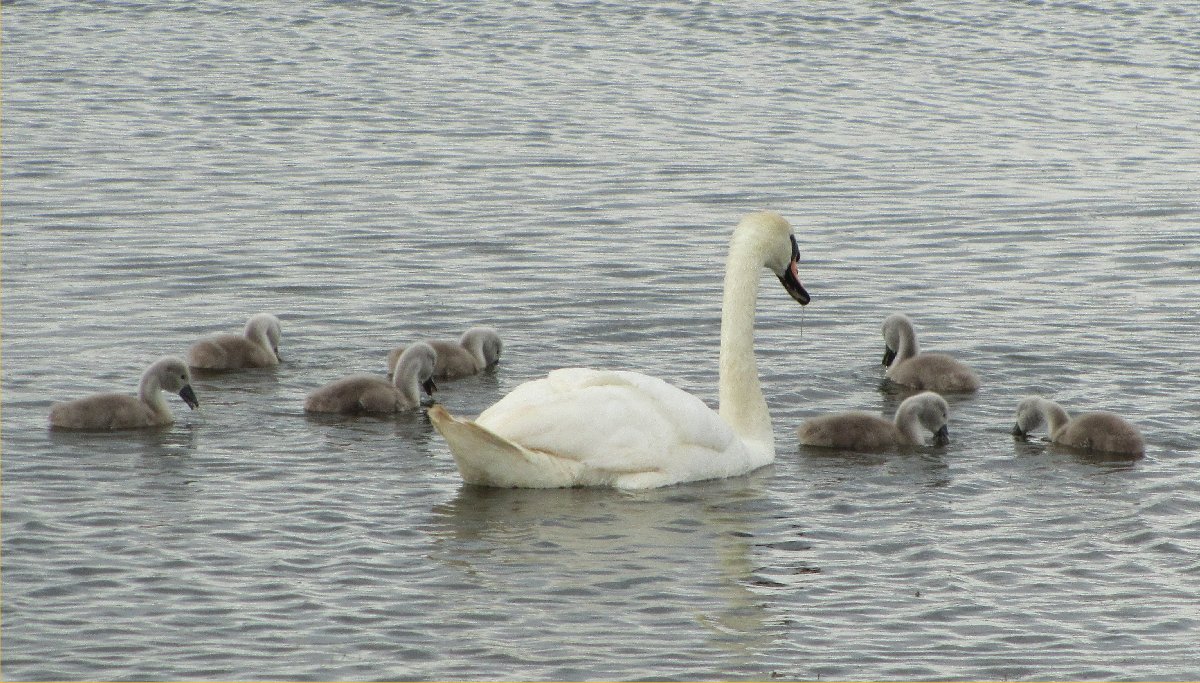 |
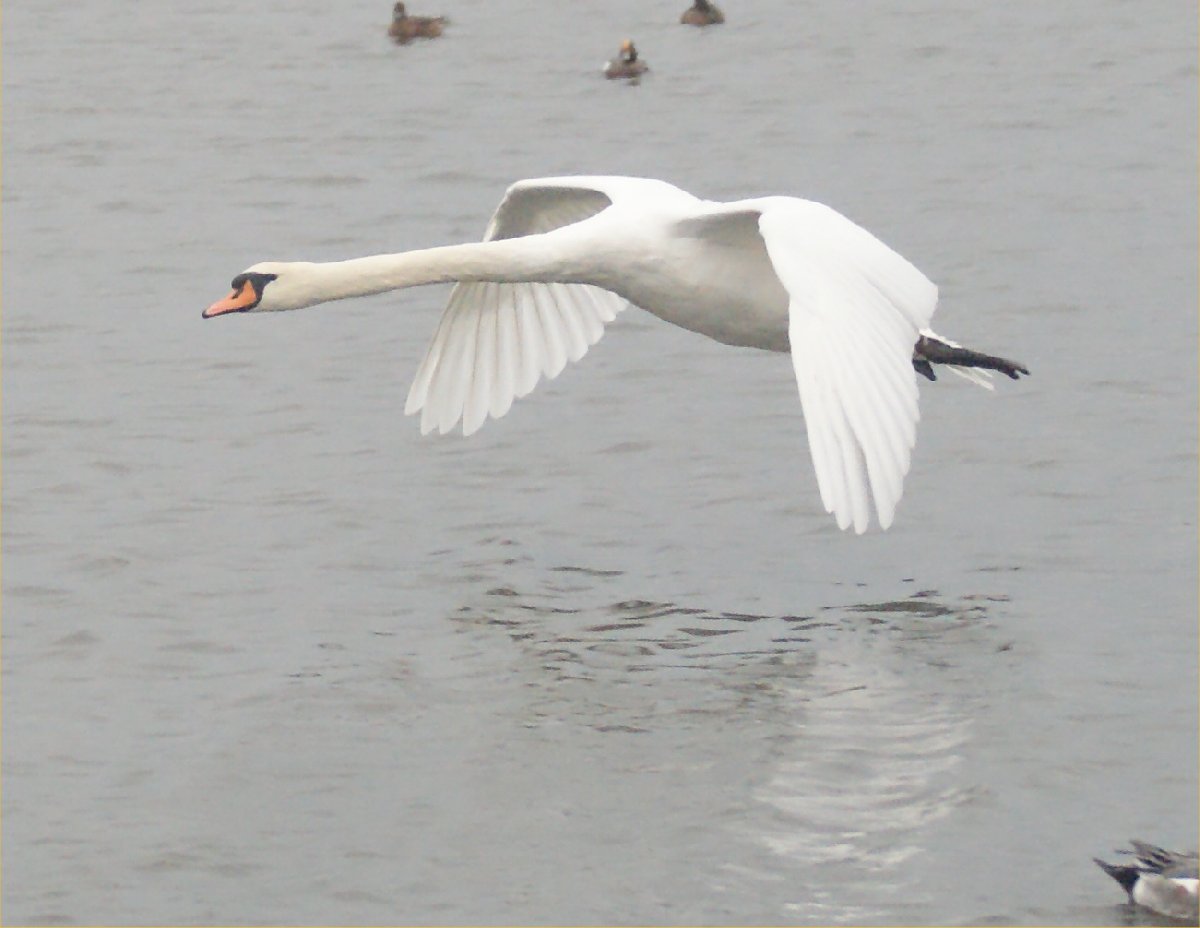
|
| The cygnets were at Hauxley Nature Reserve in June 2011, the flying bird at Caerlaverock WWT in October the same year. |
Back to bird list
| GREY LAG GOOSE Anser anser | |
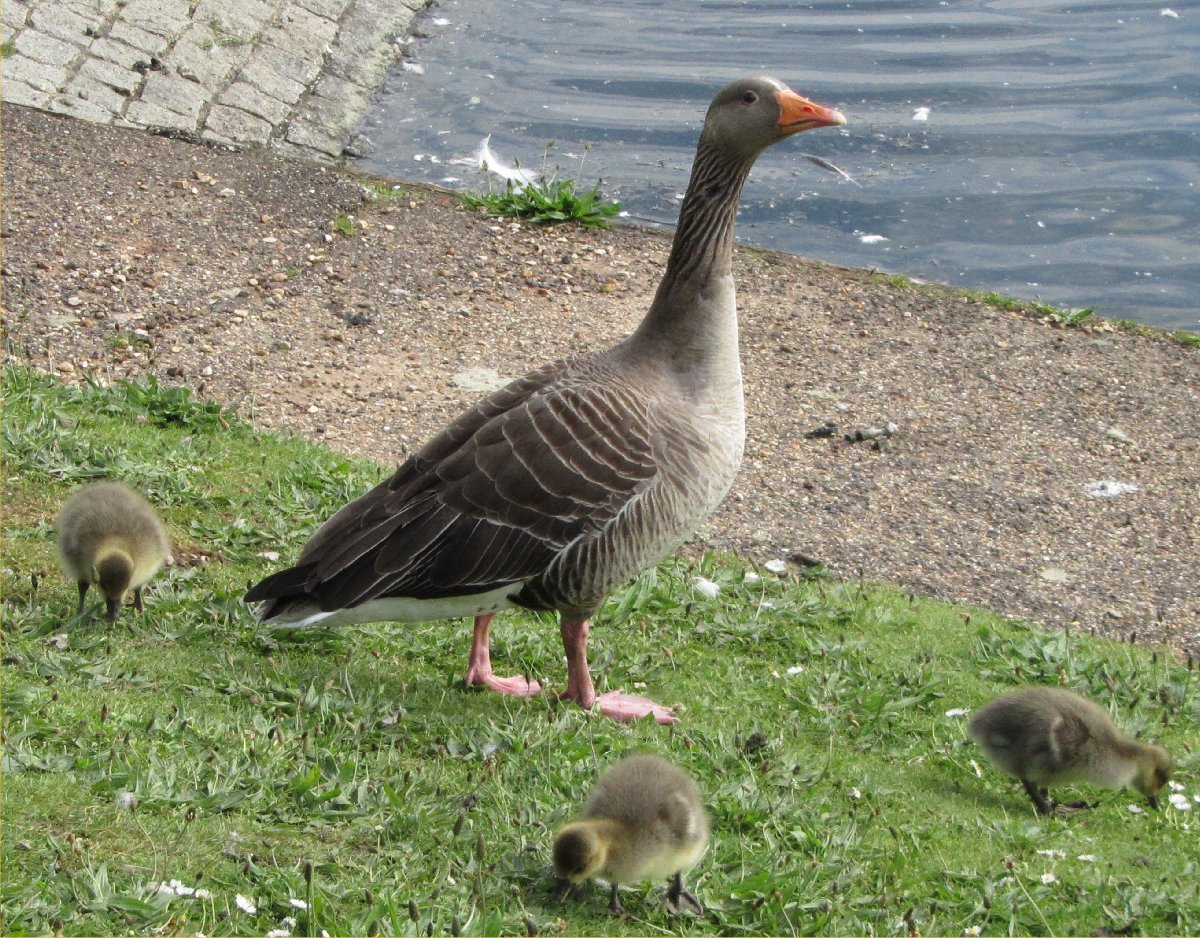 |
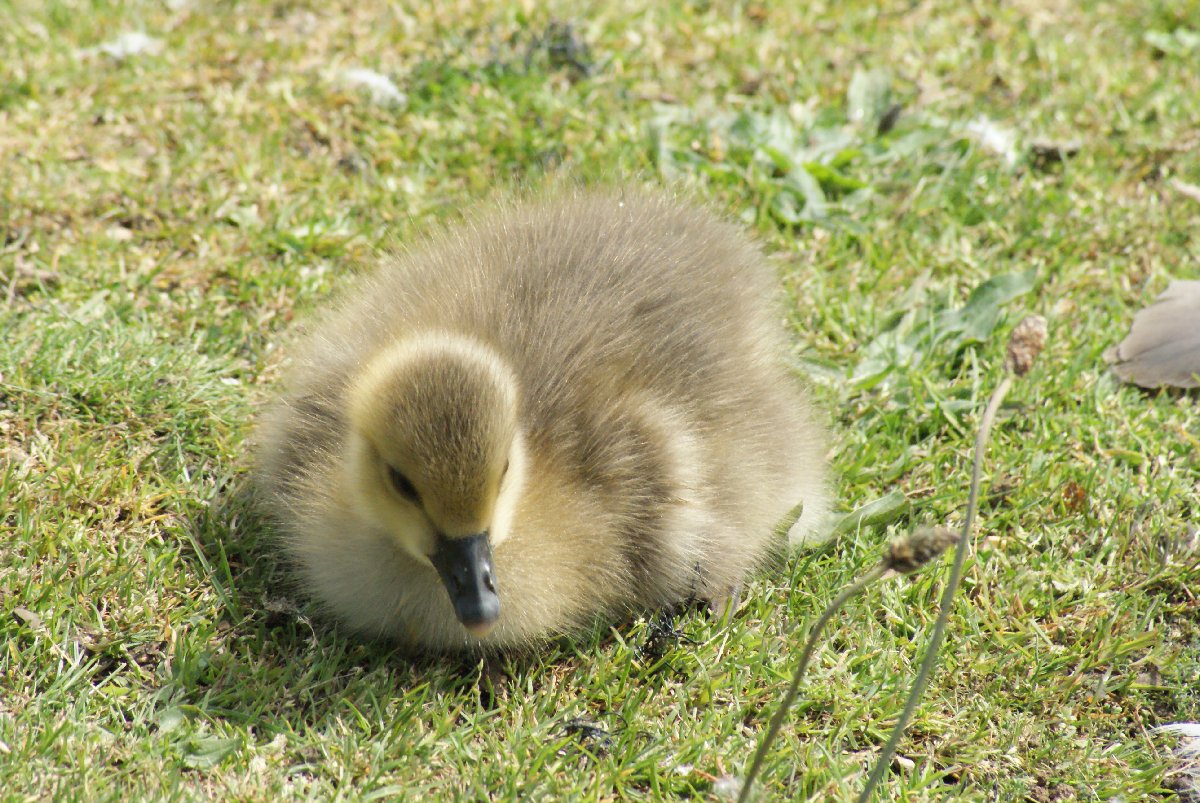
| 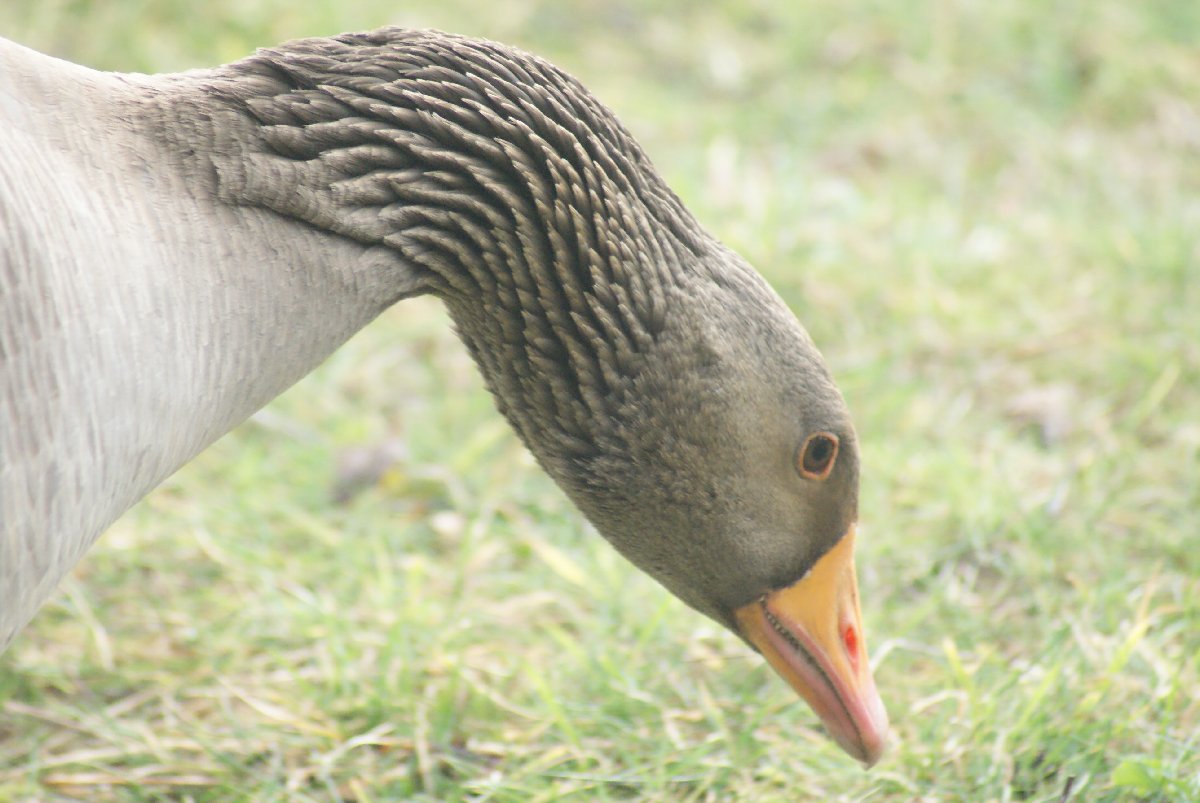 |
| Probably the most commonly seen wild goose (along with the Canada Goose) and often very relaxed and trusting. The parent and goslings were in Milton Keynes in May 2014, the lone adult in Washington WWT, March 2012. |
Back to bird list
| PINK-FOOTED GOOSE Anser brachyrhynchus |
 |
| This one posed very nicely for us at Washington WWT in April 2009. |
Back to bird list
| CANADA GOOSE Branta canadensis | |
 |

|
| Probably our best photos of these common and photogenic birds. The flying group were at Hauxley Nature Reserve, Northumberland, in August 2012, the standing one at Clumber Park, Nottinghamshire, April 2012. |
Back to bird list
| BARNACLE GOOSE Branta leucopsis | |
 |
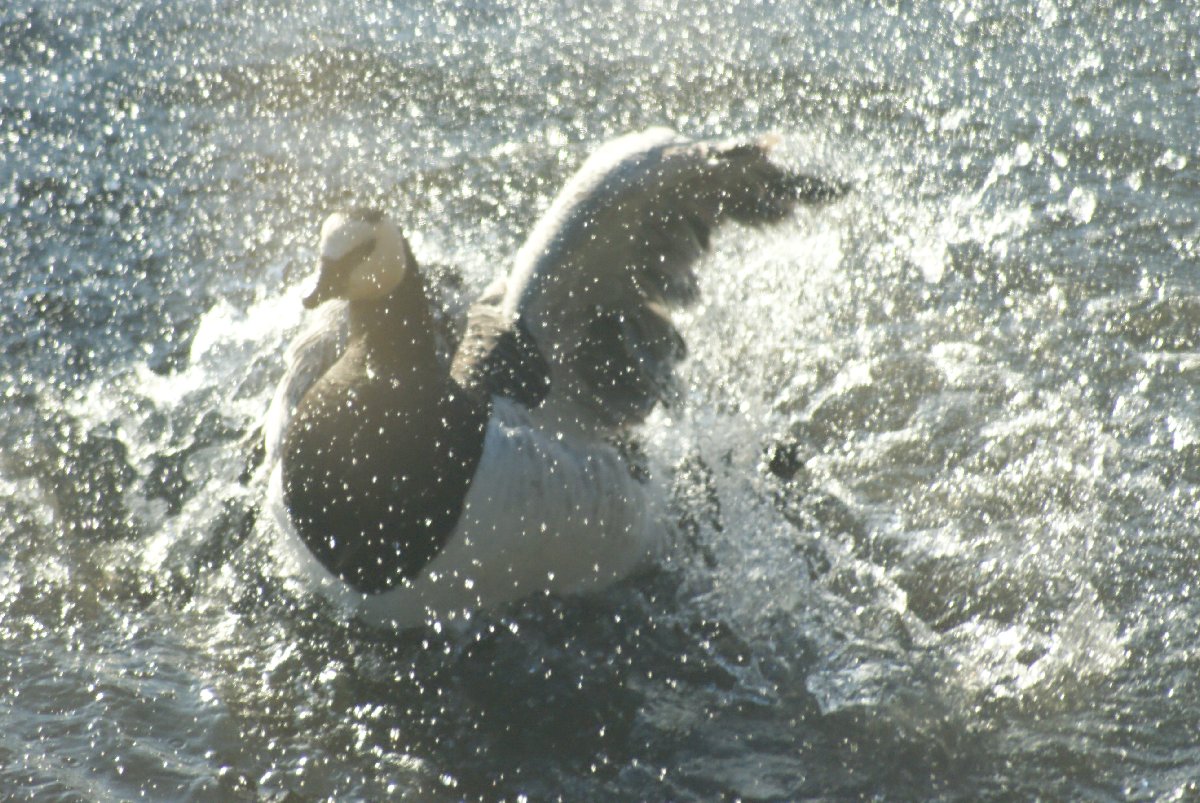
|
| Both pictures taken at Washington WWT; the geese on the left in January 2015, the bathing one in January 2012. |
Back to bird list
| BRENT GOOSE Branta bernicla |
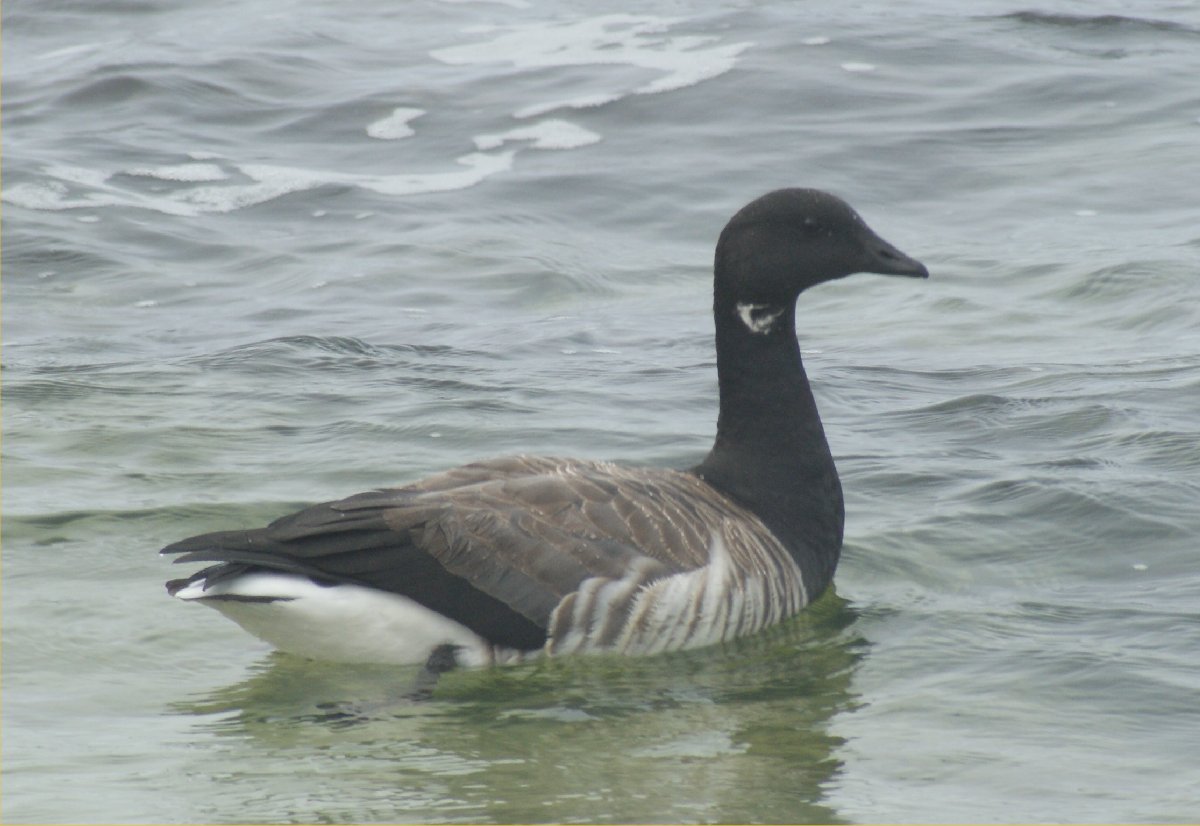
|
| We came across a small group of the light-bellied form of these at Sanna Bay, Ardnamurchan, in September 2012. |
Back to bird list
| RED-BREASTED GOOSE Branta ruficollis | |
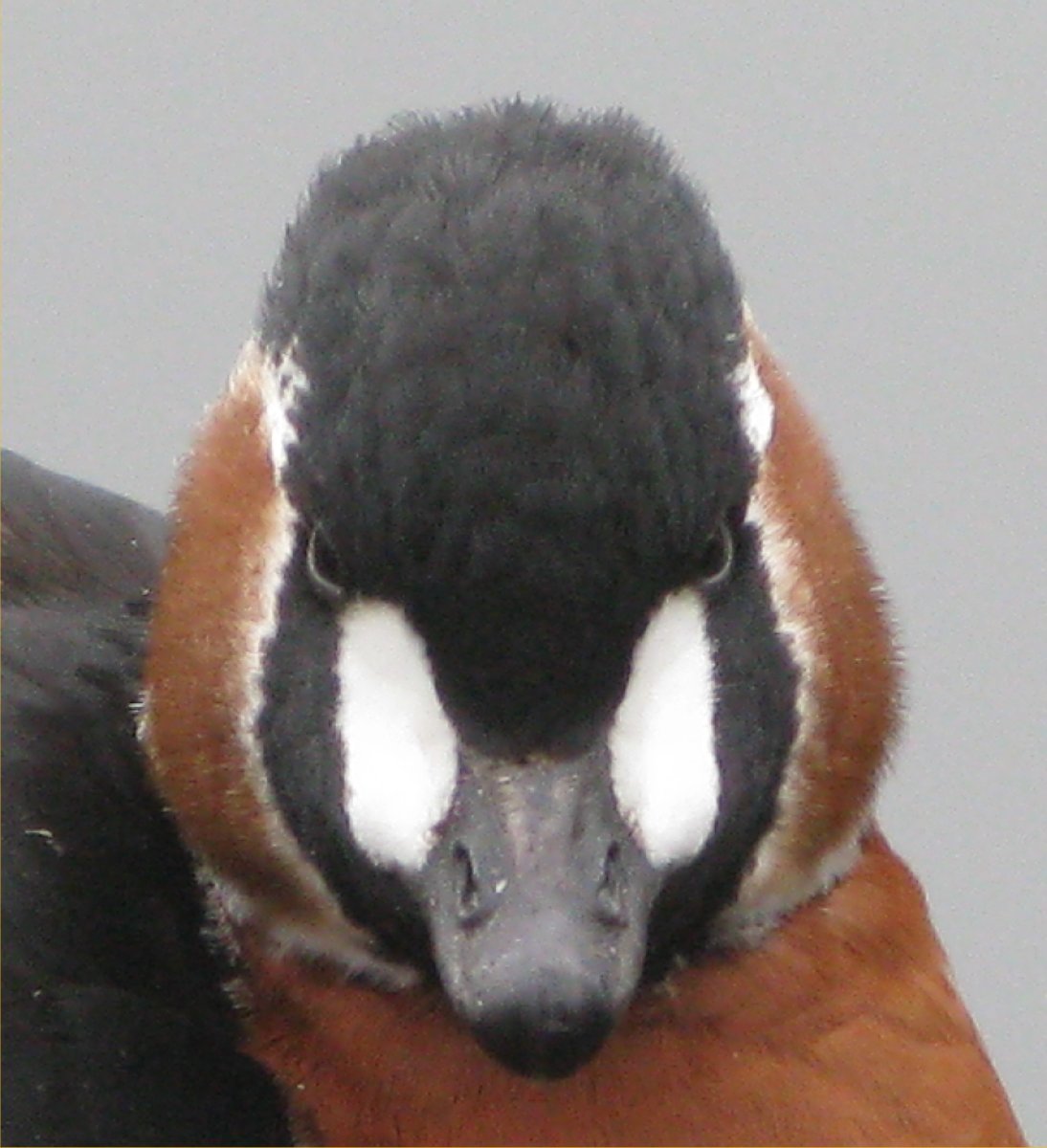 |
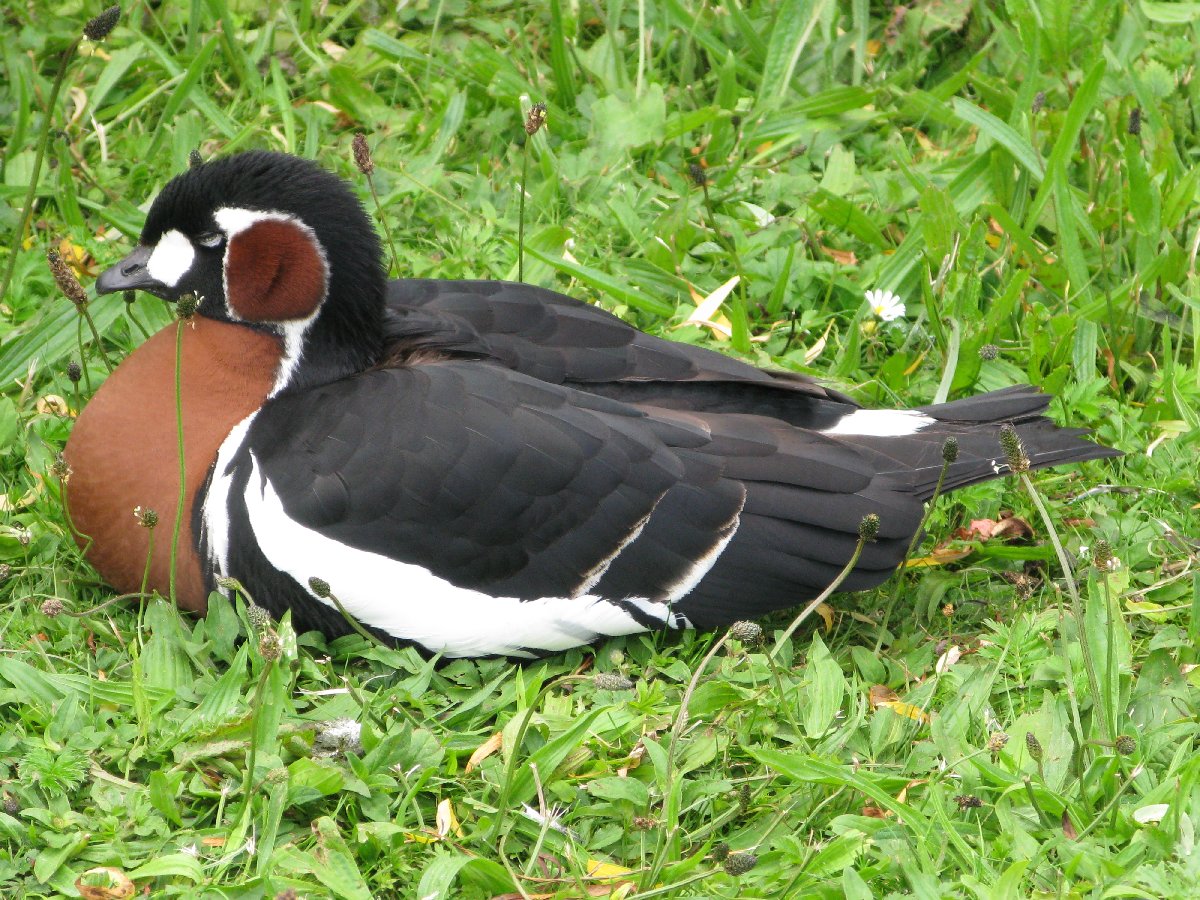
|
| Doubtful as a British bird, but splendid and worth including. This one was at Washington WWT in February 2010. |
Back to bird list
| COMMON SHELDUCK Tadorna tadorna | |
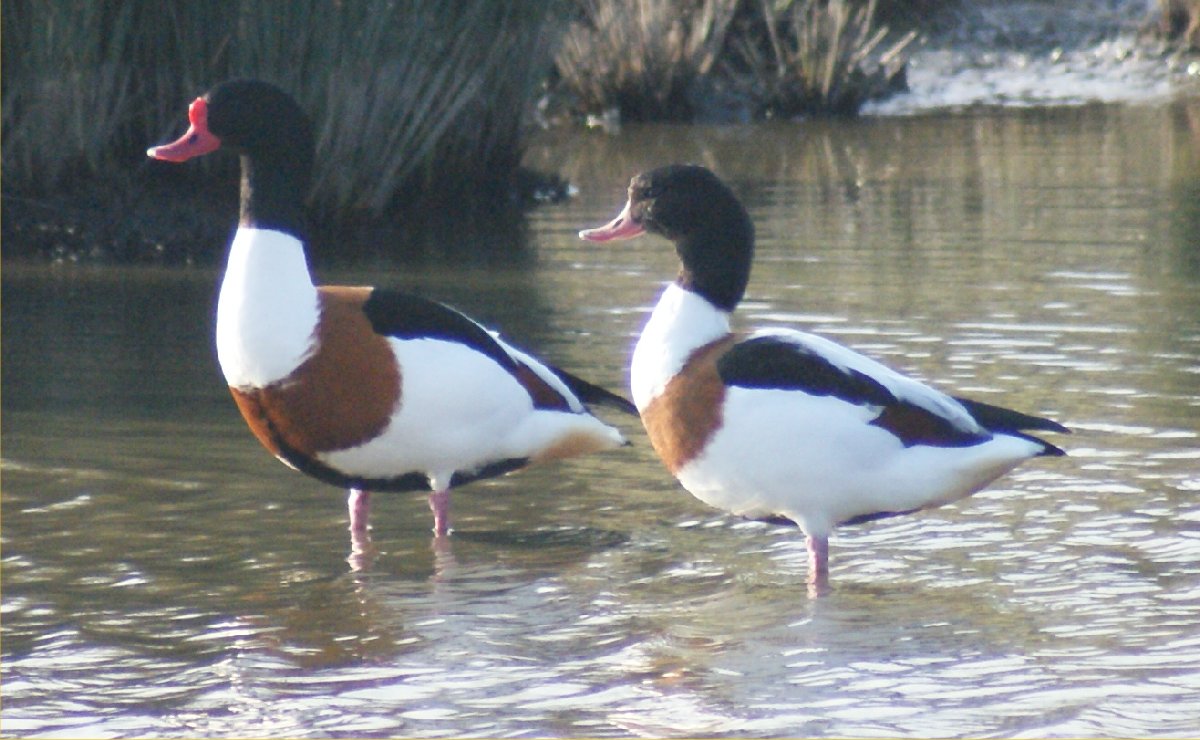 |
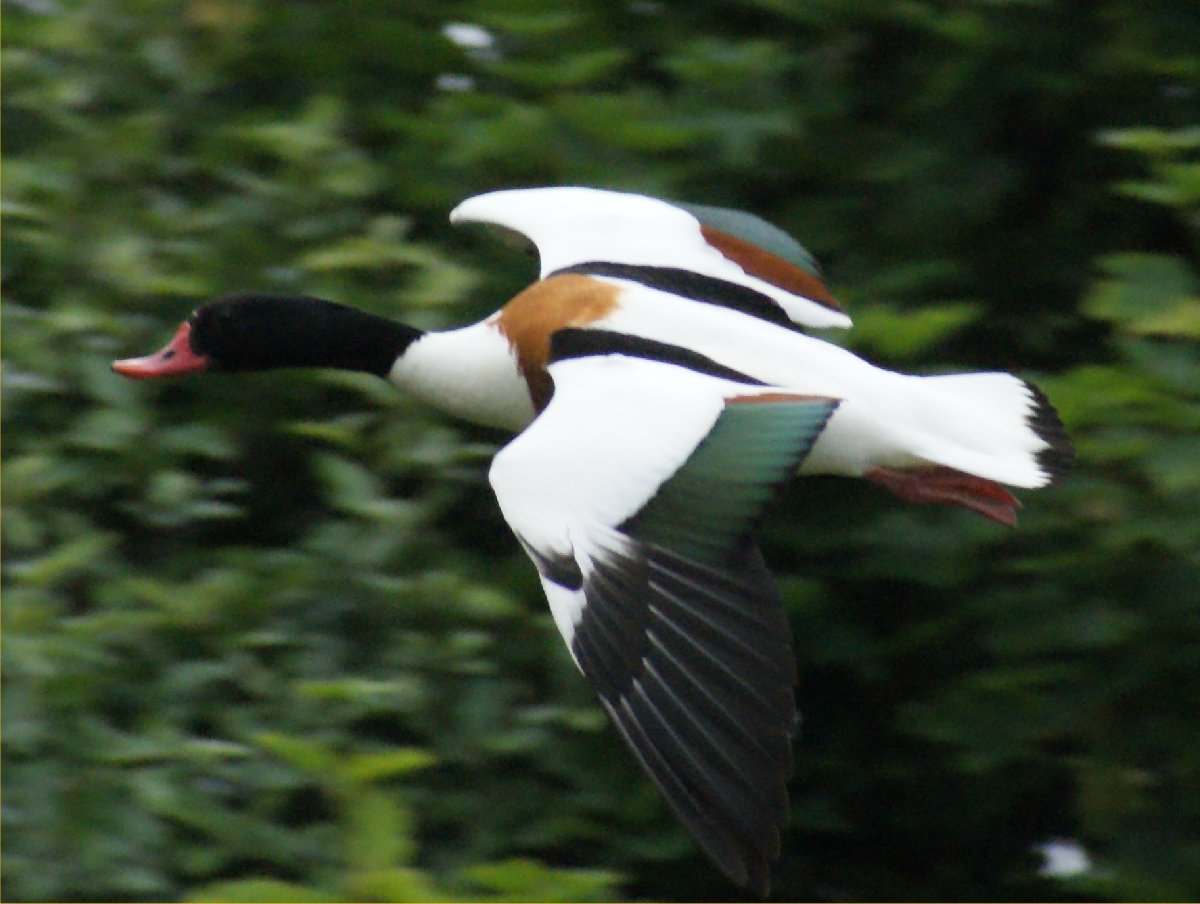
|
| Attractive and fairly common ducks. These were in Washington WWT, the pair in March 2012, the flying one in June 2009. |
Back to bird list
| EGYPTIAN GOOSE Branta bernicla | |
 |

|
| An introduced species, now feral and widespread, and more closely related to ducks than geese. These were seen at Norton Marsh, Norfolk, in April 2012 and Washington WWT in June 2009. |
Back to bird list
| MANDARIN DUCK Aix galericulata |
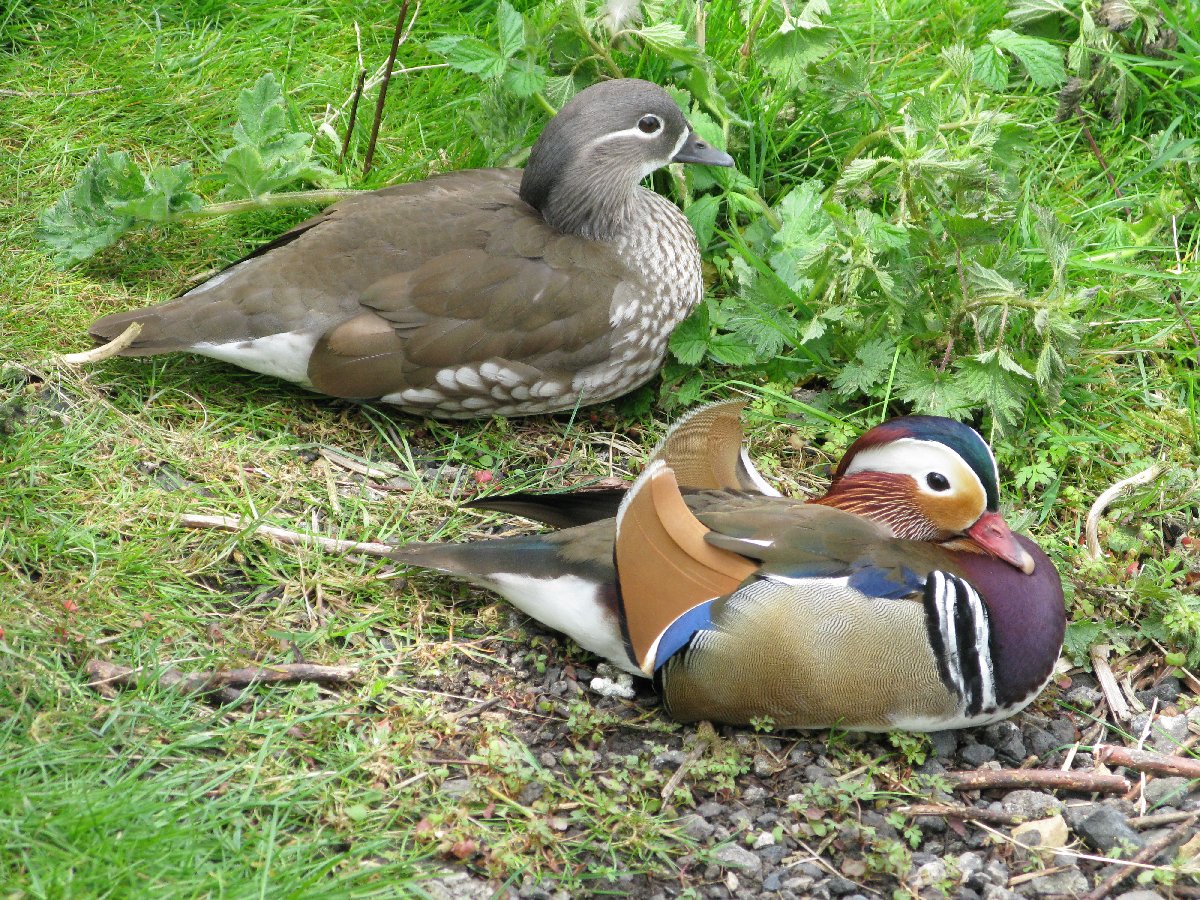 |
| It could be argued that these are not really on the British list, but who with a camera can resist them? This pair was at Washington WWT in April 2009. |
Back to bird list
| EURASIAN WIDGEON Anas penelope | |
 |

|
| The female on the left was at Caerlaverock WWT in October 2011, the pair at Hauxley Nature Reserve in June 2012. |
Back to bird list
| GADWALL Anas strepera | |
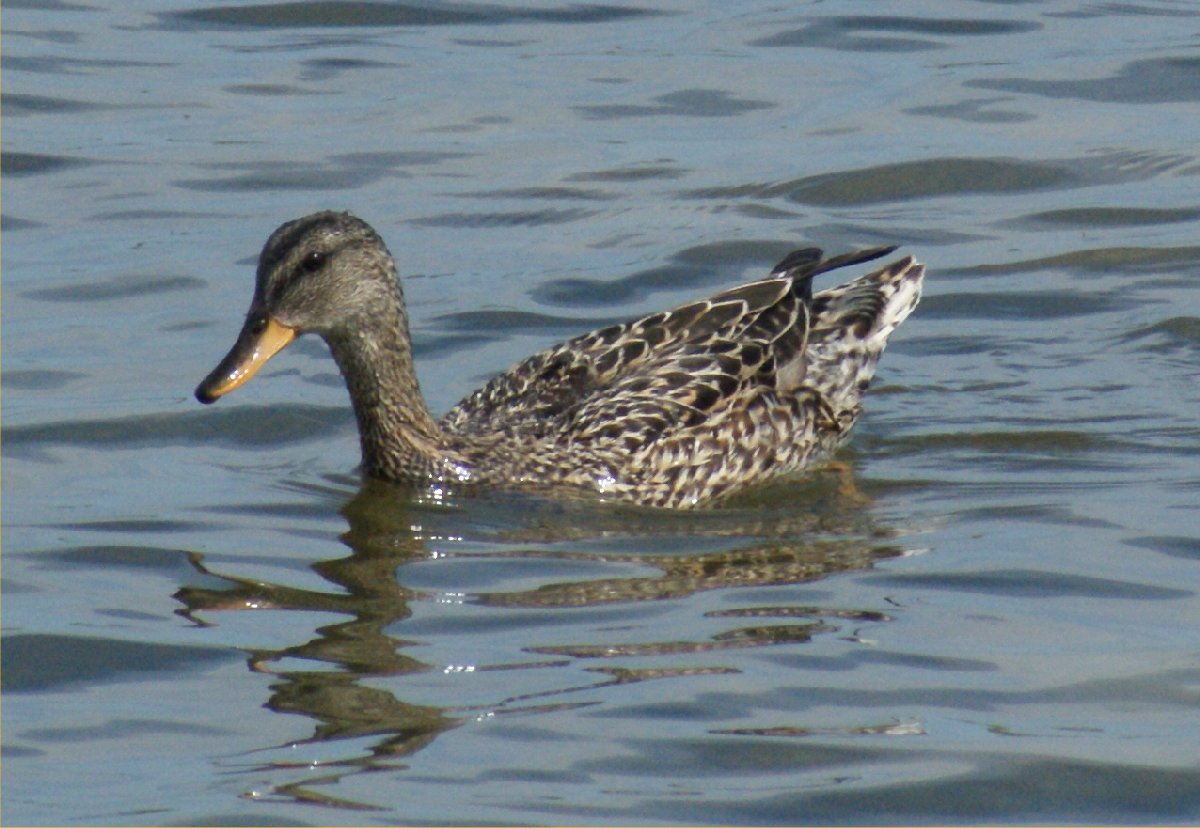 |
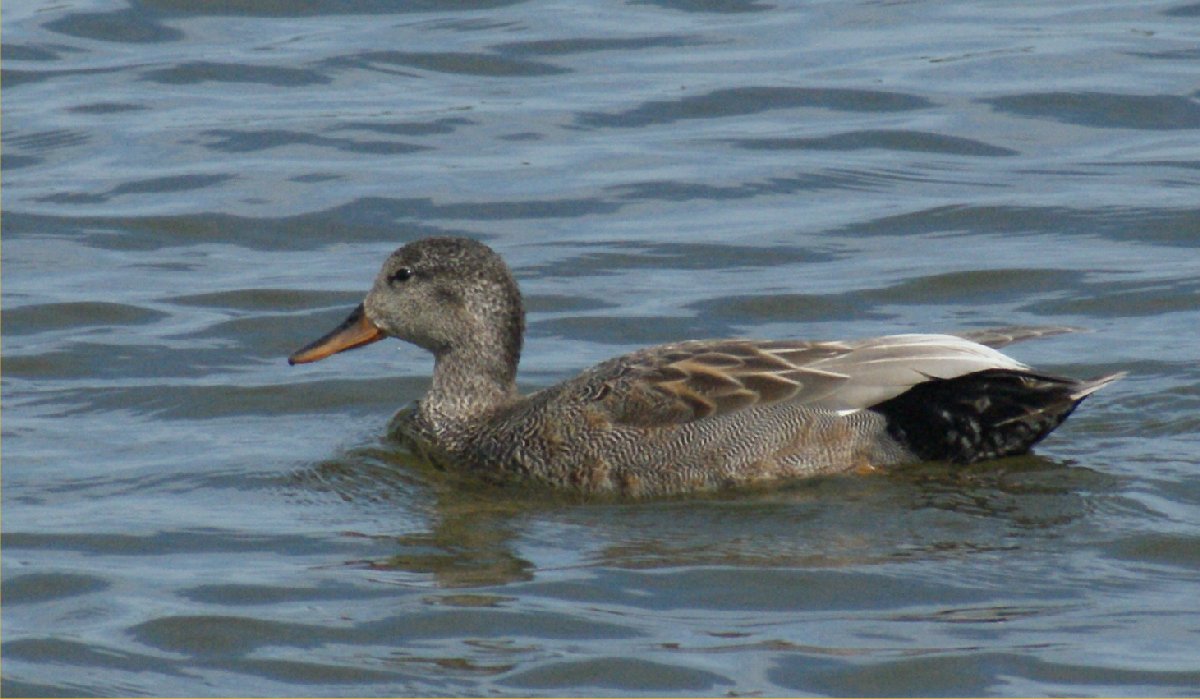
|
| We see them frequently in Northumberland wetlands. These two (female on left) were at Hauxley Nature Reserve in June 2010. |
Back to bird list
| COMMON TEAL Anas crecca | |
 |
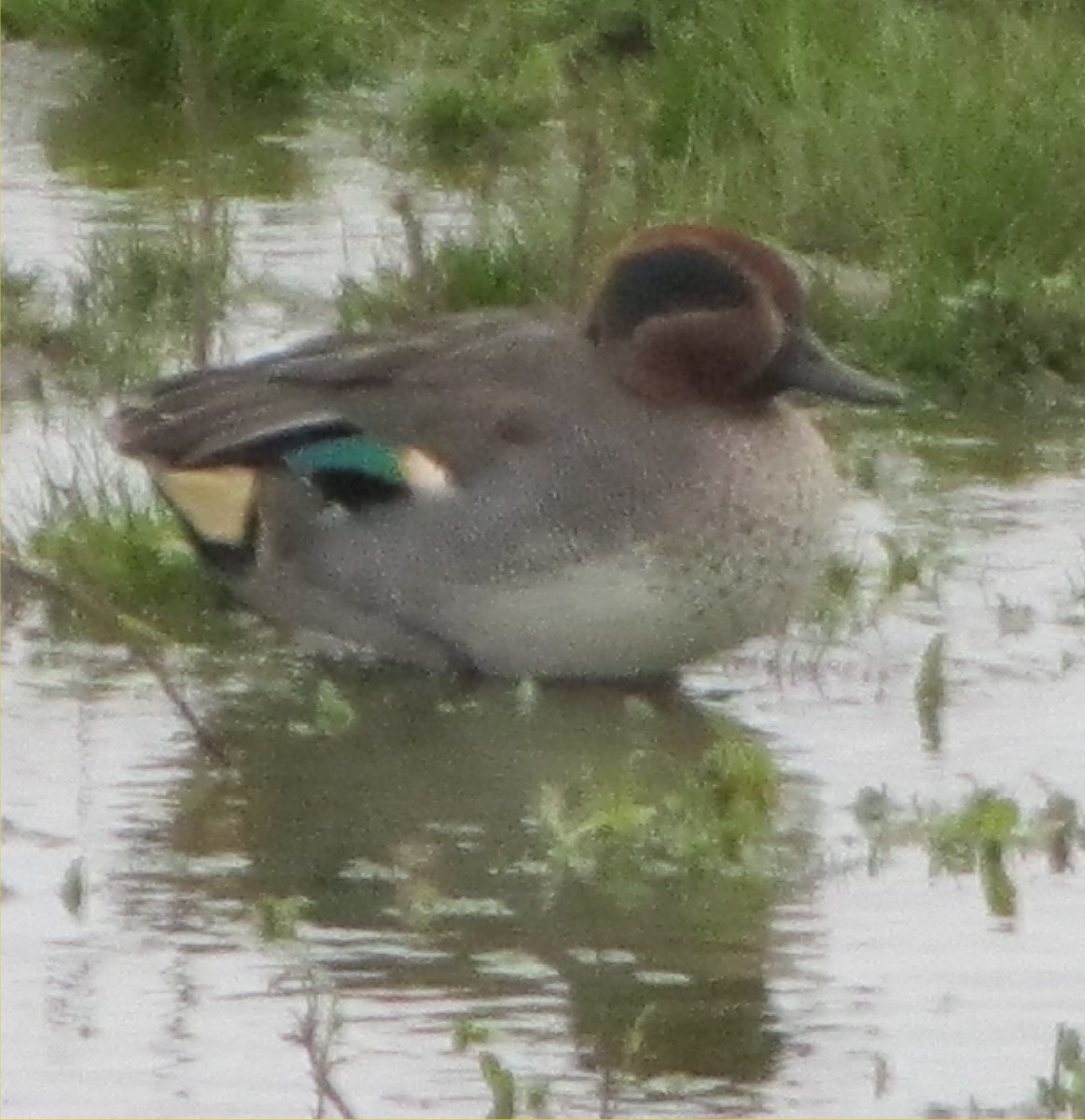
|
| Teal are shy ducks, but there were some females in Buxton park in August 2014. The male was a long distance away at Caerlaverock WWT, October 2011 - we must try to do better! |
Back to bird list
| GARGANEY Anas querquedula |
 |
| A small but elegant duck. These two let us approach quite closely on Sanna Burn, Ardnamurchan, in September 2012. A nice change, for our first sighting of a water bird to be in the wild, rather than a wetland centre! |
Back to bird list
| MALLARD Anas platyrhynchos | |
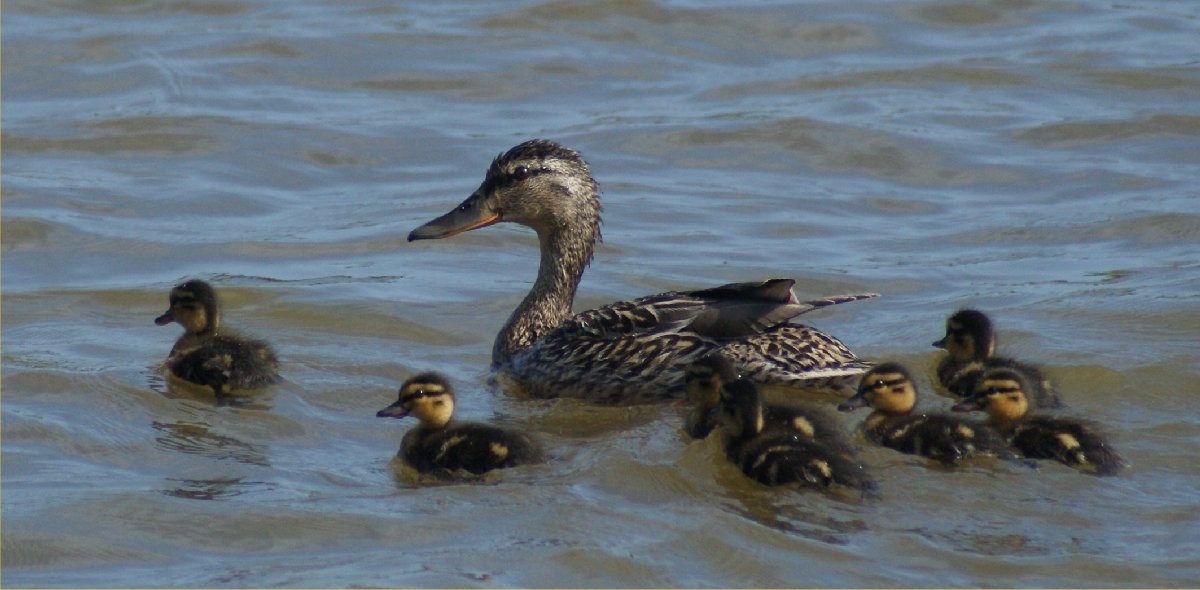 |
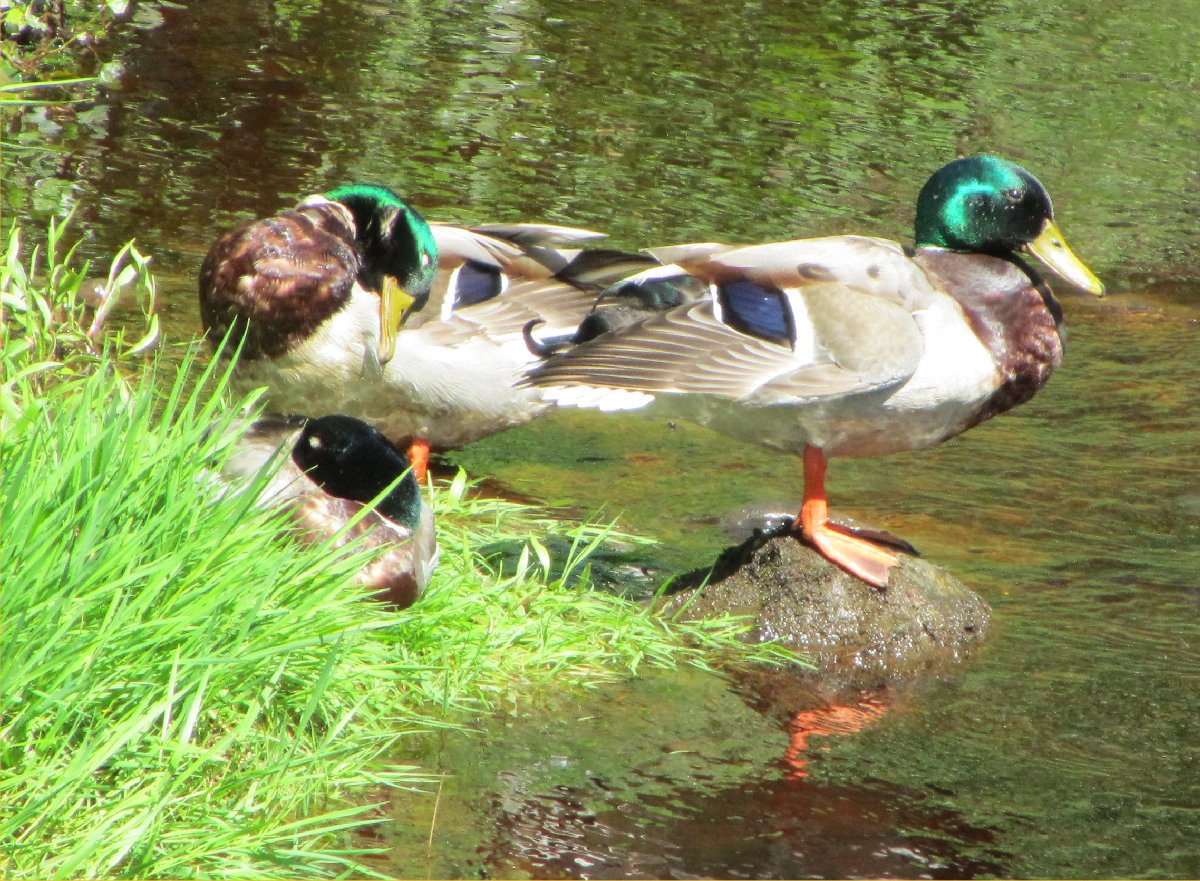
|
| Perhaps under-appreciated, because so common, but the male is really a very striking bird. The female with ducklings was at Hauxley Nature Reserve in June 2012, the males at Tipalt Burn on the Northumberland-Cumbria border in June 2014. |
Back to bird list
| NORTHERN PINTAIL Anas acuta |
 |
| We saw this picturesque group at Washington WWT in January 2013. |
Back to bird list
| TUFTED DUCK Aythya fuligula | |
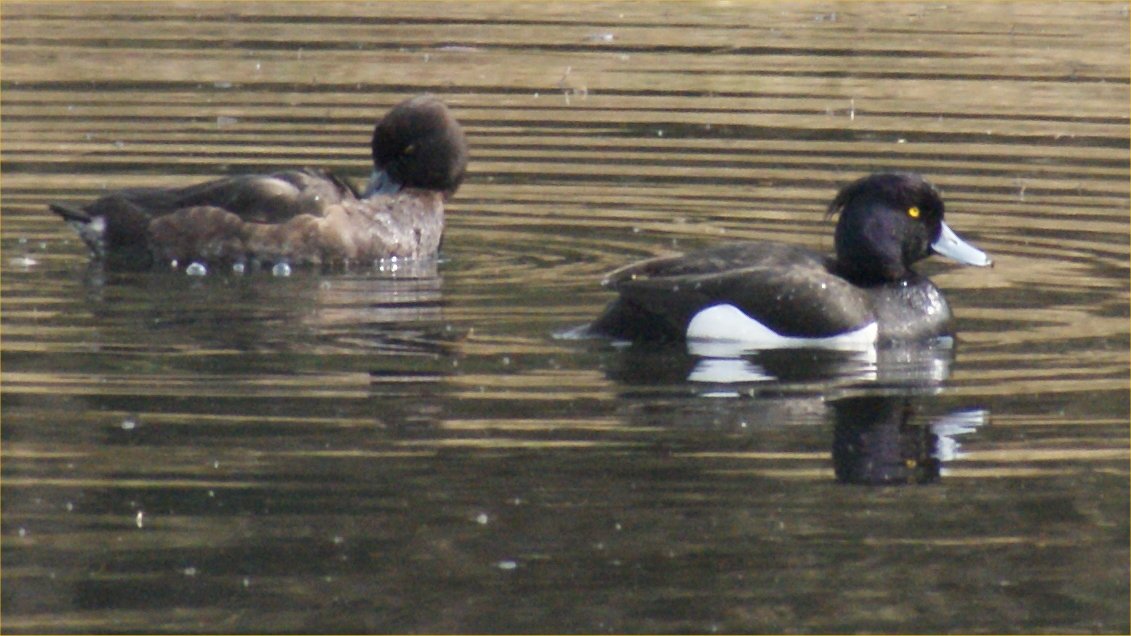 |
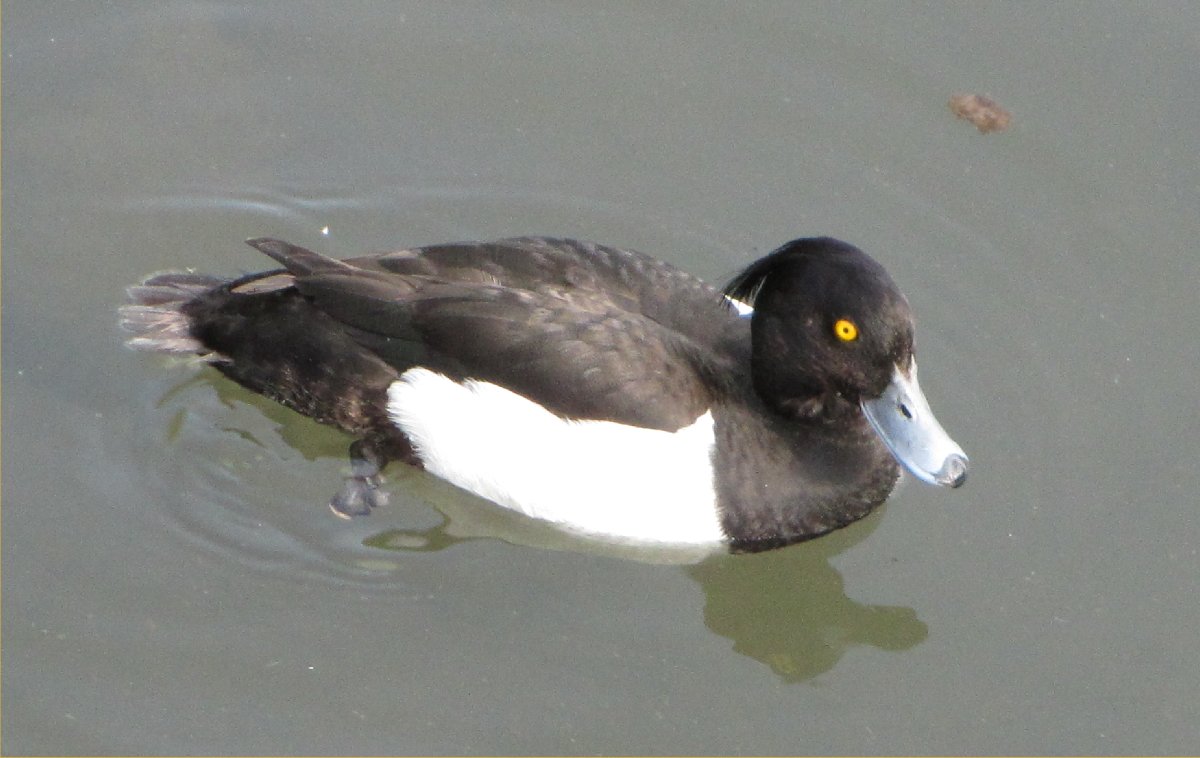
|
| A lively and frequently seen little diving duck; the pair on the left was at Gibside in April 2015, the other on the pond in Cromford, June 2014. |
Back to bird list
| COMMON EIDER Somateria mollissima | |
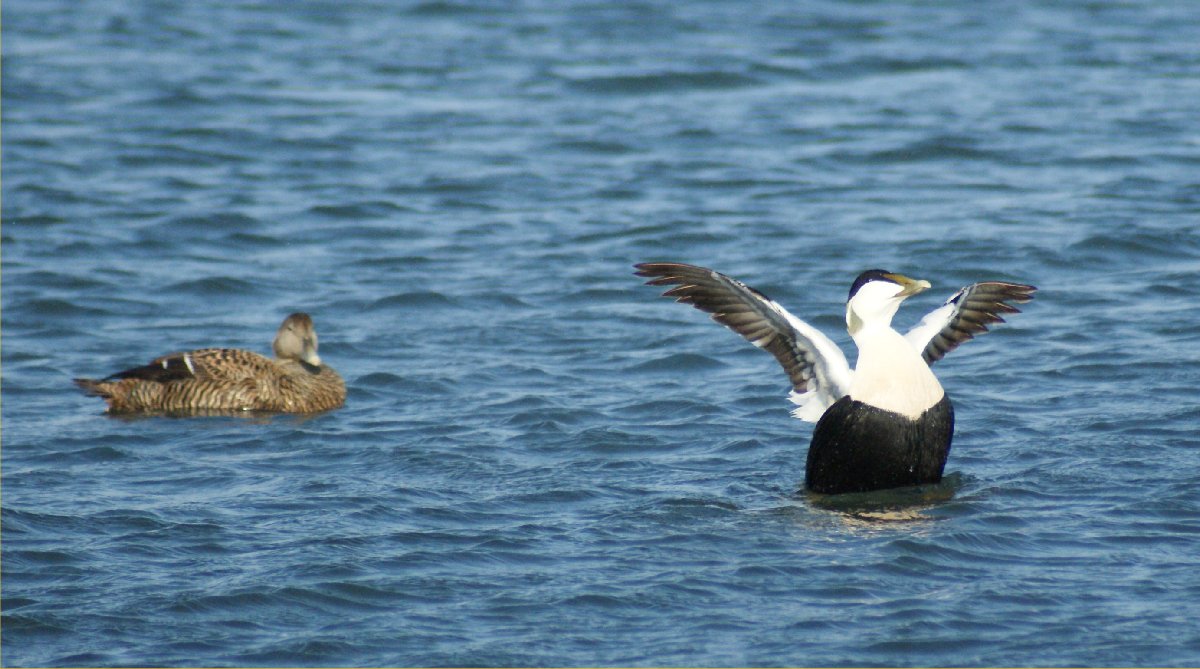 |
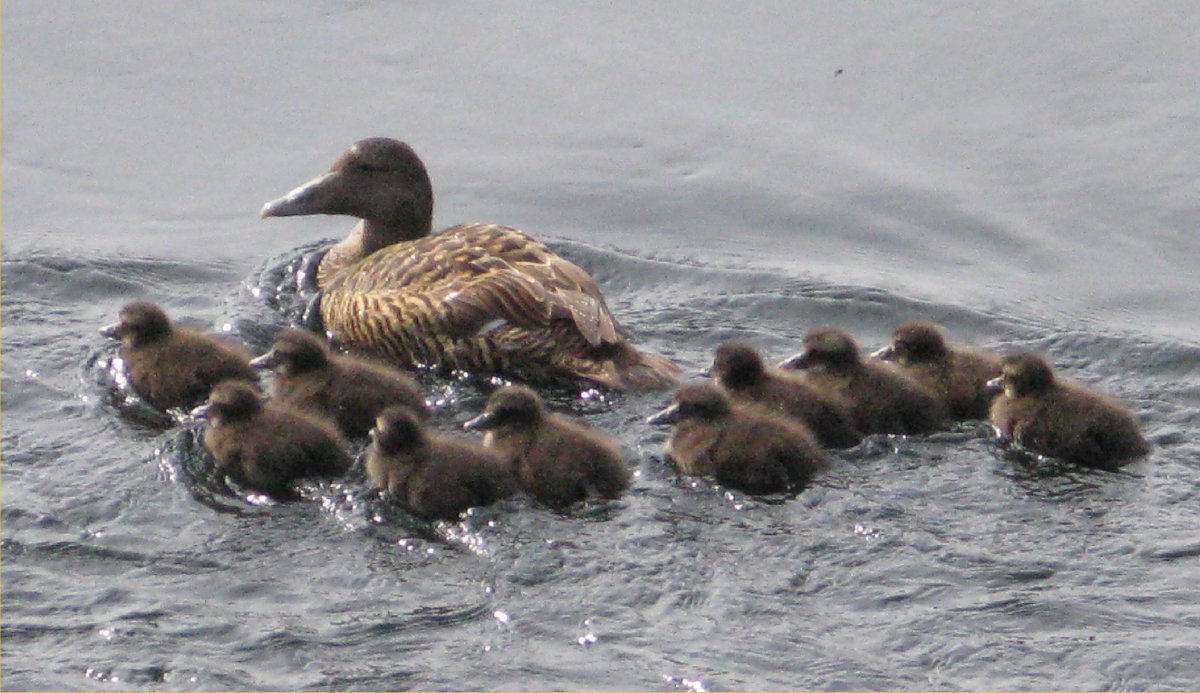
|  |
| Common on the West coast of Scotland and the North-East of England, where they are called 'Cuddy's Ducks', after St Cuthbert, these were seen in Lindisfarne (appropriately) in April 2010, at Connel Bridge, near Oban, in May 2010 and Washington WWT in October 2013. |
Back to bird list
| SMEW Mergus albellus | |
 |

|
| We've never seen this remarkable-looking bird in the wild, though it is on the British list. These two, female on the left, were at Washington WWT in April 2009. |
Back to bird list
| GOLDENEYE Bucephala clangula | |
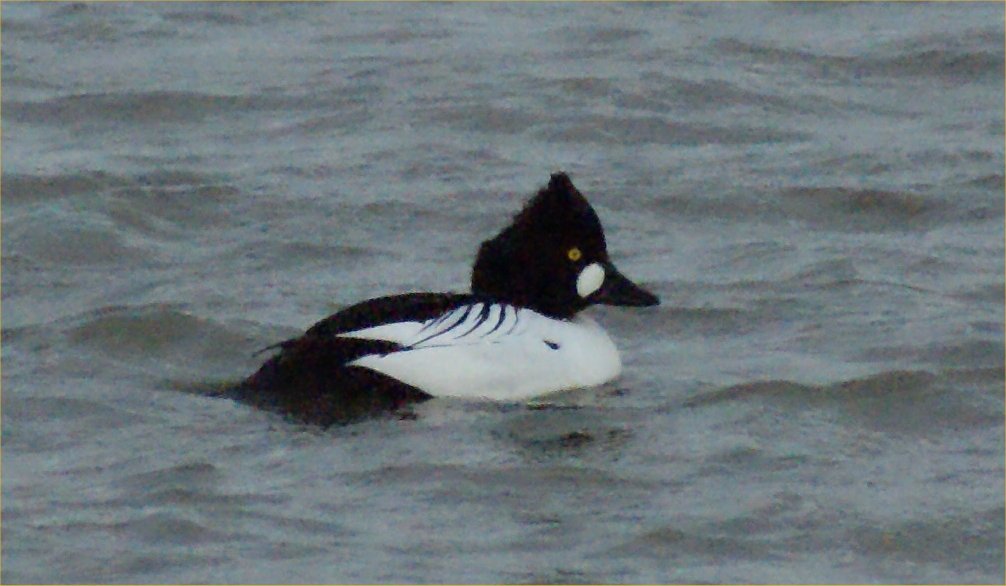 |
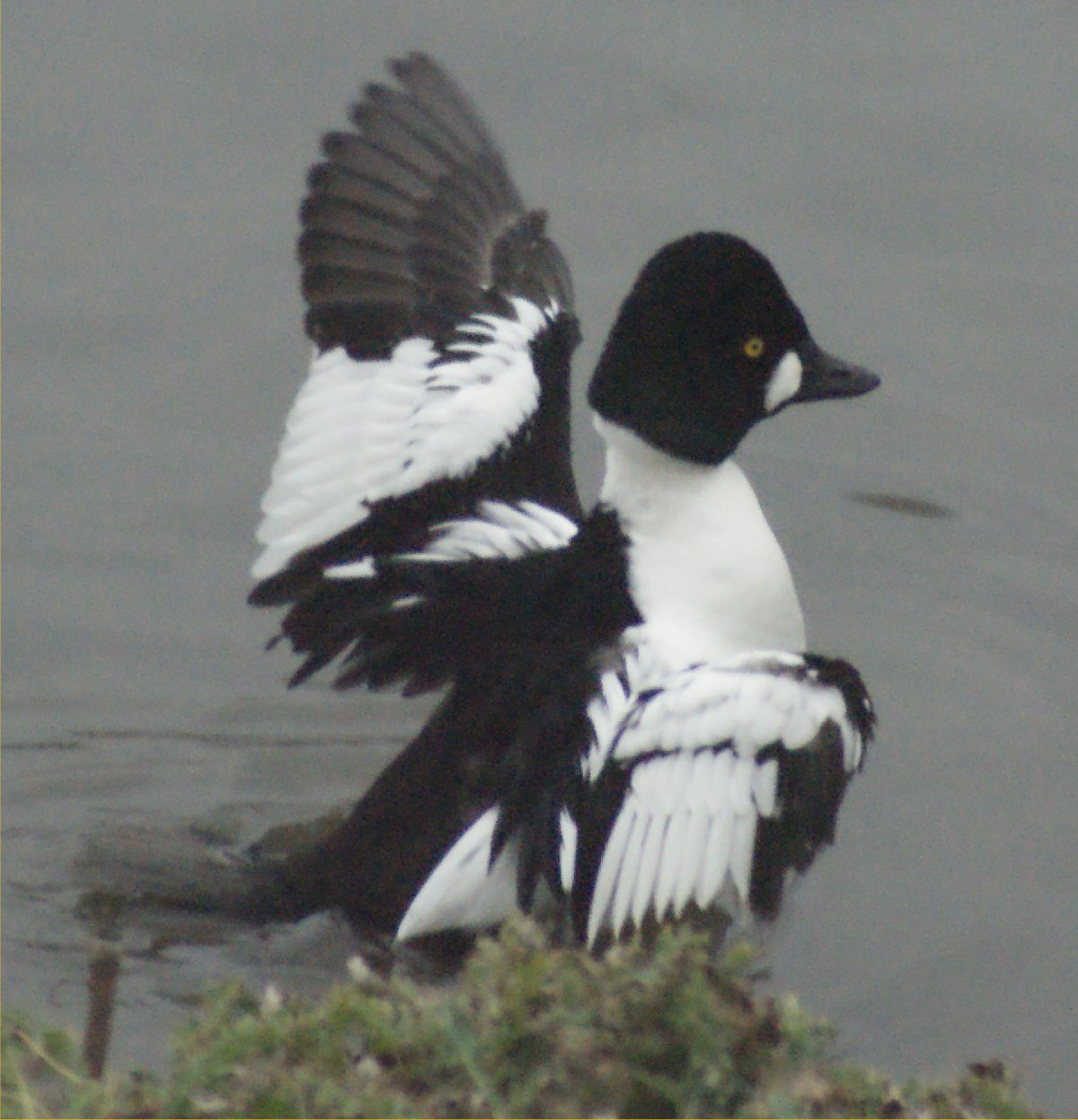
|
| A very distinctive bird which we often see in the wild, though these two were at Hauxley Nature Reserve (February 2009) and Washington WWT (November 2012) repectively. |
Back to bird list
| RED-BREASTED MERGANSER Mergus serrator |
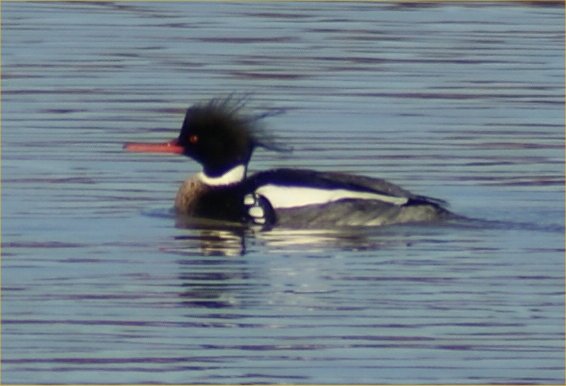 |
| We rarely visit places remote enough to see these in the wild, but were fortunate when one visited Hauxley Nature Reserve in January 2010. The hairstyle is even more extravagant than the female Goosander. |
Back to bird list
| GOOSANDER Mergus merganser | |
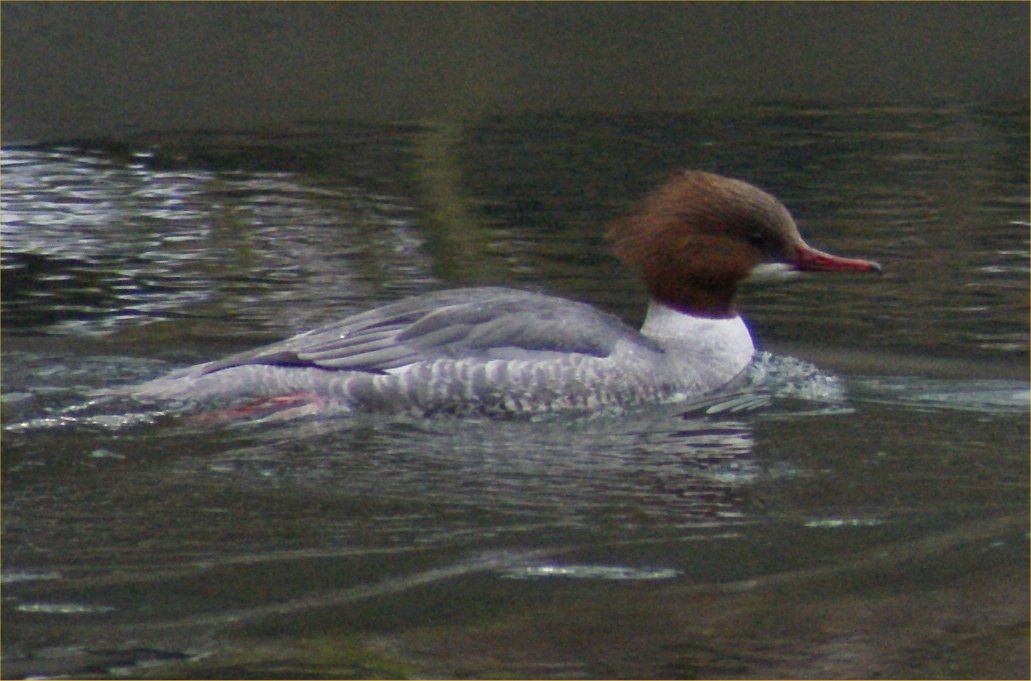 |
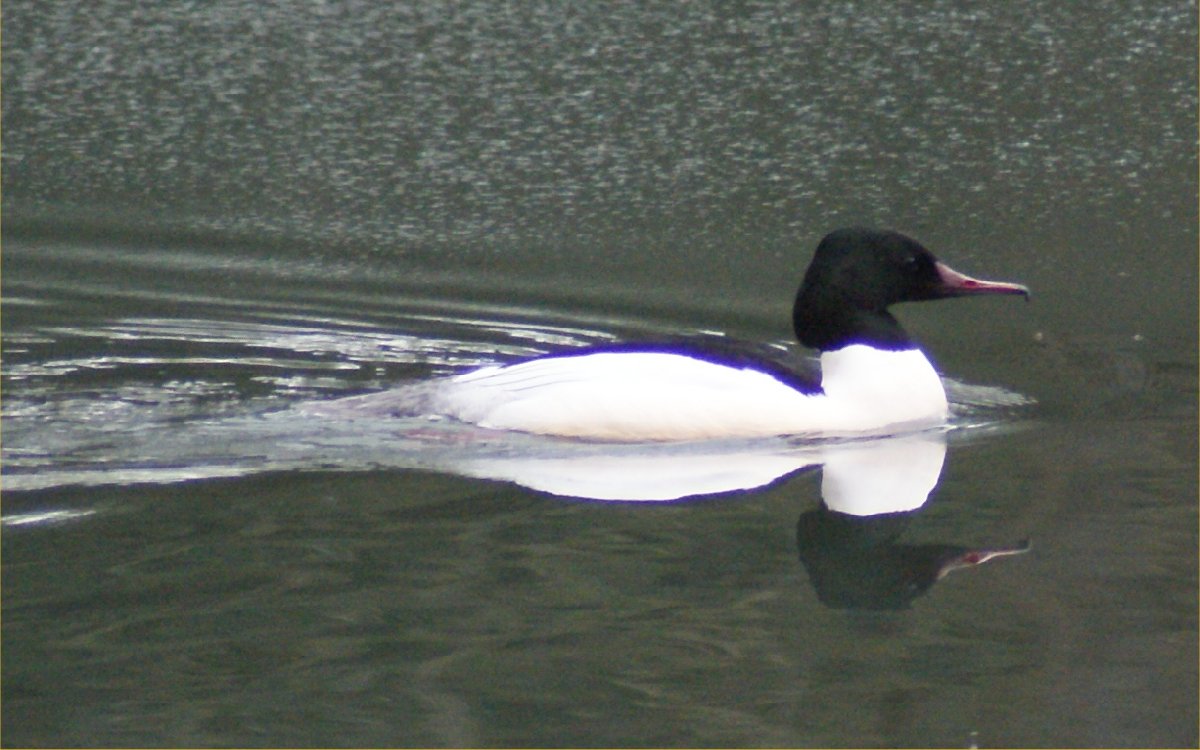
|
| Very common on the Tyne and occasionally on our local reservoir, though rarely near enough for a good photo. This pair (female on the left, with characteristic punk hair-style) were on a pond in Wallington in March 2013. |
Back to bird list
| RED KITE Milvus milvus |
 |
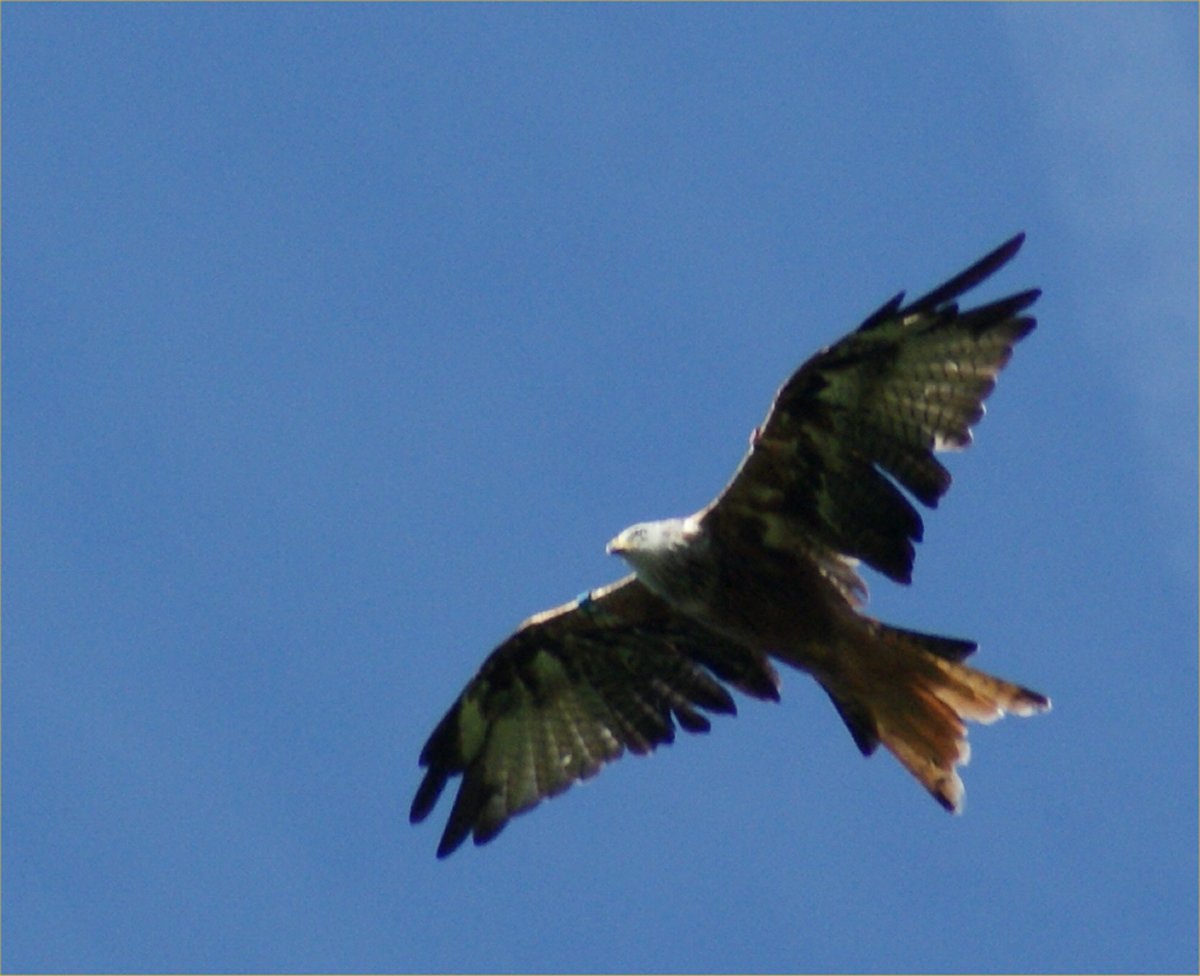 |
| The bird on the left was at Cliveden in November 2016. Tony knew they only eat carrion and small creatures, so he didn't find it too threatening! The right-hand one was taken in August 2016 at Gibside, where they were first released in 2006. |
Back to bird list
| EUROPEAN SPARROWHAWK Accipiter nisus | |
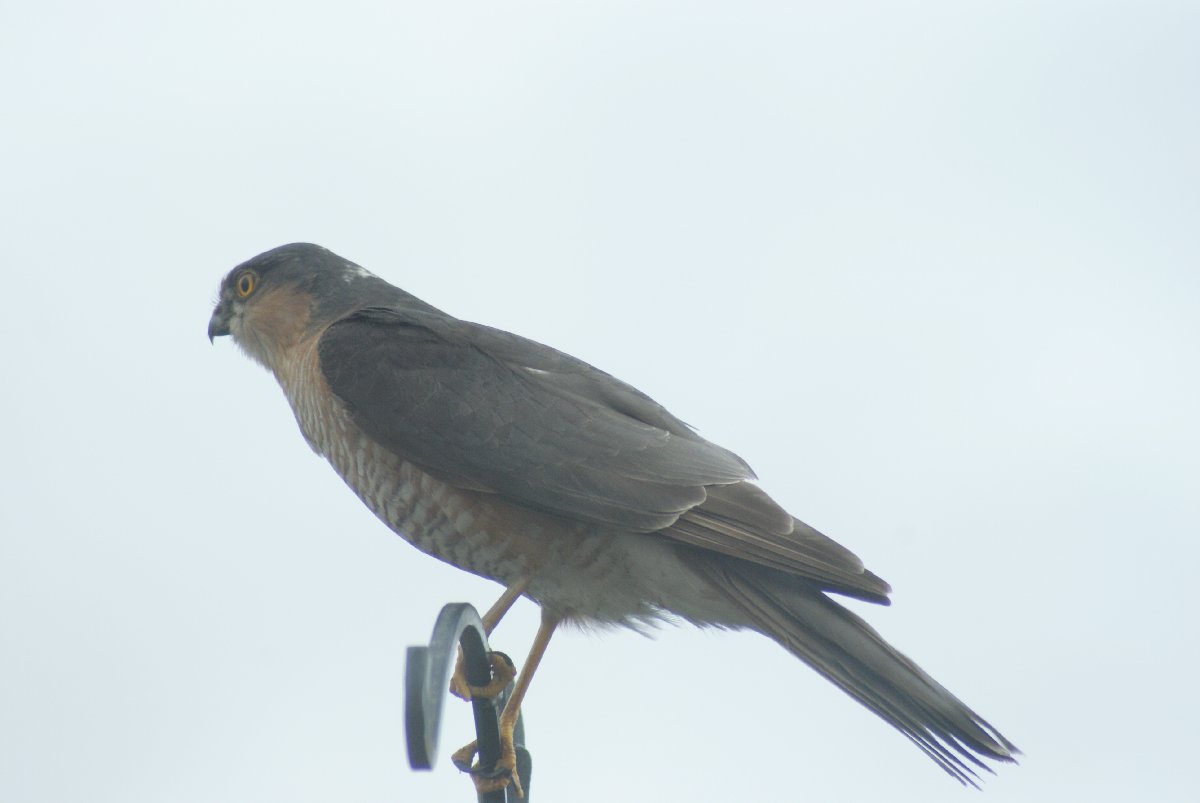 |
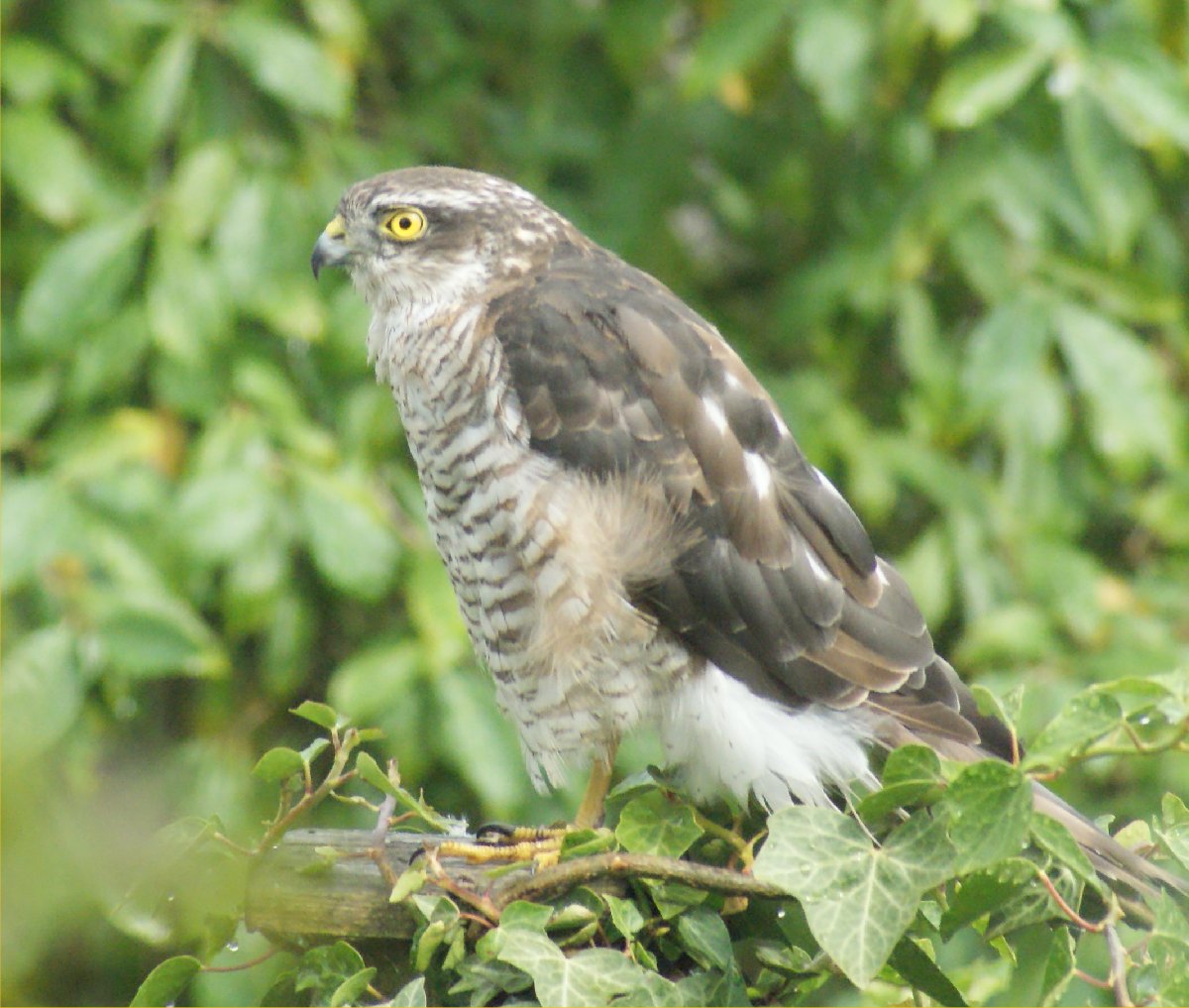
|
| We've seen two of these fearsome predators on our patio, presumably waiting for our usual visitors to come to the feeders. The male on the left came in July 2010, the juvenile earlier the same month. |
Back to bird list
| COMMON BUZZARD Buteo buteo |
 |
| Common they might be, but they usually fly high and are difficult to snap. This one was in Portuairk, Ardnamurchan, in September 2012. |
Back to bird list
| COMMON KESTREL Falco tinnunculus |
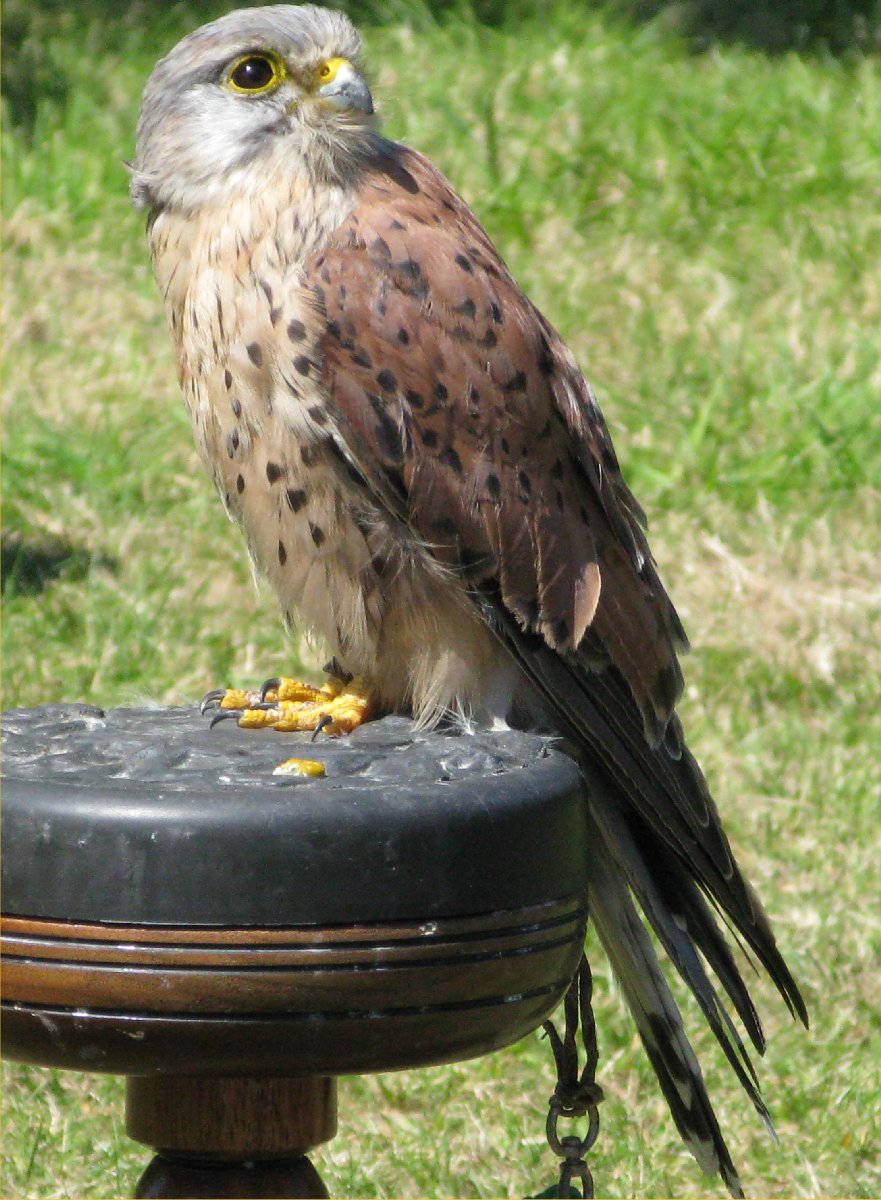 |
| Of a species very difficult to approach in the wild, this male was in a bird of prey exhibition on Lindisfarne in June 2009. |
Back to bird list
| RED GROUSE Lagopus lagopus | |
 |
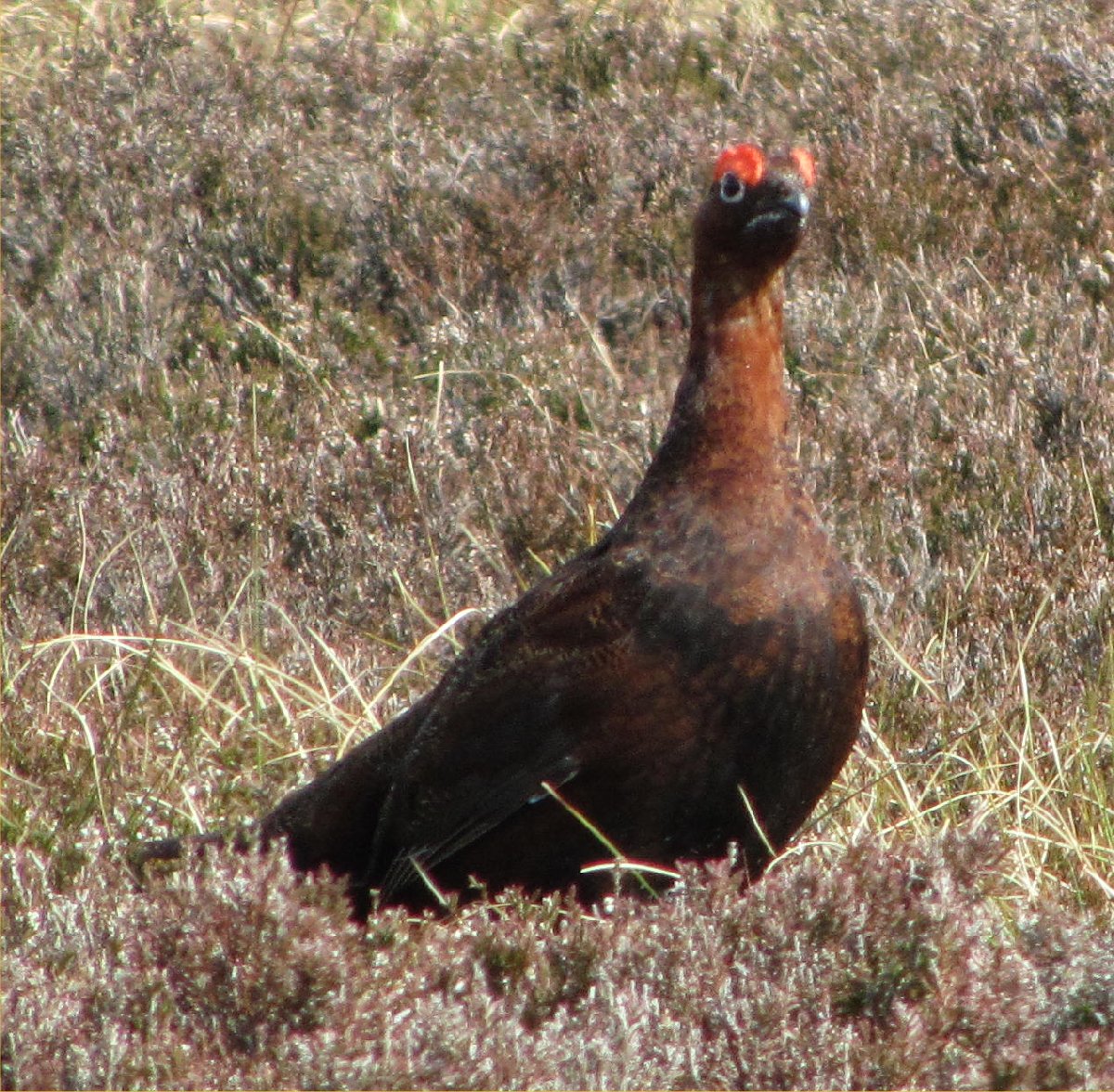
|
| It's rare for us not to see at least one of these when crossing the moors in County Durham. The left hand one was indeed near Blanchland in April 2009, the other in similar terrain in Teesdale, May 2011. |
Back to bird list
| COMMON PHEASANT Phasianus colchicus | |
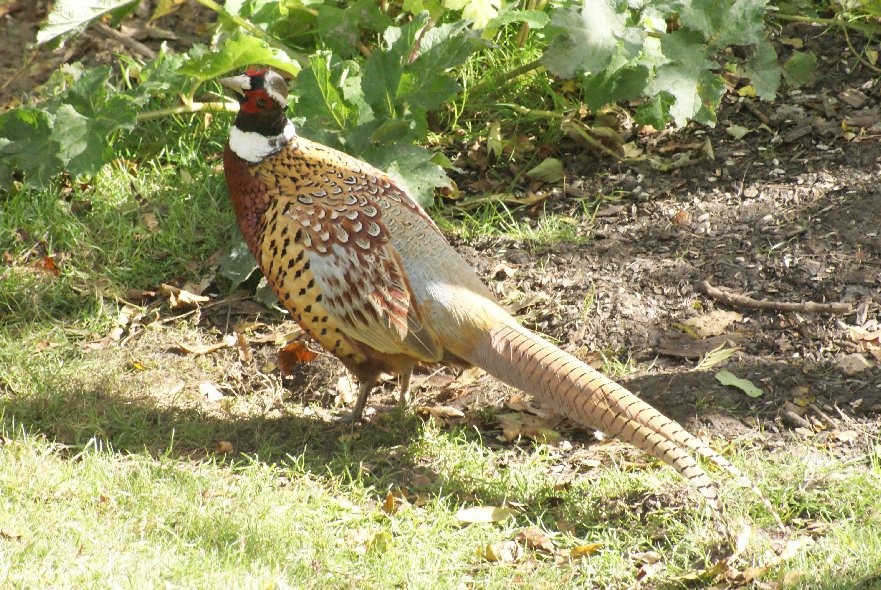 |
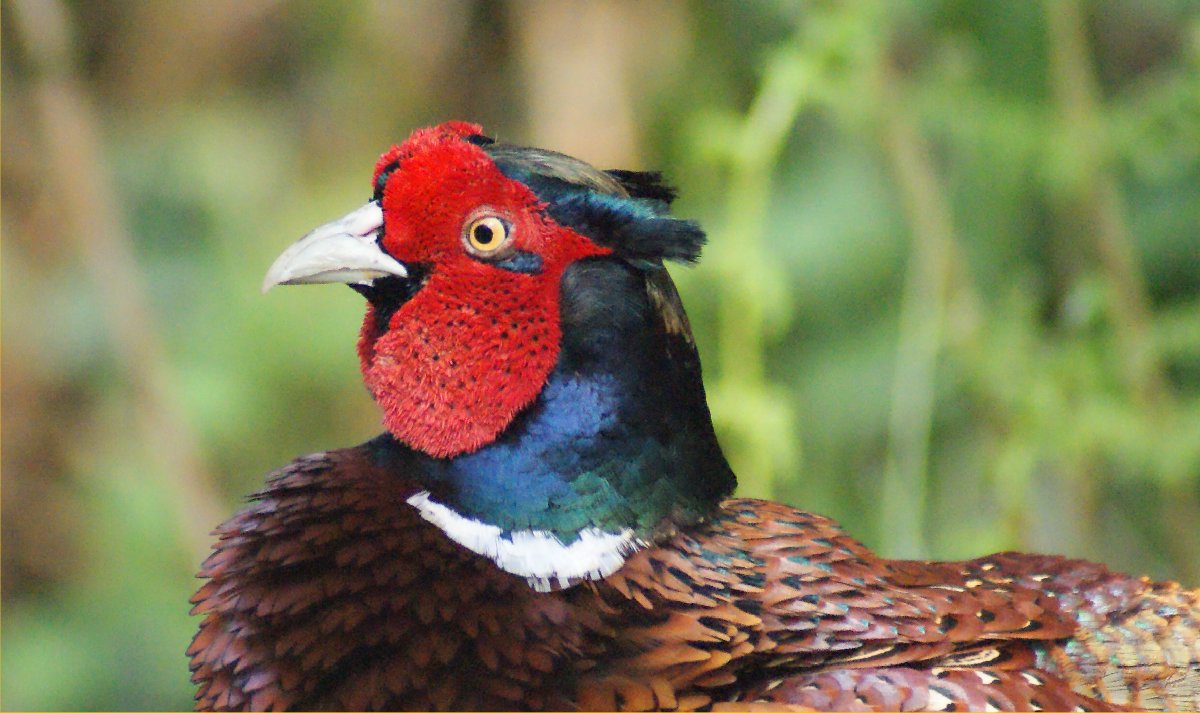
|
| Beautiful but very stupid birds, as any motorist will testify, the male on the left was at Washington WWT in October 2011, the other at Wallington April 2009. |
Back to bird list
| MOORHEN Gallinula chloropus | |
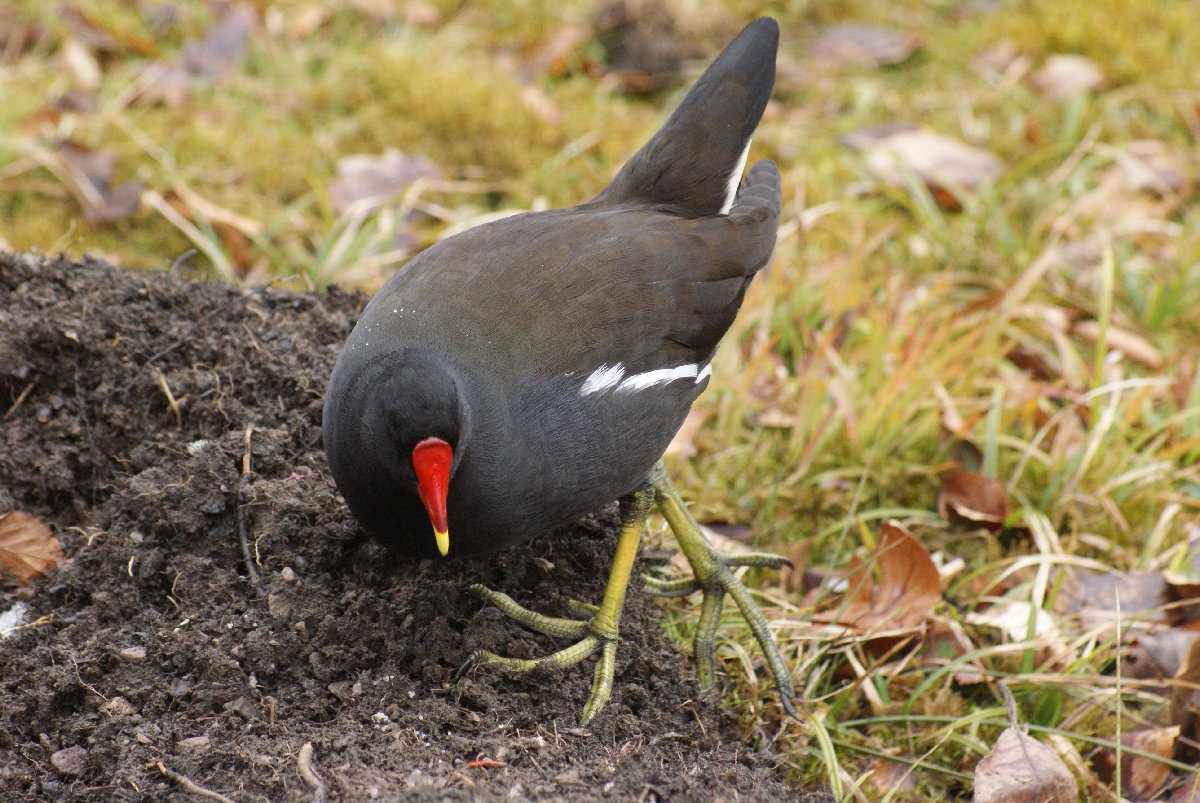 |
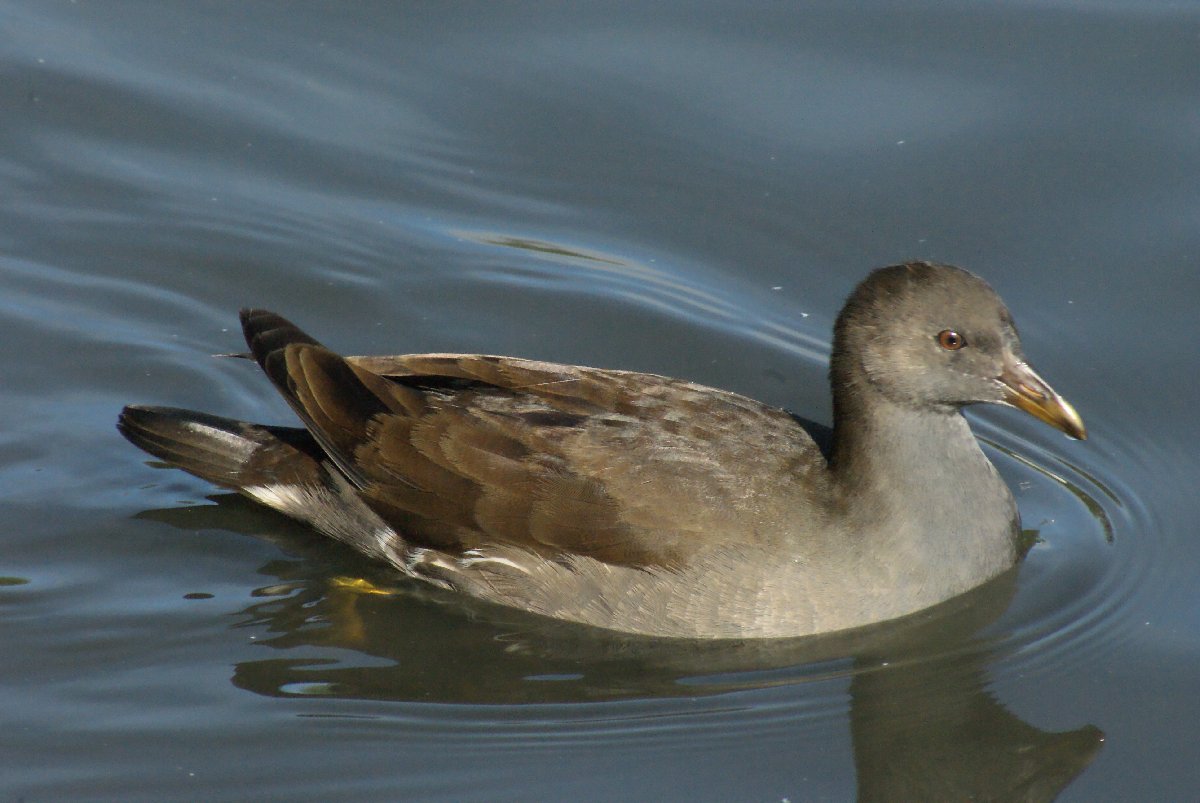
|
| Common, feisty and often entertaining birds, the adult on the left was at Wallington in March 2013, the juvenile in Washington WWT in September the same year. |
Back to bird list
| COMMON COOT Fulica atra | |
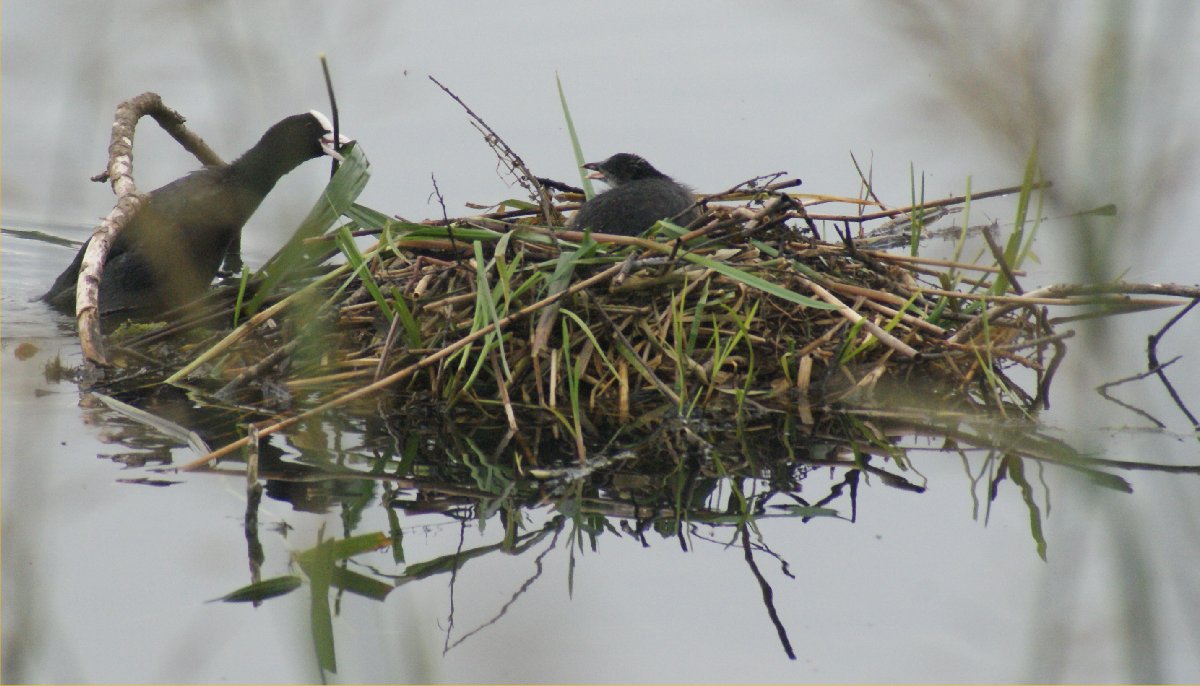 |

|
| We came across this nest, with a chick, at Linlithgow Palace in August 2013. |
This one let us approach very close, at Washington WWT in March 2013. Look at those amazing feet! |
Back to bird list
| EURASIAN CRANE Grus grus | |
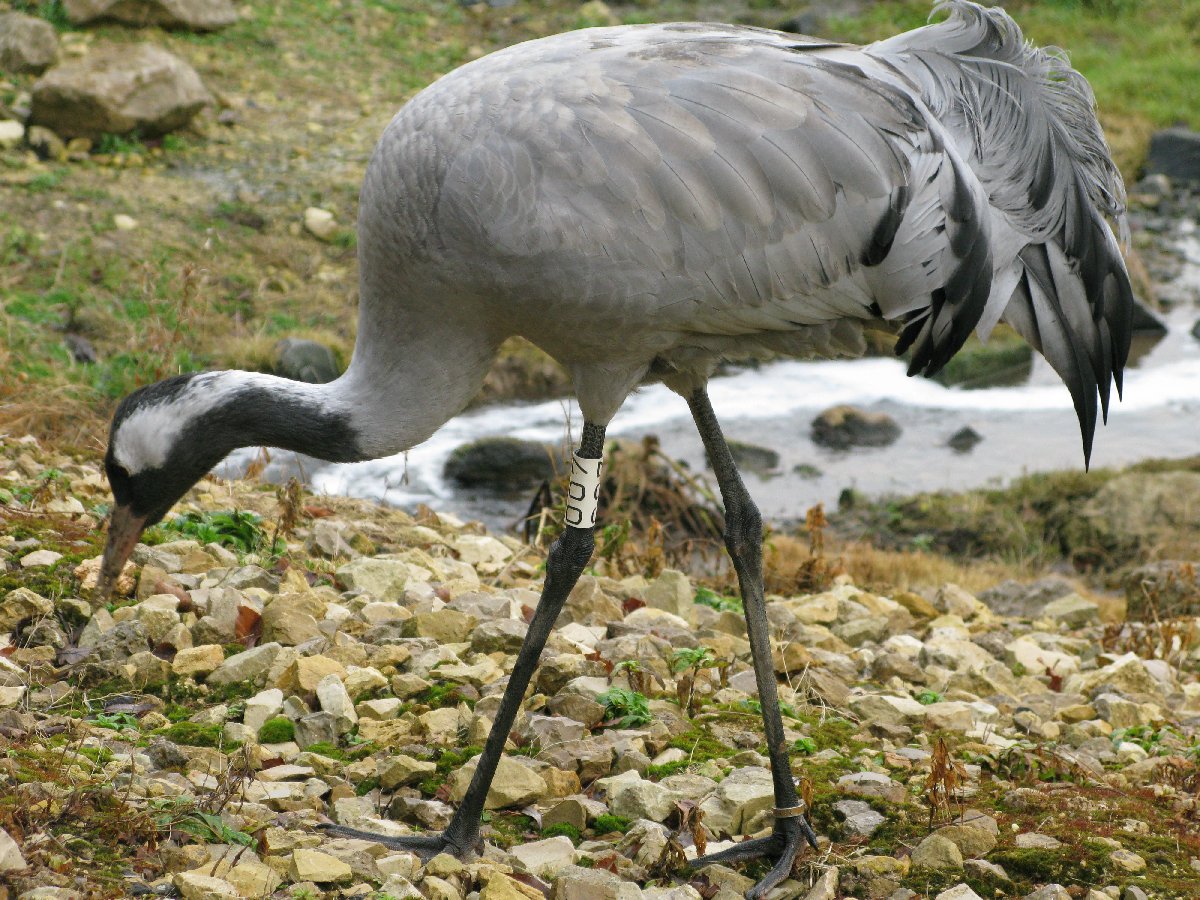 |
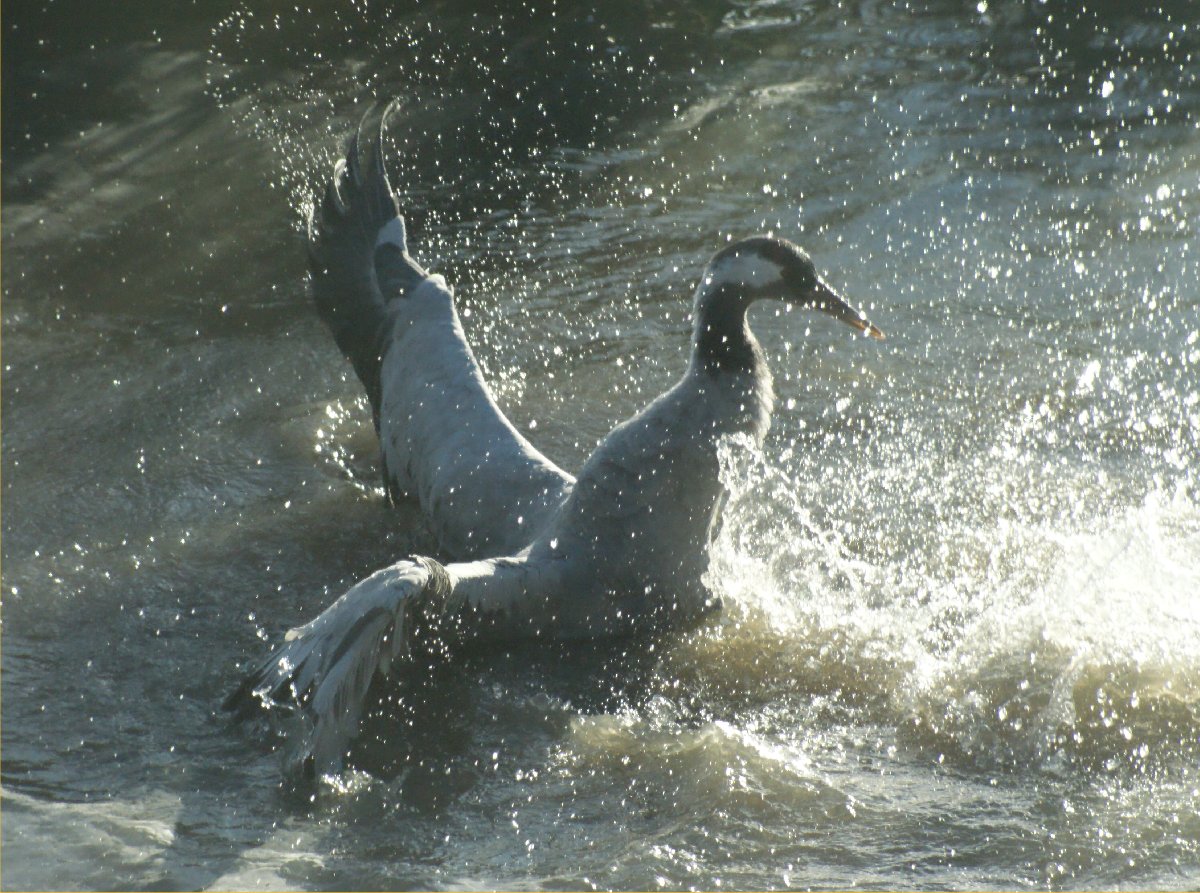
| 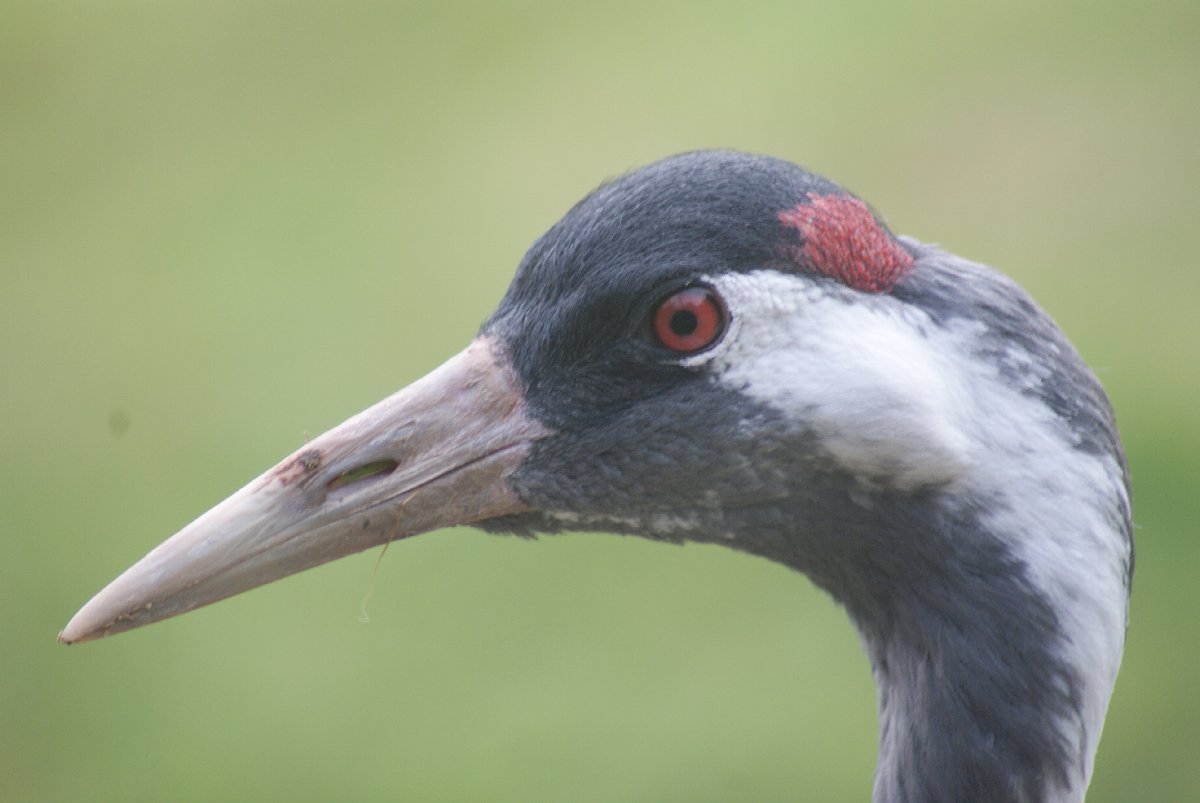
|
| Although a few are now breeding in the wild, back from 400 years of extinction in the UK, the ones we see are at Washington WWT. These were photographed in January 2009, November 2012 and November 2011 respectively. |
Back to bird list
| OYSTERCATCHER Haematopus ostralegus | |
 |

|
| Feisty and noisy, these appealing birds fly over us on holiday and even at home, when they come up the Tyne to nest on moorland. The noisy neighbour on the left was on Tur Ness, Shetland, in July 2013, the apparently quieter one, caught between squawks, at Sanna, Ardnamurchan in July 2015. |
| We were at Washington WWT in May 2010 when there was a commotion on the island in the wader lake. Tony pointed the camera and clicked, to find he had captured an oystercatcher mobbing a juvenile Grey Heron. The much bigger bird flew off immediately! The Mallards look interested, if a bit disdainful. |
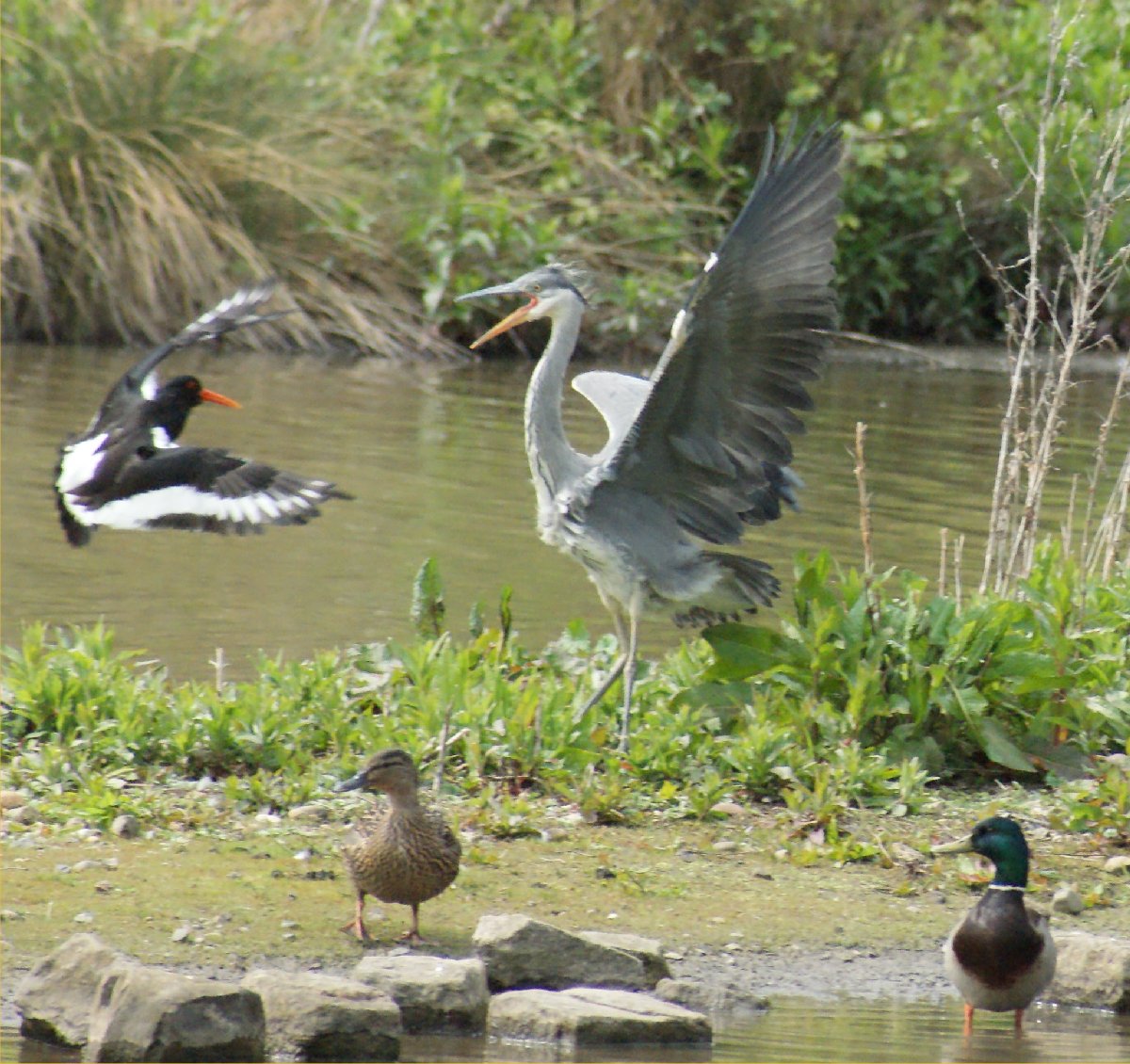
|
Back to bird list
| AVOCET Recurvirostra avosetta | |
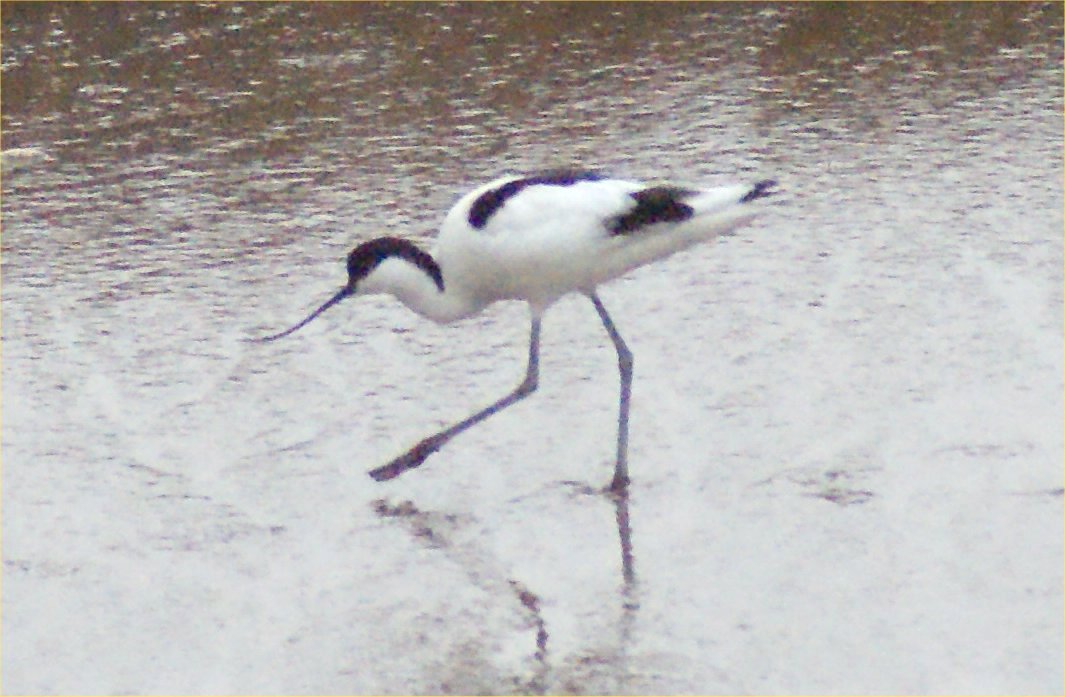 |

|
| Avocets used to be a symbol of disappearing UK species but are now reappearing all over the place. We saw the one on the left at Norton Marsh on the N Norfolk coast in April 2012, the one on the right at Washington WWT in July 2014. |
Back to bird list
| RINGED PLOVER Charadrius hiaticula | |
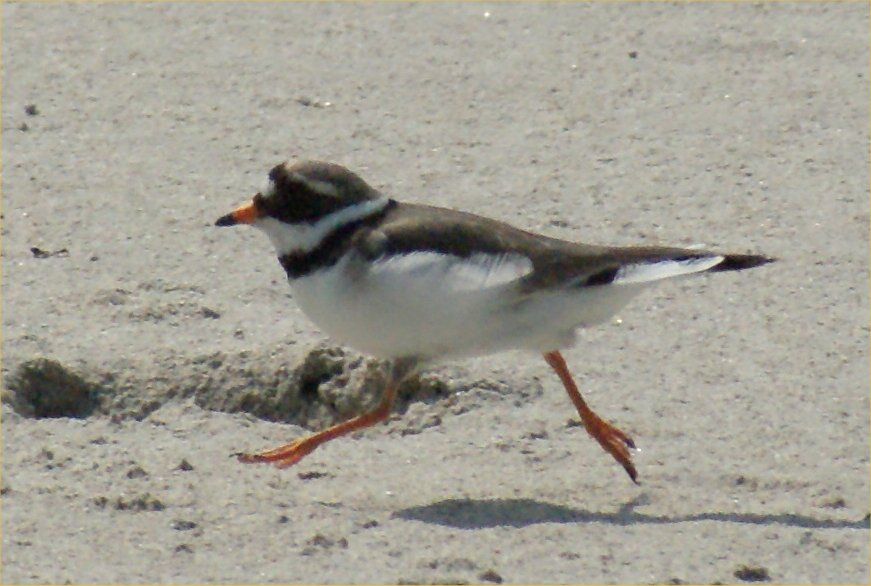 |
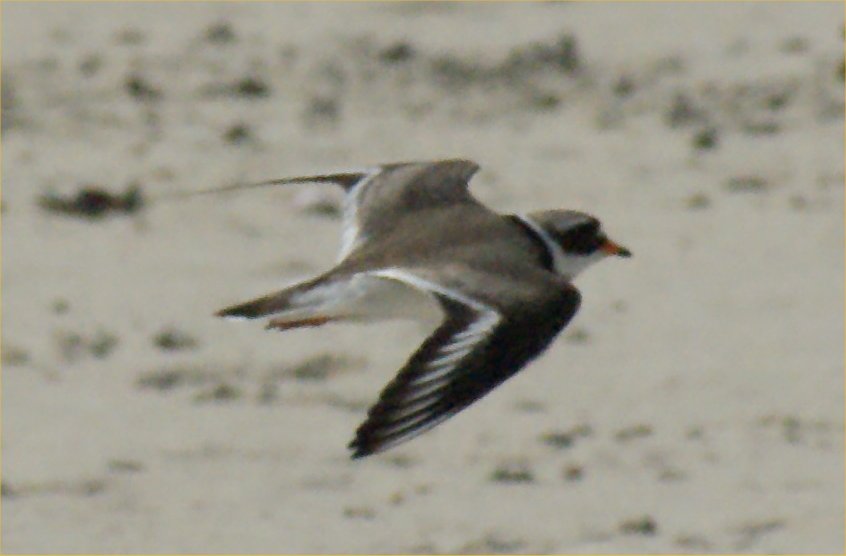
|
| Shy and often difficult to approach, this one was bolder than usual, on Erraid in May 2010. |
Back to bird list
| EUROPEAN GOLDEN PLOVER Pluvialis apricaria |
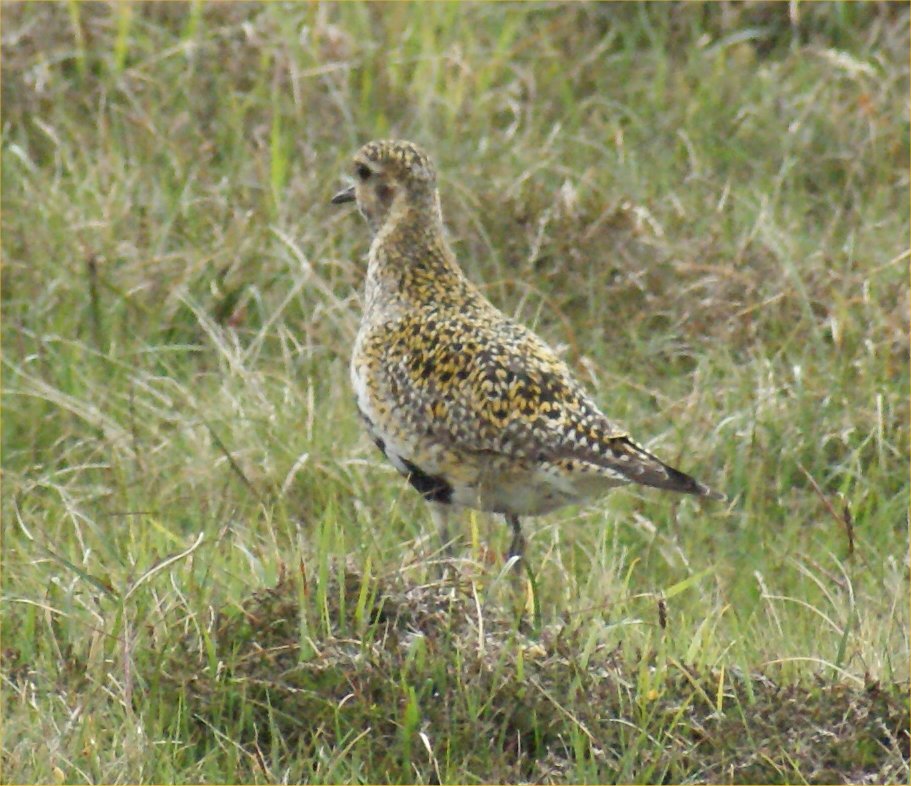 |
| Often spotted on moorland in the North-East, though this one was on Herma Ness in Shetland in June 2010. |
Back to bird list
| LAPWING Vanellus vanellus | |
 |

|
| Though increasingly scarce elsewhere, we see these quite frequently, both at home and on holiday. Their 'pee-wit' call is a delight to hear when the weather encourages moorland walks. The flying bird was on North Uist in May 2012, the other in Teesdale in June 2011. |
Back to bird list
| SANDERLING Calidris alba | |
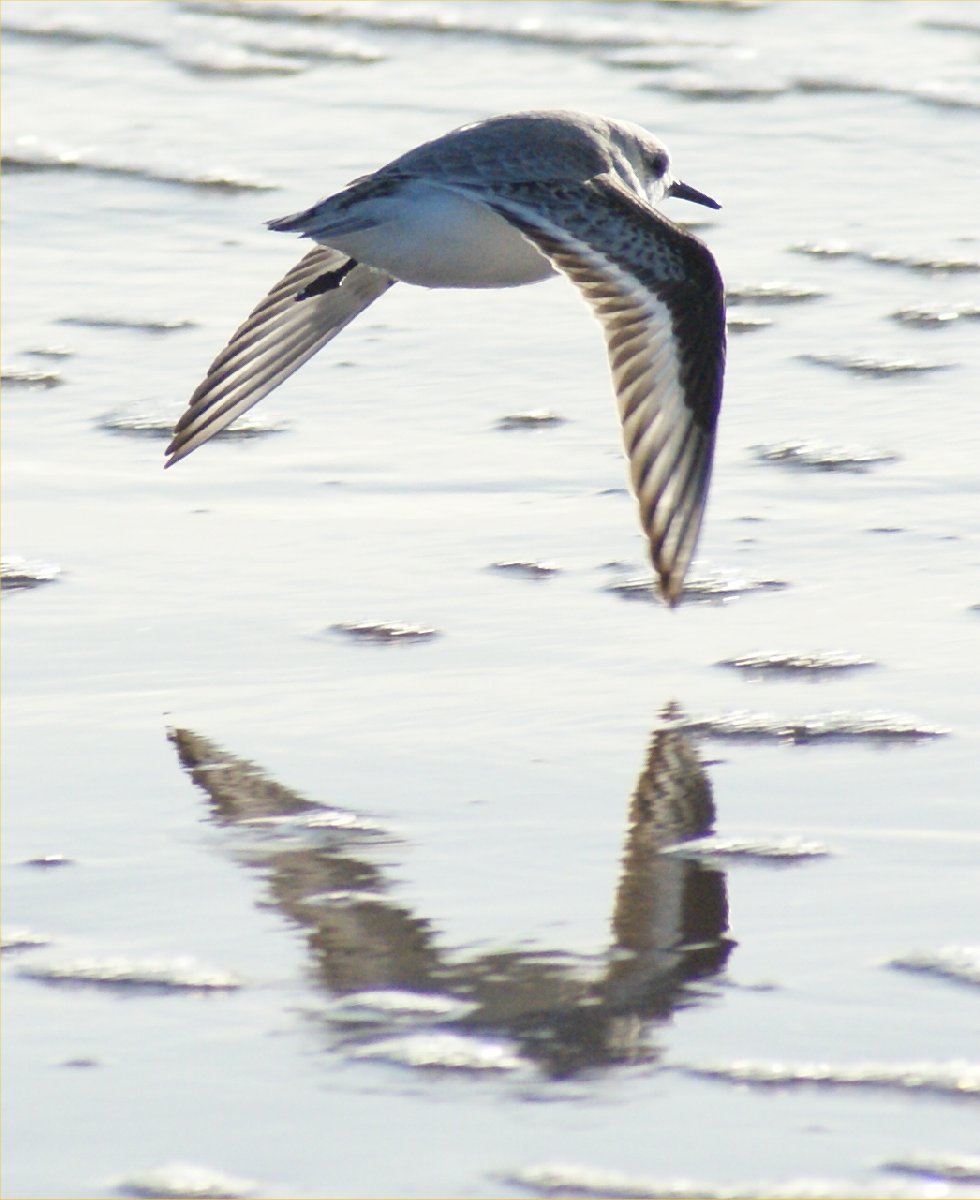 |
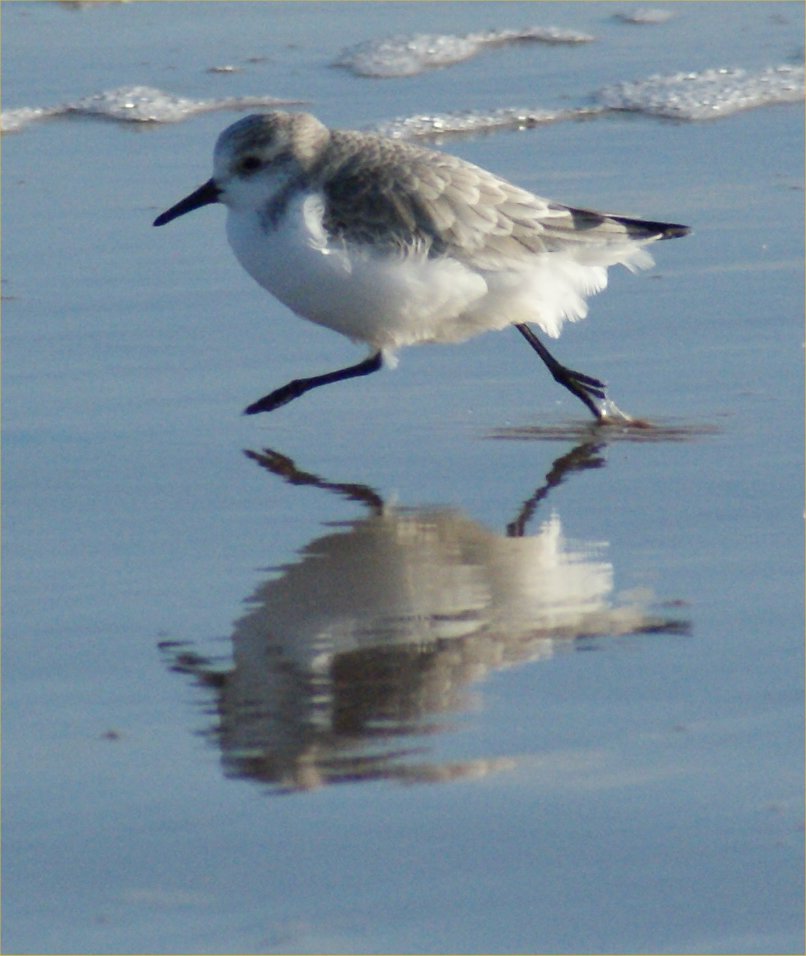
|
| We often see these on the sea's edge at Druridge, this one, probably a juvenile, in January 2014. |
Back to bird list
| COMMON SNIPE Gallinago gallinago |
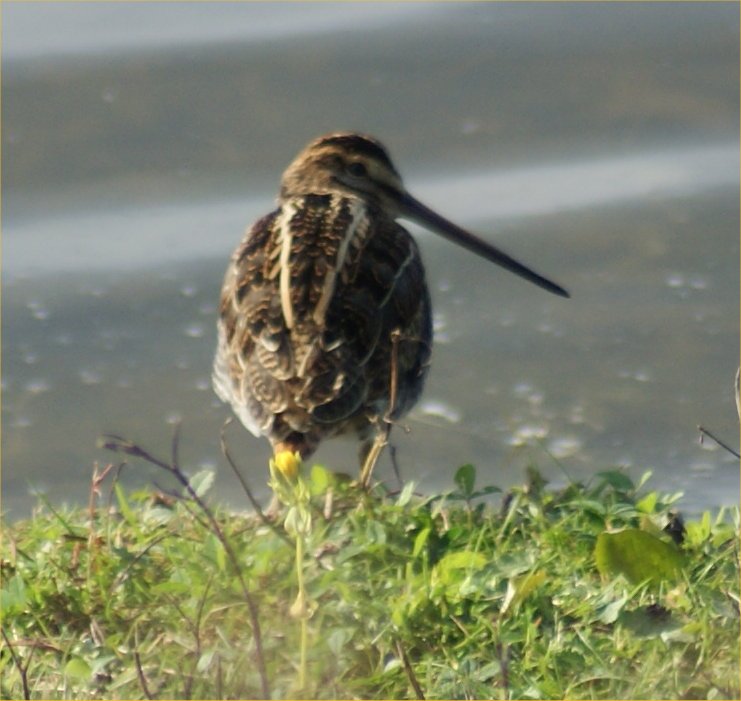 |
| Seen not infrequently, but rarely near enough to photograph. This individual was walking along the bank just below a hide in Hauxley Nature Reserve in October 2008. |
Back to bird list
| WHIMBREL Numenius plaeopus | |
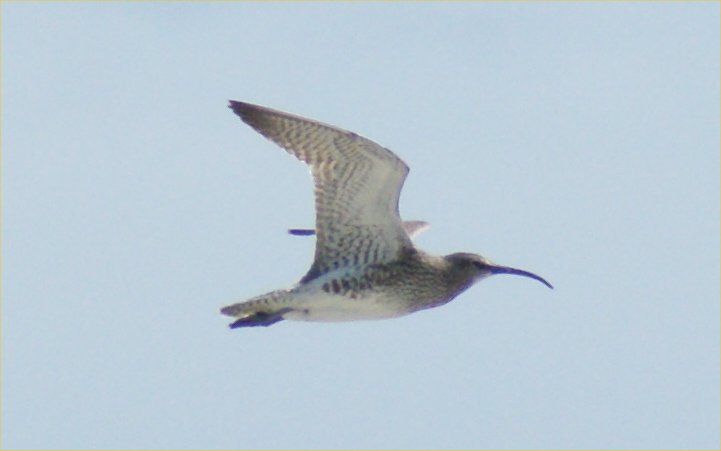 |

|
| We're pretty sure this bird, photographed on North Uist in May 2012, is a Whimbrel and not a Curlew, from its size and bill shape, but do tell us if we're wrong. |
Back to bird list
| EURASIAN CURLEW Numenius arquata | |
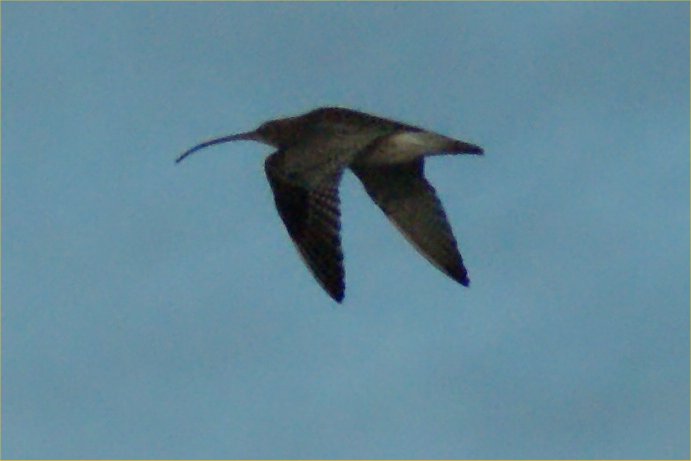 |

|
| We photographed this moorland and waterside bird at Druridge Bay in November 2008 and Cley in November 2014. |
Back to bird list
| COMMON REDSHANK Tringa totanus | |
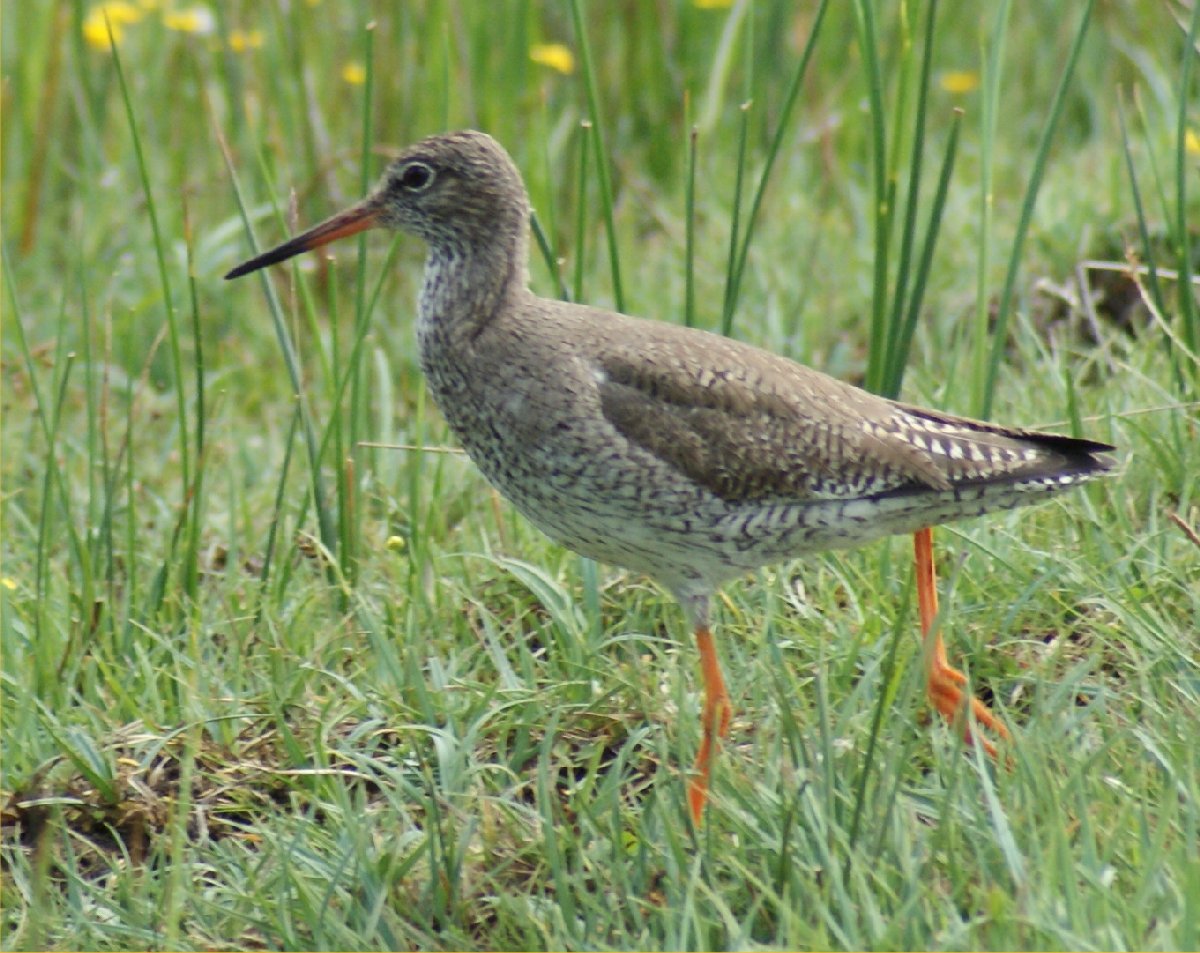 |
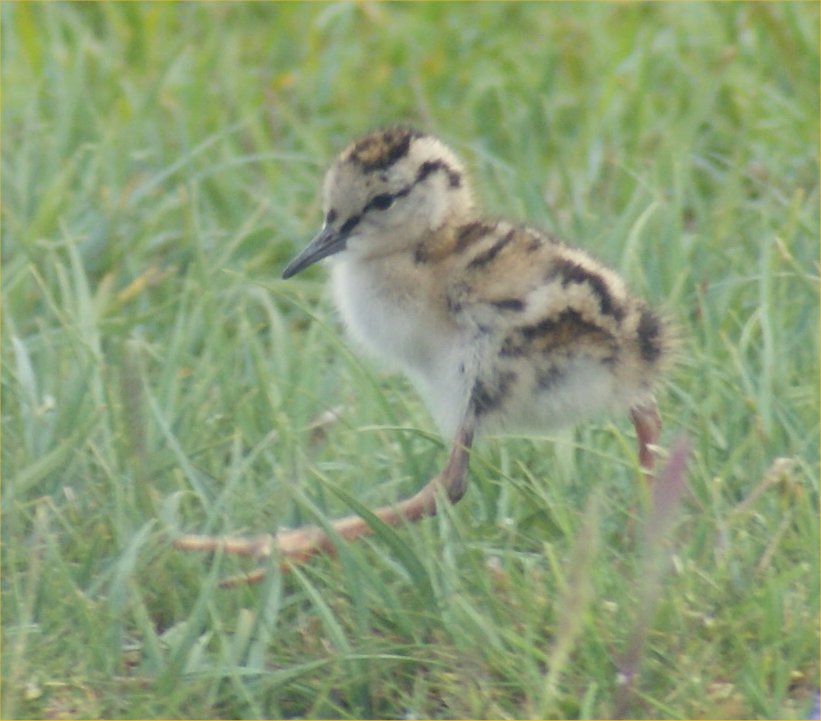
|
| Though usually regarded as a shoreline bird, Redshanks breed inland. These two, parent and child, were by the river Tees in June 2009. Look at the size of the chick's feet! |
Back to bird list
| GREENSHANK Tringa nebularia |
 |
| We've seen very few of these summer visitors. This one was at Hauxley Nature Reserve in August 2009. |
Back to bird list
| TURNSTONE Arenaria interpres | |
 |
 |
| The group on the left was at Druridge in February 2009. There really are two in the right-hand picture, just to the left of the centre, one facing slightly away and to the right, the other behind it, facing left. There's a Dunlin too, further to the right. We saw these (with difficulty!) in North Uist in May 2012. |
Back to bird list
| ARCTIC SKUA Stercorarius parasiticus | |
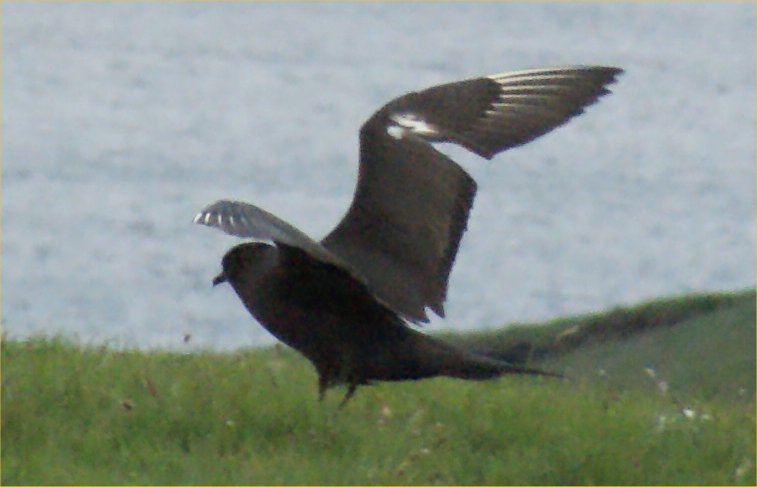 |
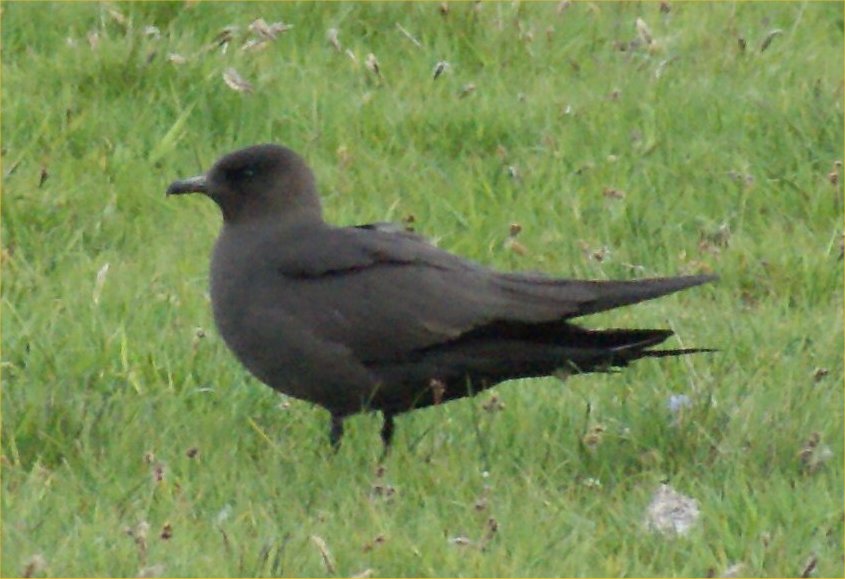
|
| Arctic Skuas are shyer than Great Skuas, and this is the nearest we could get to one, on St Ninian's Isle, Shetland, June 2010 |
Back to bird list
| GREAT SKUA Stercorarius skua | |
 |

|
| We've had several encounters with these birds of ill-repute during visits to Shetland. Also known as bonxies, they are rewarding photographic subjects, prepared to fly quite near and to allow us to approach closely. These two were at Herma Ness in June 2010. |
 |
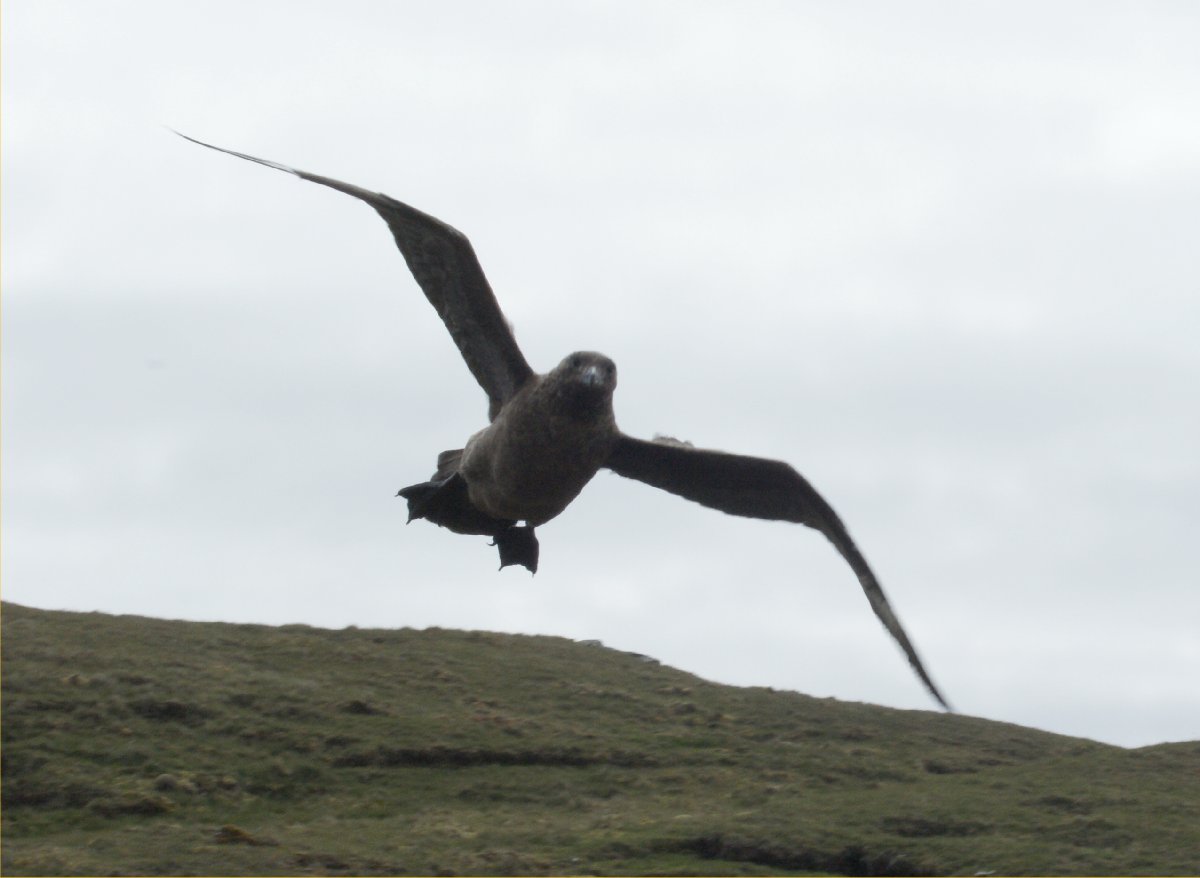
|
| We observed some behaviour too: an argument between a pair, also at Herma Ness, and a spectacular attack when Tony ventured too near a nesting sight in Fethaland the day before. Fortunately, bonxies rarely draw blood, though the bluff is quite intimidating. |
Back to bird list
| BLACK-HEADED GULL Larus ridibundus | |
 |
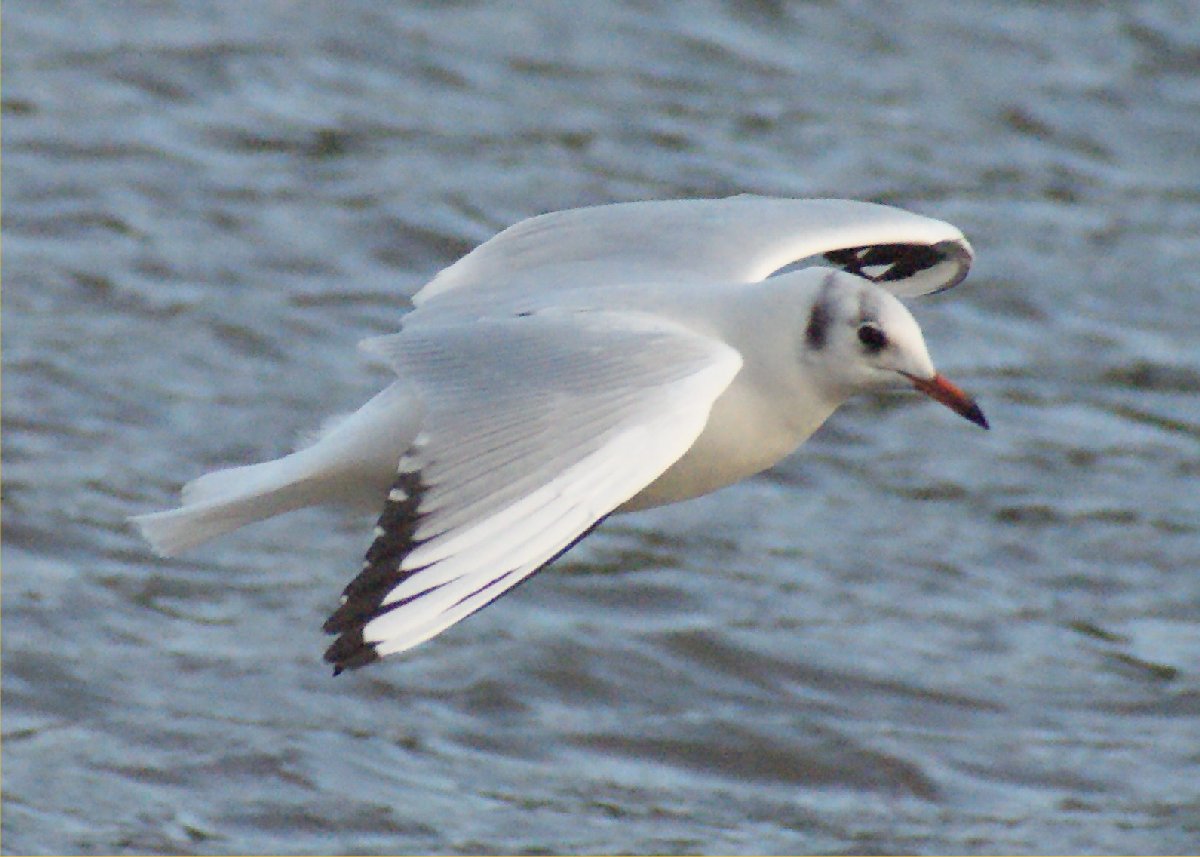
| 
|
| This member of a ubiquitous species demanded food while we were picnicking at Cragside (June 2009). |
They are very common on our local reservoir (winter plumage November 2010, |
and on the river Tyne in Hexham (May 2013). |
| COMMON GULL Larus canus | |
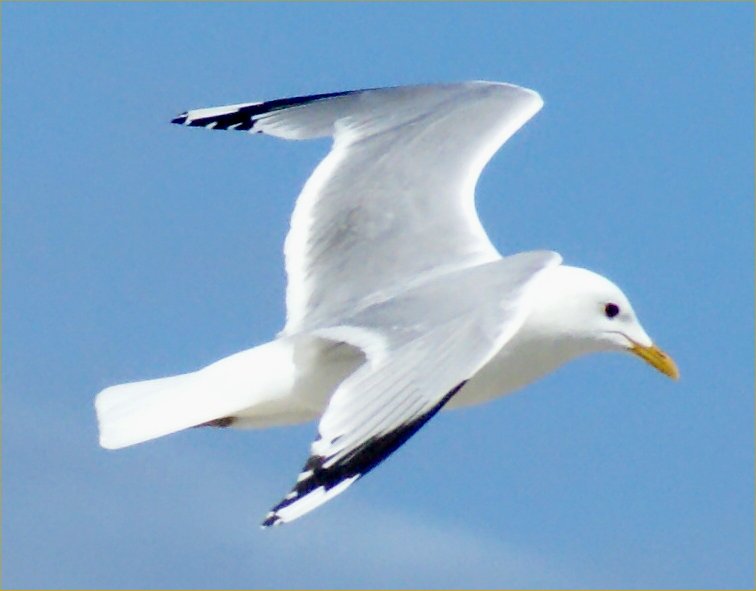 |
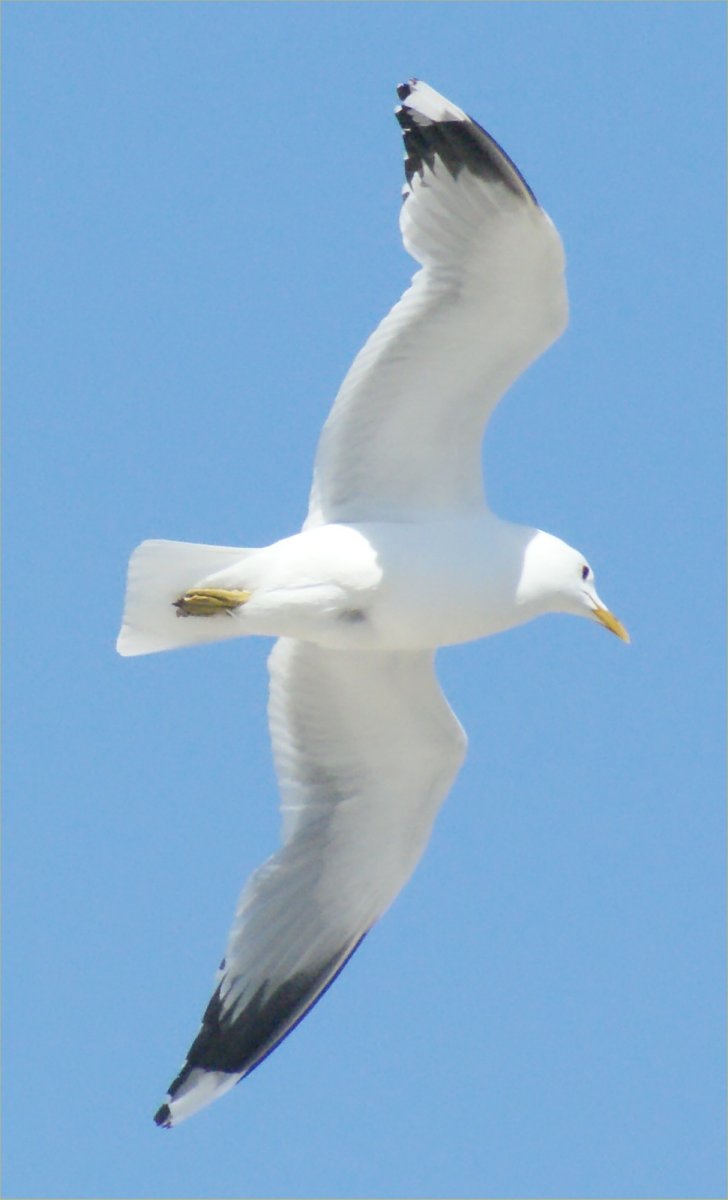
|
| Not so common, in fact. This one flew near us at the north end of Iona in July 2015. Similar in colouring to a Herring Gull, but distinguished by smaller size, more 'gentle' look, as our bird book puts it, no red spot on the bill and yellowish rather than pink legs. |
Back to bird list
| LESSER BLACK-BACKED GULL Larus fuscus | |
 |
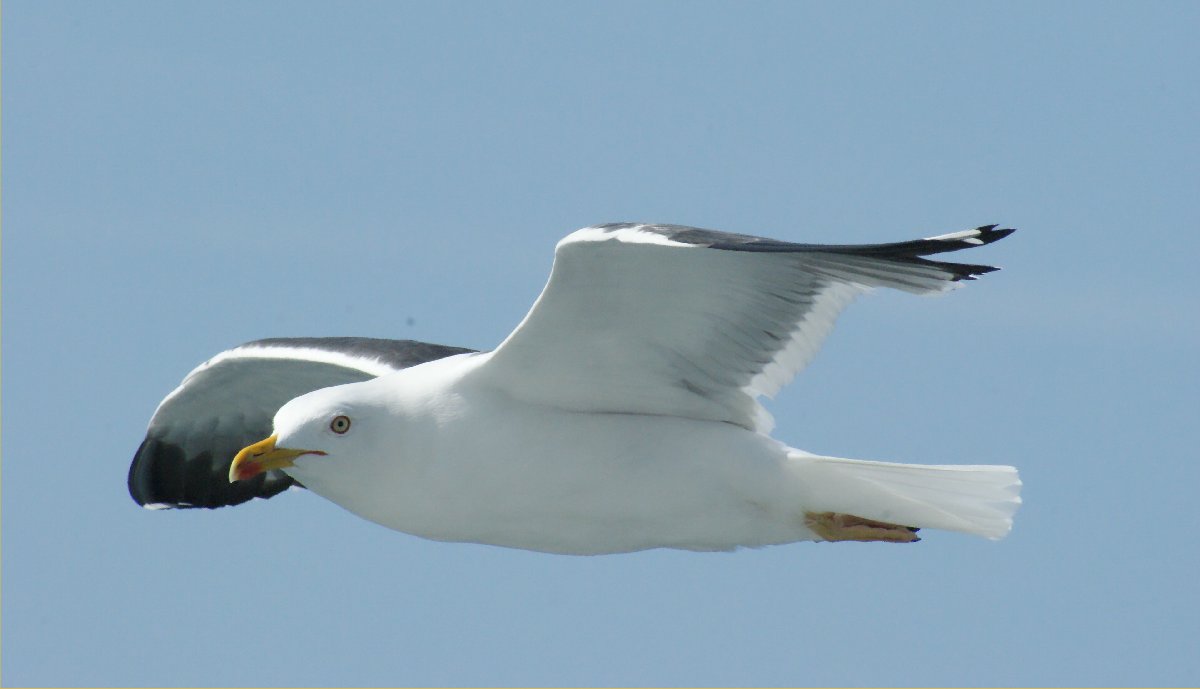
|
| Several of these accompanied the ferry from Craignure to Oban in July 2013. They swooped low, hoping to catch titbits thrown by passengers, and Tony managed to get these shots. The photo on the left has not been cropped -the bird really was that close! |
Back to bird list
| HERRING GULL Larus argentatus | |
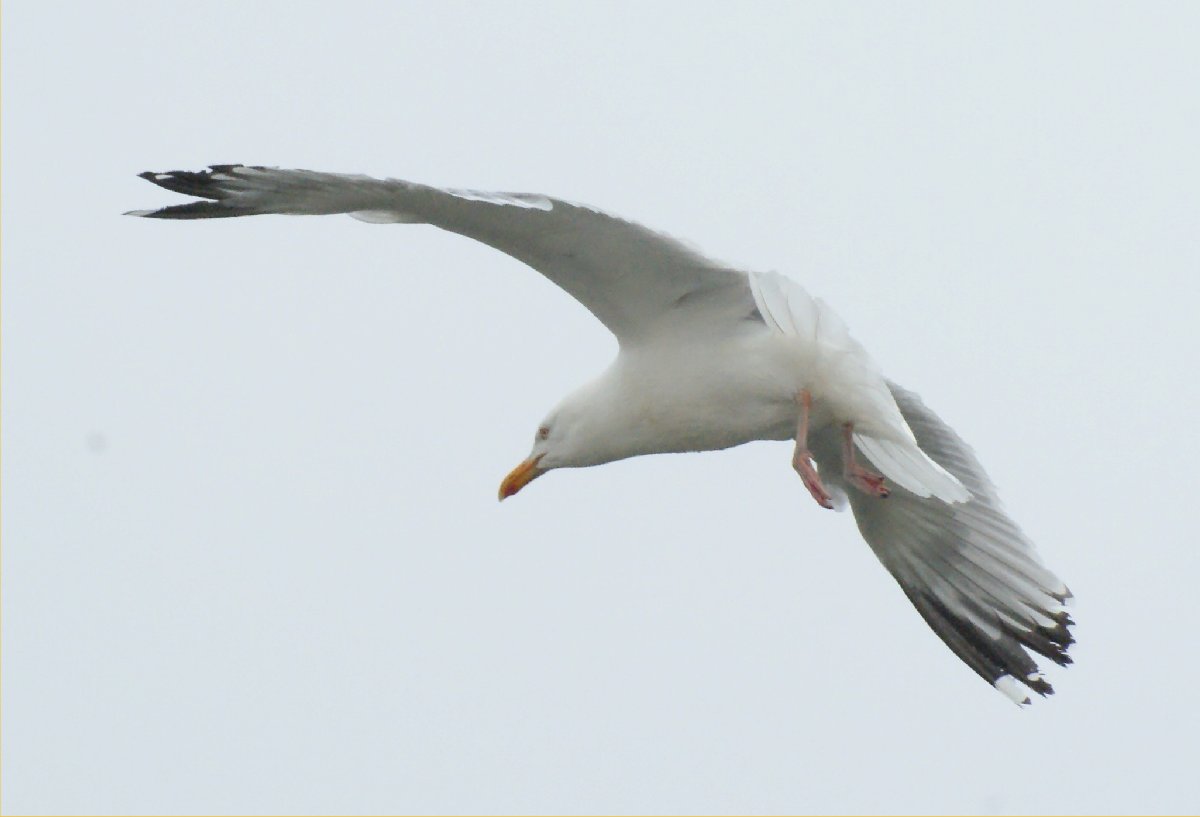 |

|
| An elegant bird, though very noisy. This one was very interested in our picnic, on Mull in July 2013. |
Back to bird list
| GREATER BLACK-BACKED GULL Larus marinus |
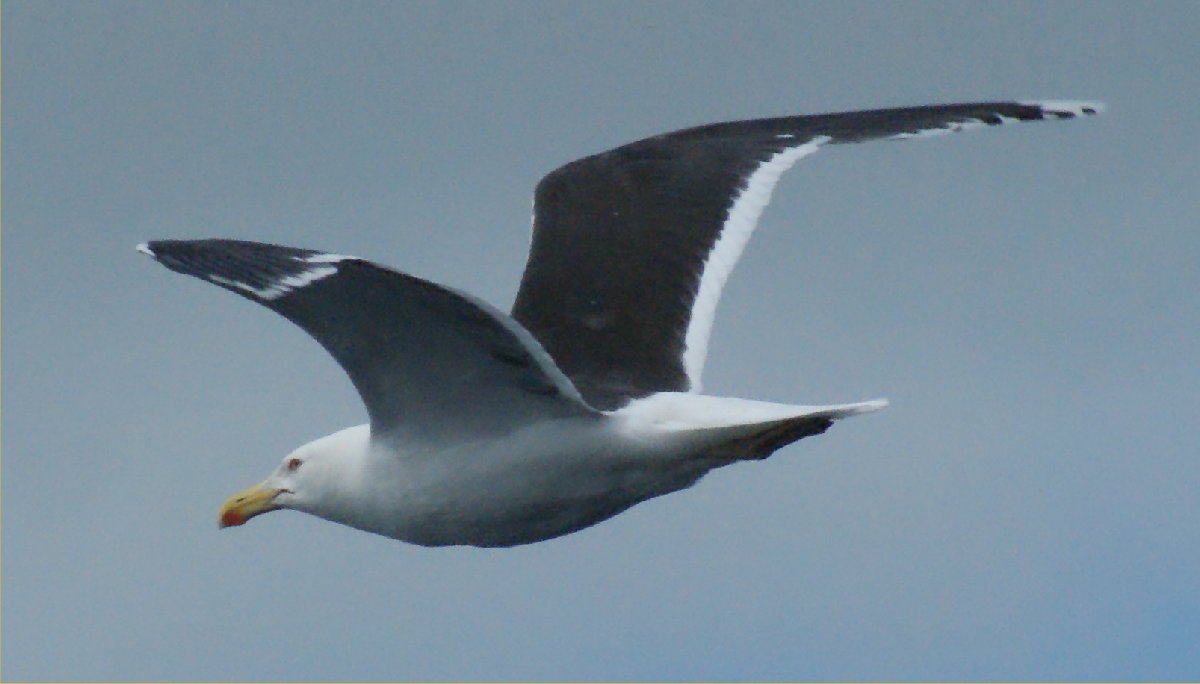 |
| A splendid bird, frequently seen by the sea and occasonally on the Tyne at Hexham. This one was at Beadnell, Northumberland, in June 2011. |
Back to bird list
| KITTIWAKE Rissa tridactyla |
 |
| We visited the Farne Islands at exactly the right time (June 2011) to see chicks in the nest. |
Back to bird list
| SANDWICH TERN Sterna sandvicensis | |
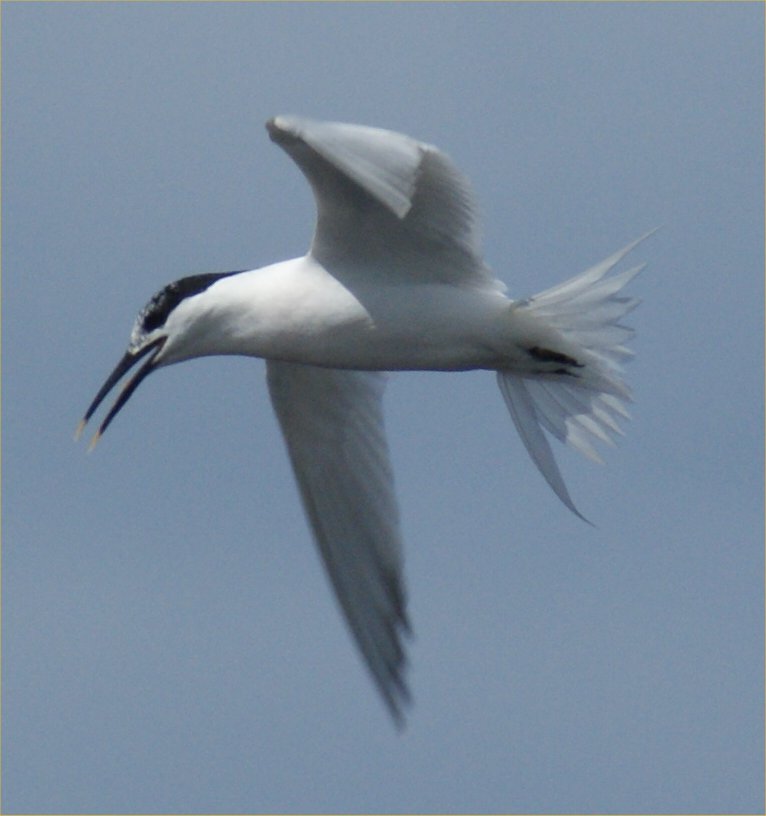 |
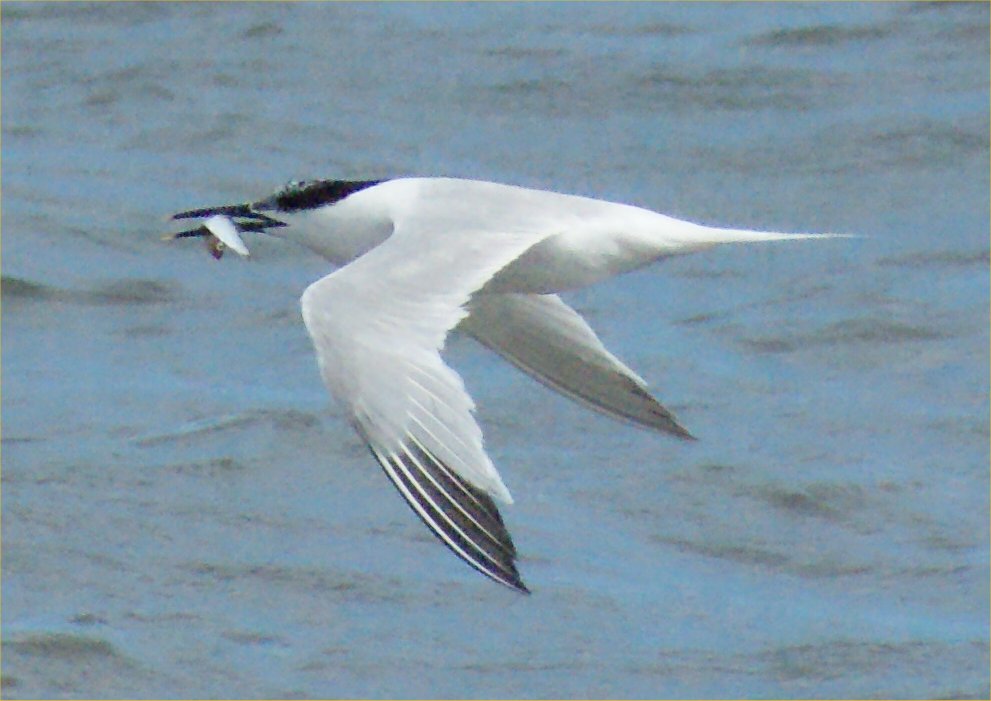
|
| Like Common and Arctic Terns, these breed on the Farne Islands, so it's not unusual to see them on the coast near there. The left-hand one was at Beadnell in June 2011, the other at Druridge a month later. |
Back to bird list
| COMMON TERN Sterna hirundo | |
 |

|
| We see these frequently on the Northumberland coast, here at Druridge Bay and at Washington WWT, both in July 2014. |
Back to bird list
| ARCTIC TERN Sterna paradisaea | |
 |
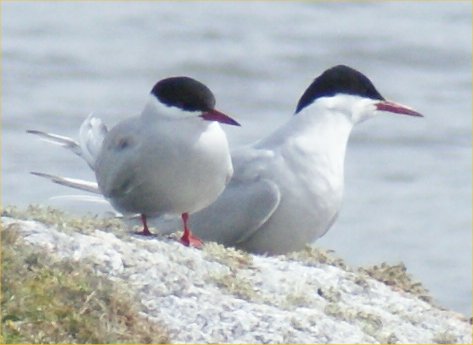
|
| On Fethaland, the most northerly point of Shetland's Mainland, 9th June 2010. | These two were canoodling on North Uist, May 2012 |
Back to bird list
| COMMON GUILLEMOT Uria aalge | |
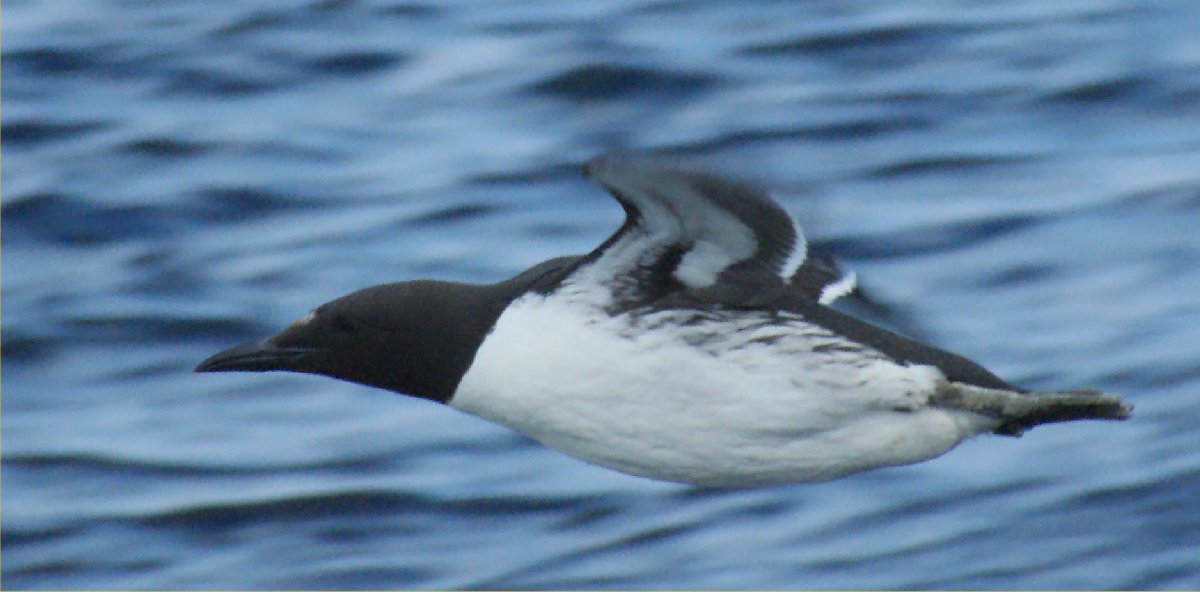 |
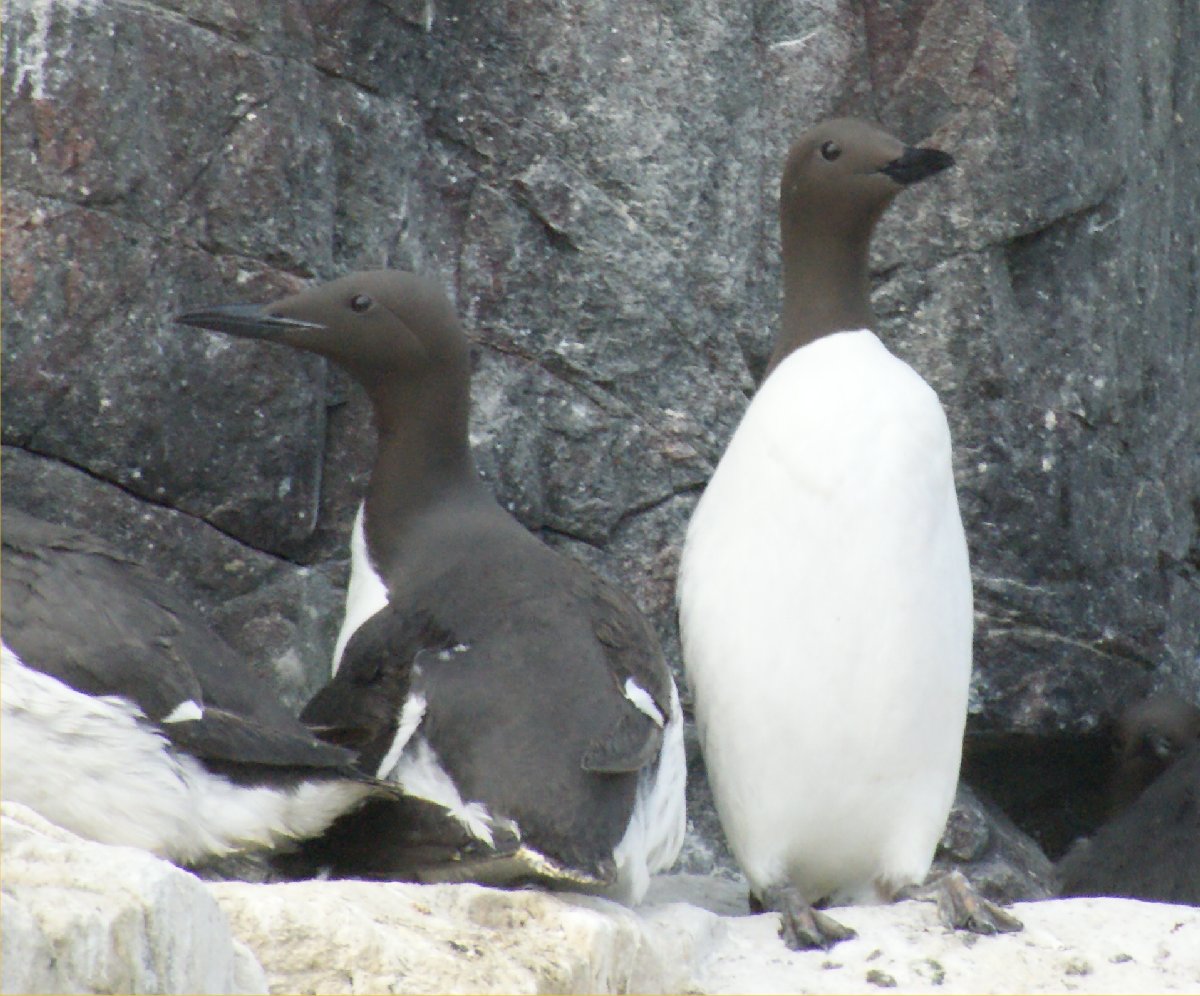
|
| Seen on a trip to the Farne Islands in June 2011. |
Back to bird list
| RAZORBILL Alca torda | |
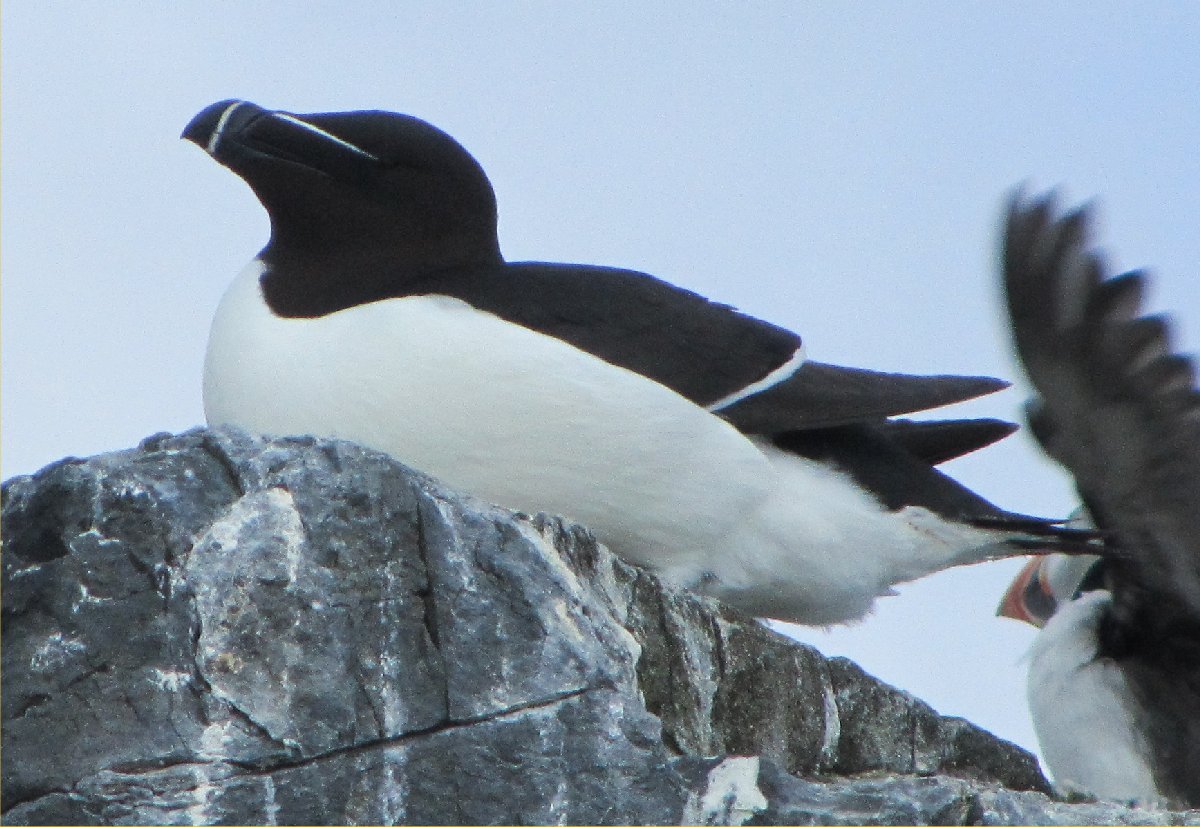 |
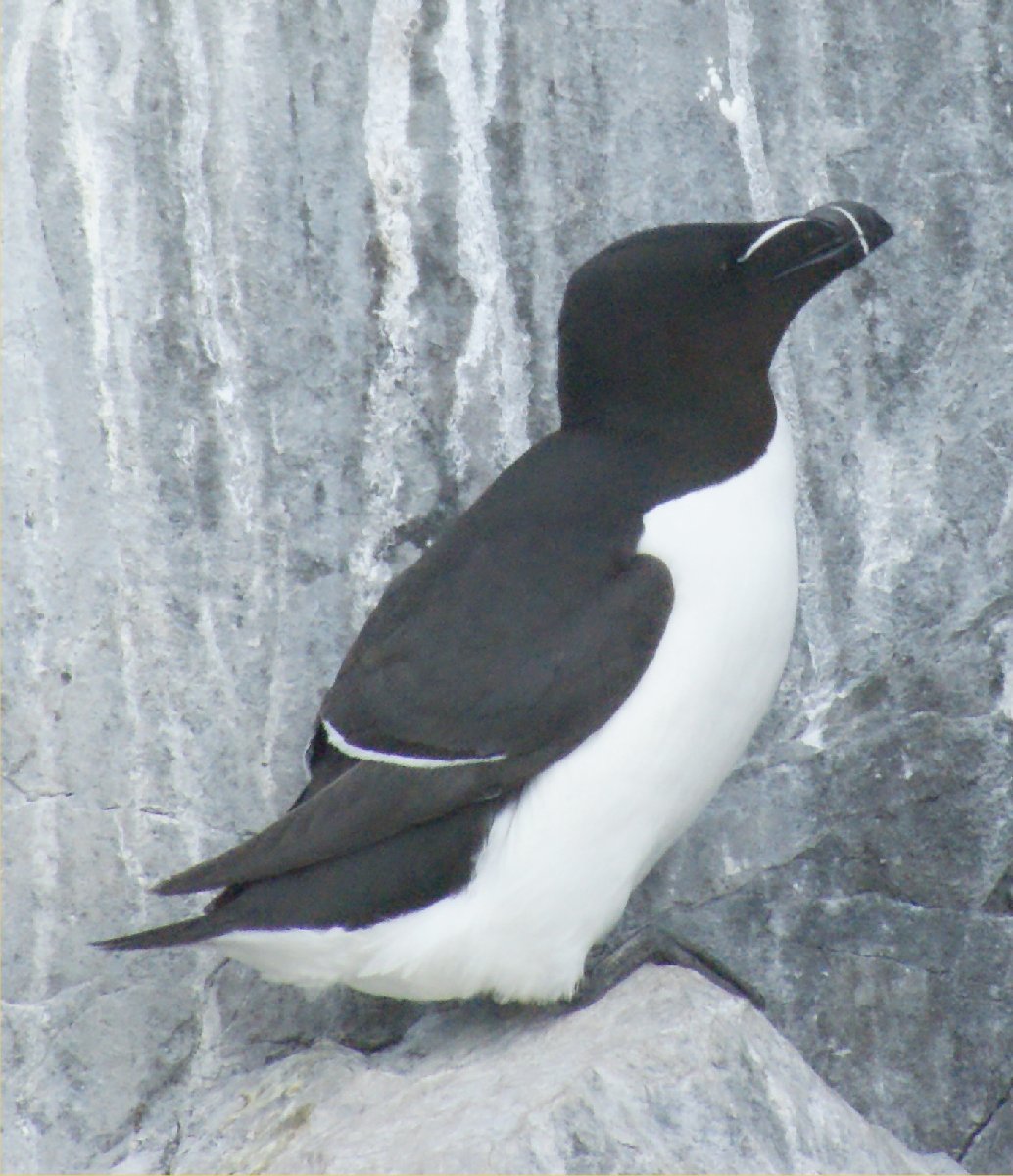
|
| Elegant auks, on the Farne Islands in June 2011. |
Back to bird list
| BLACK GUILLEMOT Cepphus grylle |
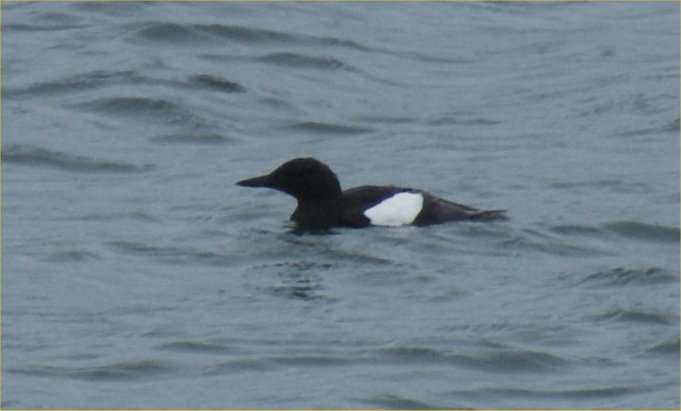 |
| Black Guillemots are not uncommon, but rarely seen in flocks and not easy to approach. We saw this one at Hillswick, Shetland in July 2013. |
Back to bird list
| PUFFIN Fratercula arctica | |
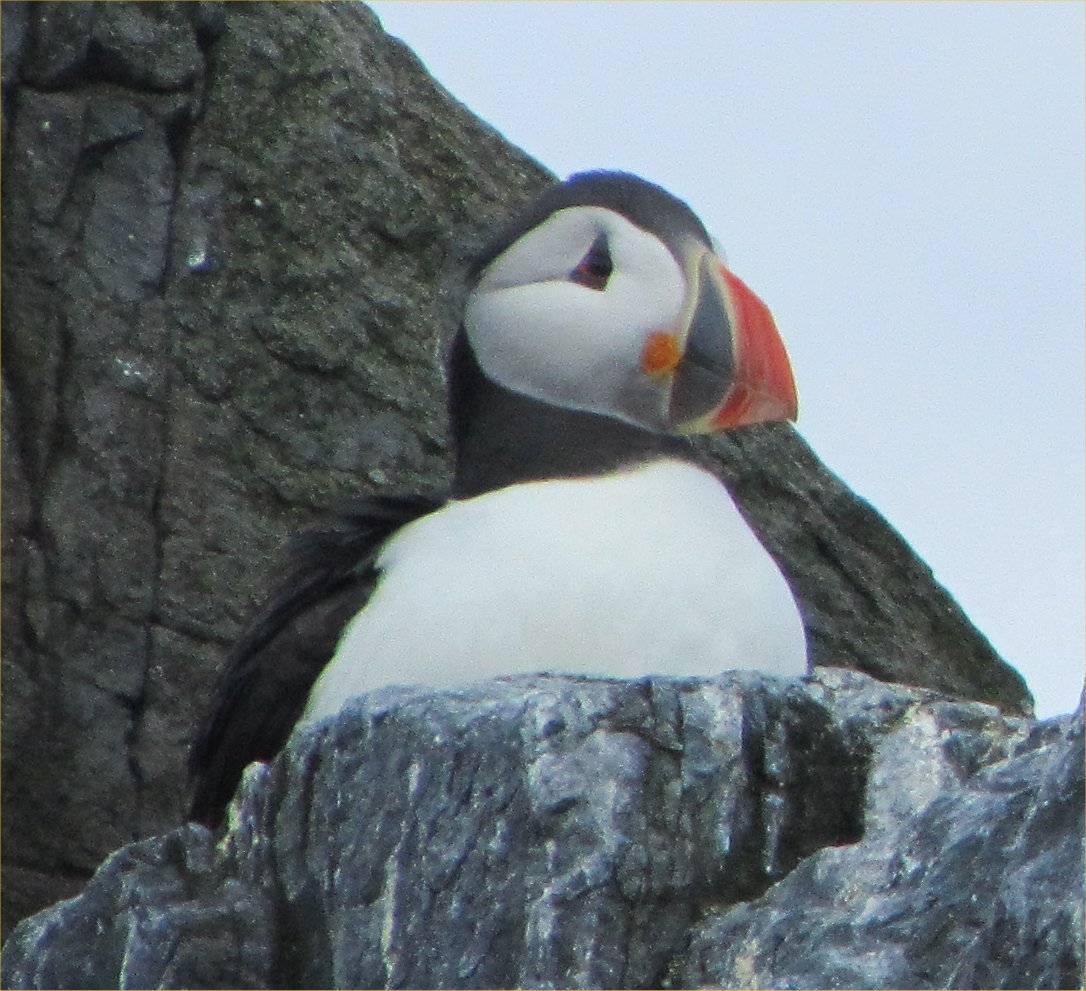 |
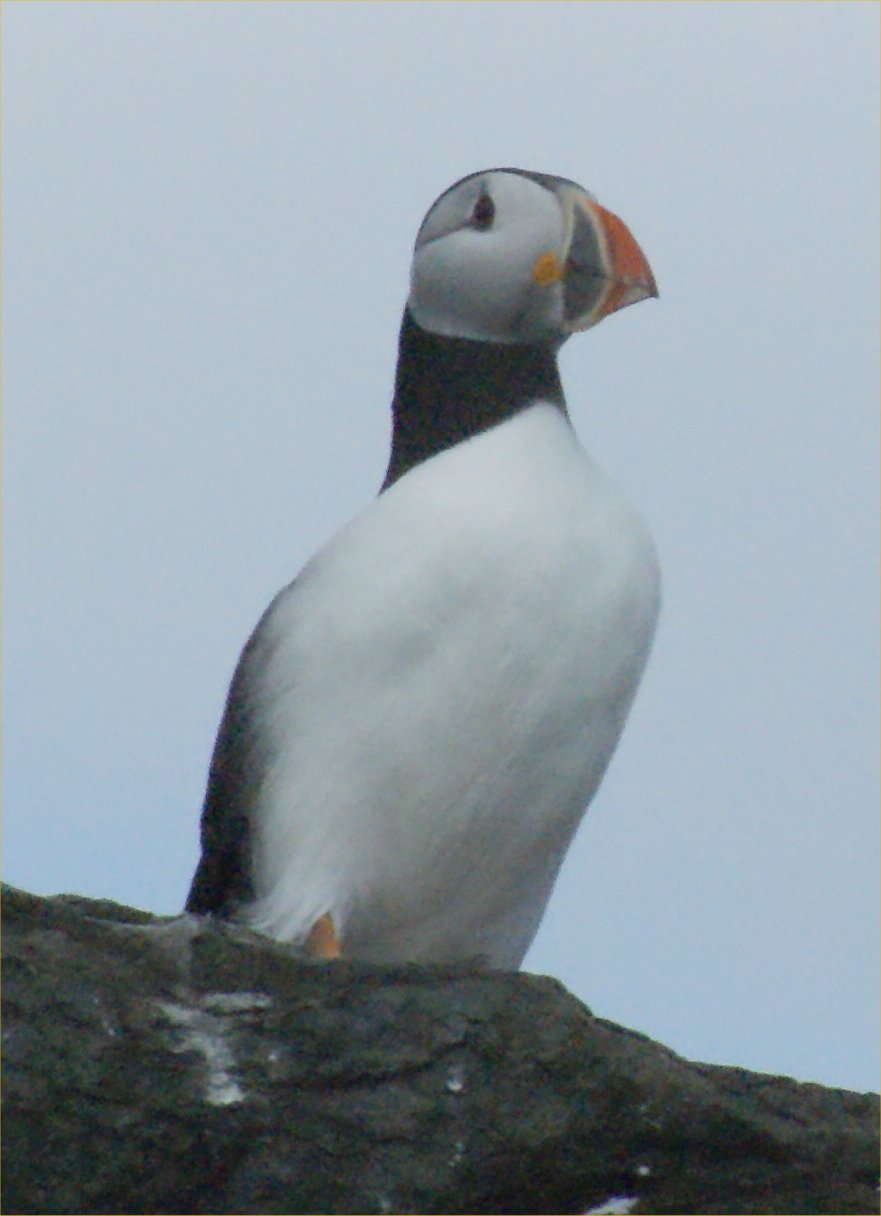
|
| Irresistible, of course. These were on the Farne Islands in June 2011. |
Back to bird list
| ROSE-RINGED PARAKEET Psittacula krameri |
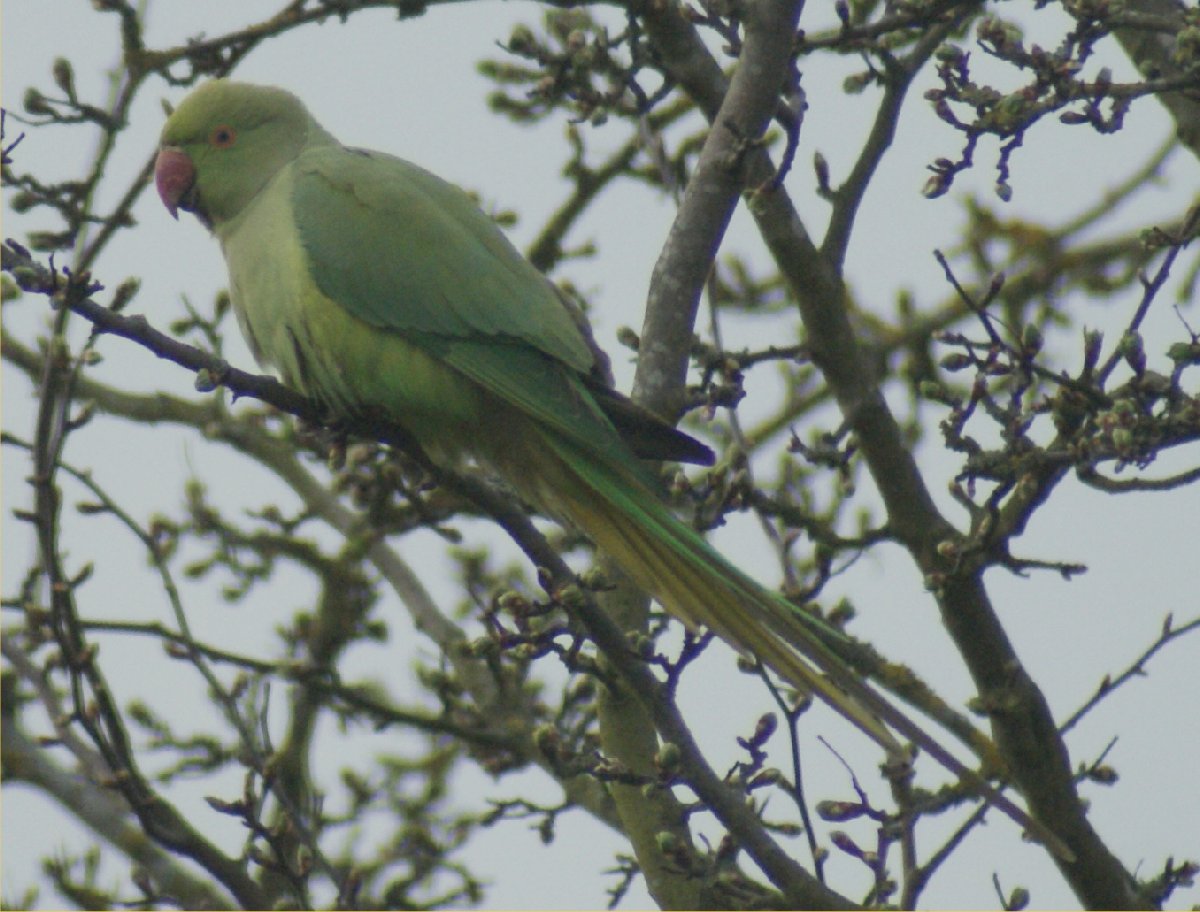 |
| Not originally a native bird, but they took to our climate readily since escaping from captivity in the '60s. This one was near Maidenhead in April 2013. |
Back to bird list
| GREAT SPOTTED WOODPECKER Dendrocopos major | |
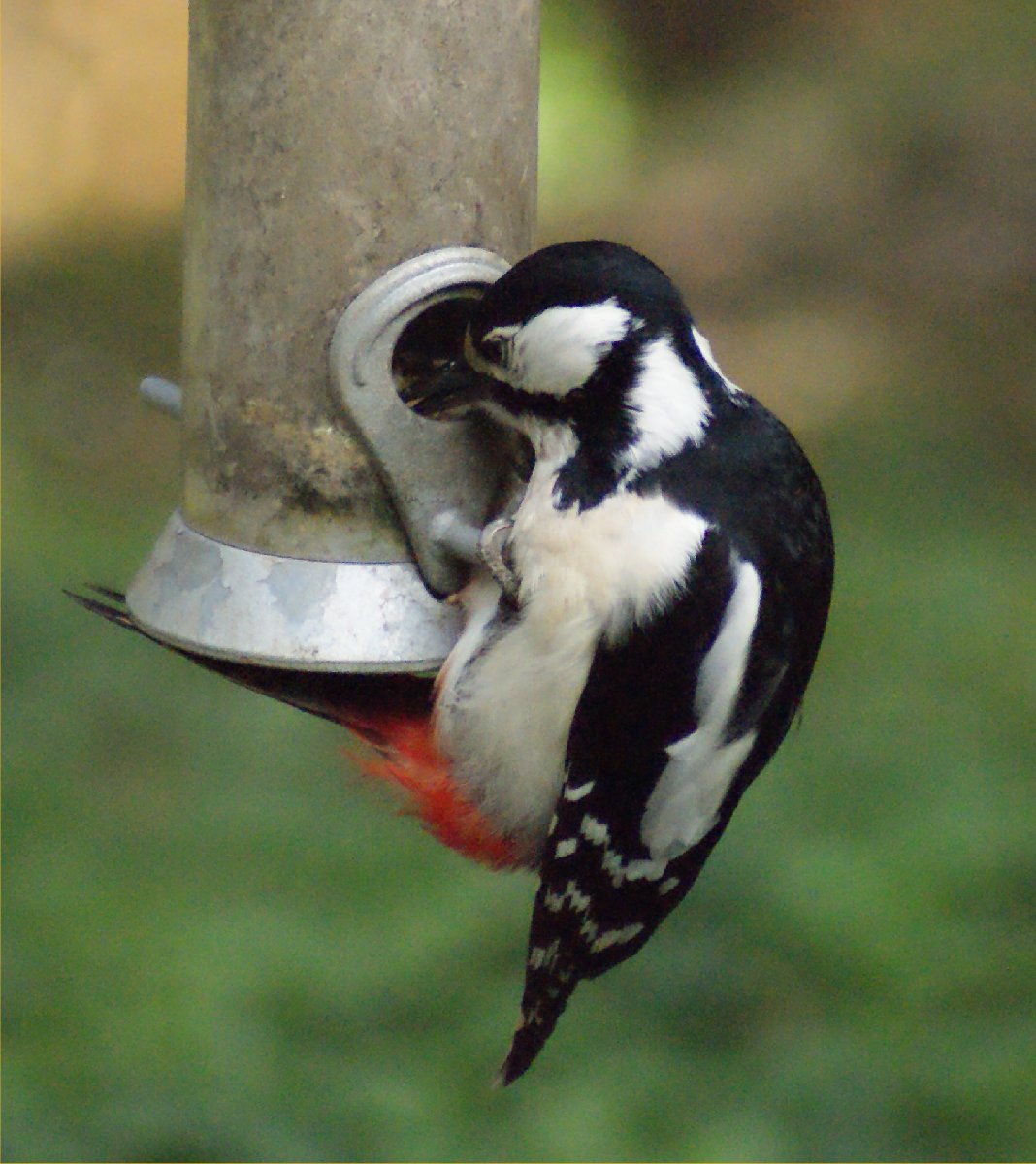 |
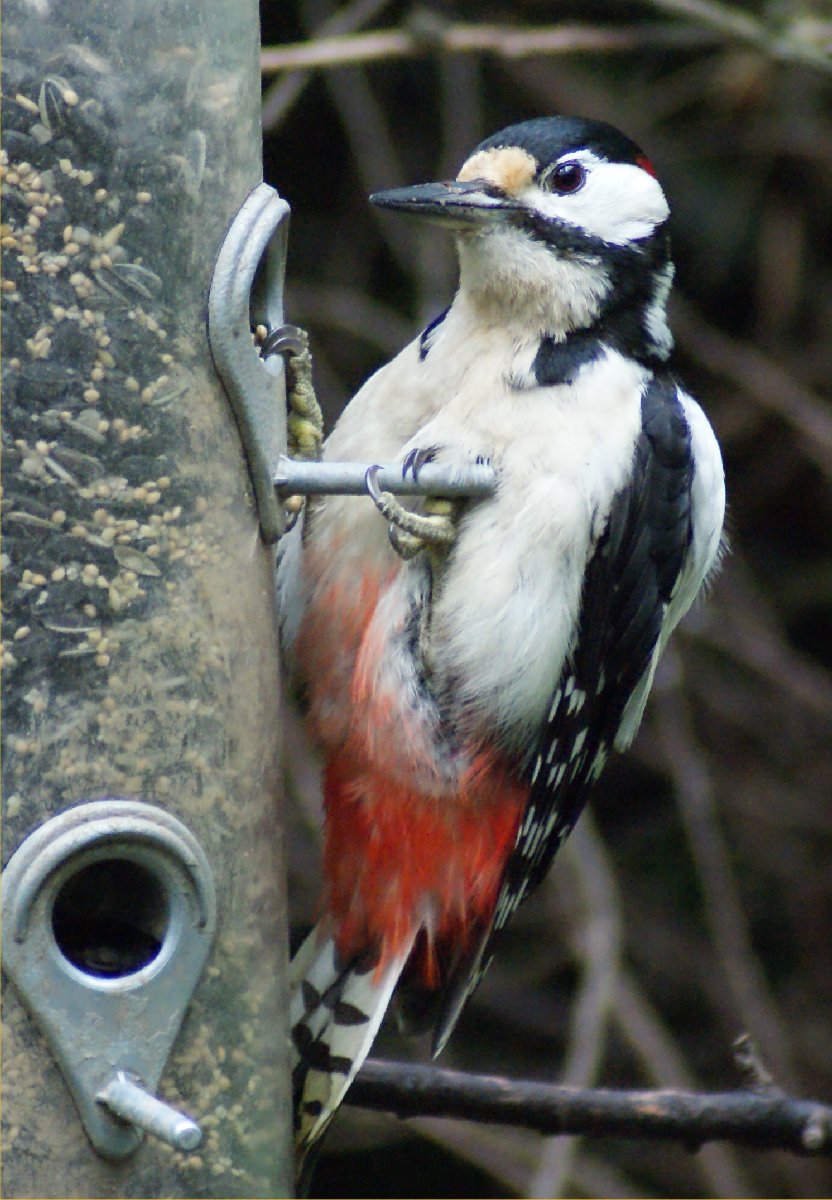
|
| We've had one or two on our feeders, but we often see them at Wallington, the female (on left) in April 2009, the male in June the same year. |
Back to bird list
| SKYLARK Alauda arvensis |
 |
| They usually take to the air and climb high if you approach them, so we were pleasantly startled when this bird trotted along the track just in front of us, near Cow Green Reservoir in Teesdale in June 2010. |
Back to bird list
| SAND MARTIN Riparia riparia | |
 |
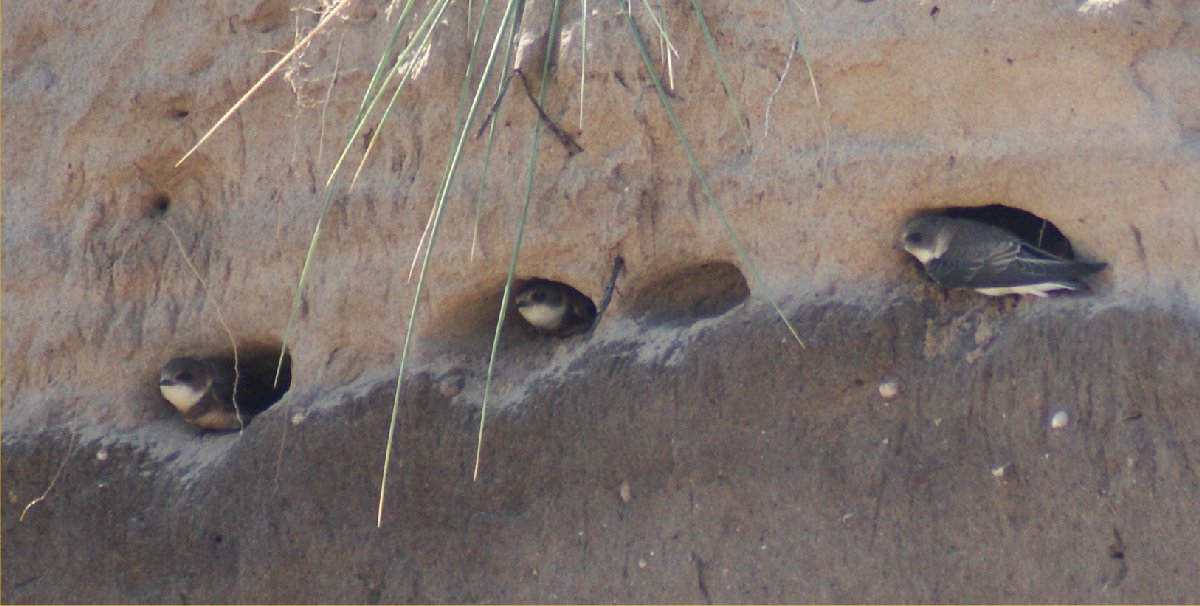
|
| Find their nest holes in dunes or sandbanks and you are soon surrounded by swooping birds or peered at from entrances. These were at Druridge on different occasions in June 2010. |
Back to bird list
| BARN SWALLOW Hirundo rustica | |
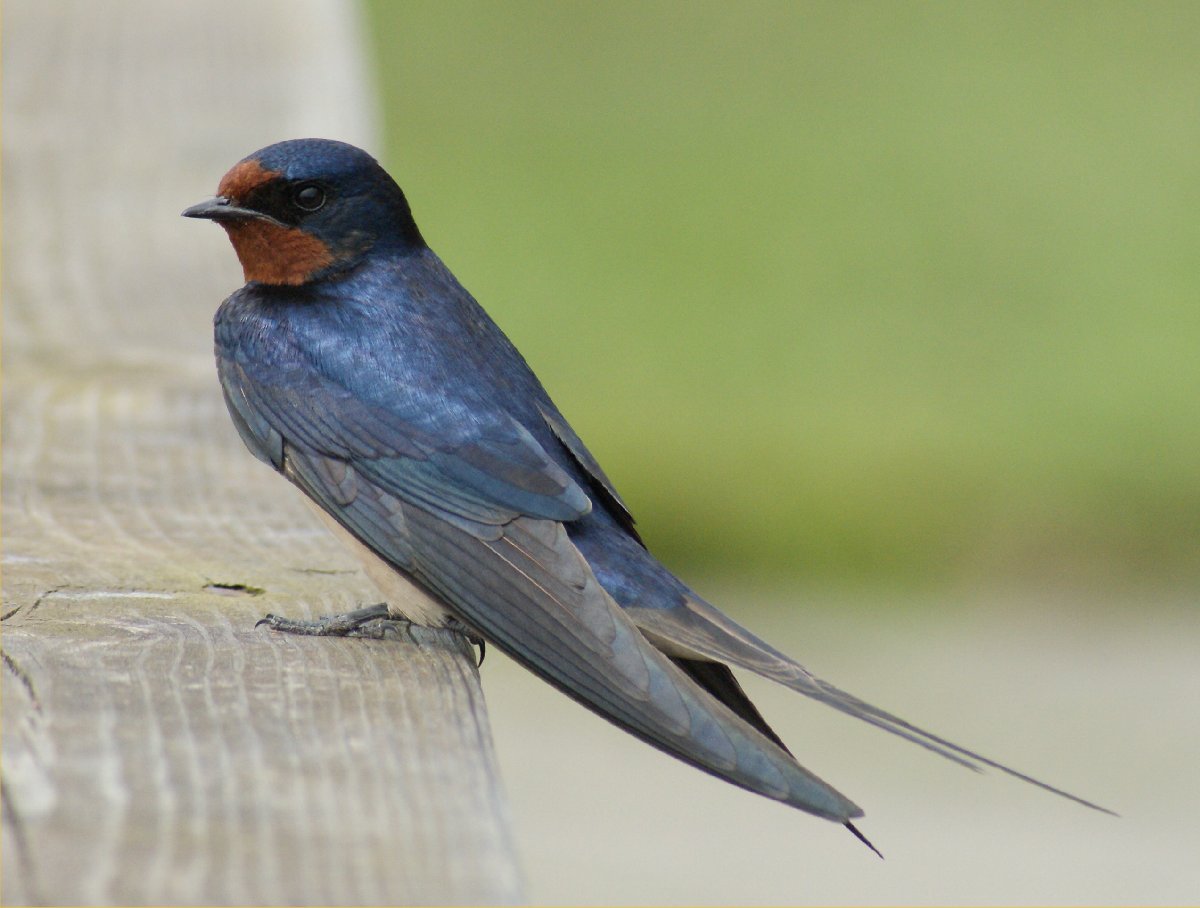 |
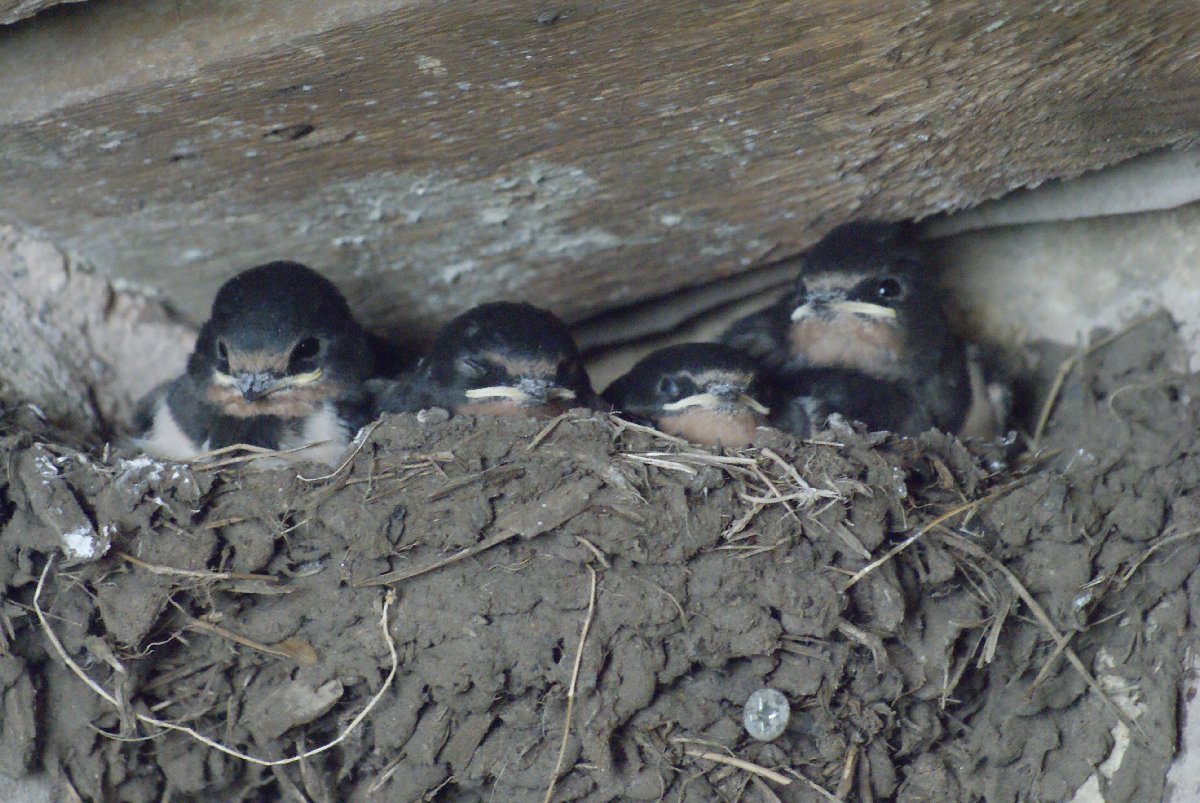 |
| Fast-moving and usually difficult to snap, the one on the left perched on our picnic table at Druridge in June 2014. The nest was at Housesteads, on Hadrian's Wall, the following month. |
Back to bird list
| ROCK PIPIT Anthus petrosus | |
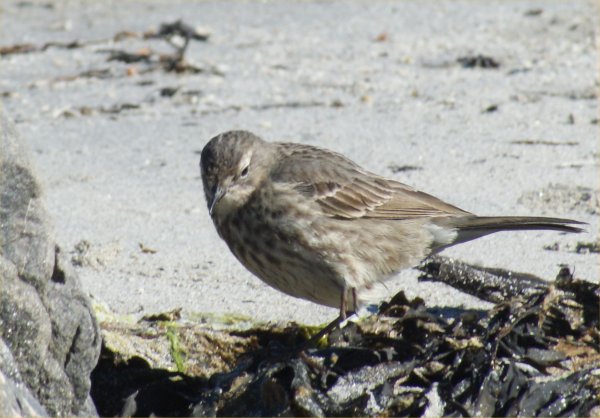 |
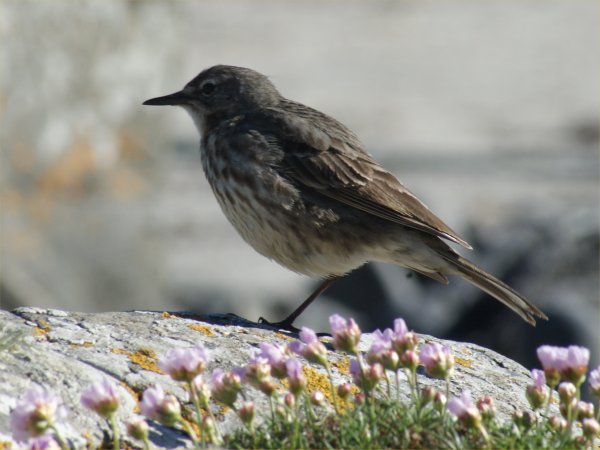 |
| Darker than the Meadow Pipit and seen almost exclusively on beaches, this one was at Uisken, Isle of Mull, in May 2019. |
Back to bird list
| MEADOW PIPIT Anthus pratensis |
 |
| Small, nervous birds are never easy to snap, so Tony was very grateful to this one for staying still and near for long enough, on Lindisfarne in June 2009. |
Back to bird list
| PIED WAGTAIL Motacilla alba | |
 |
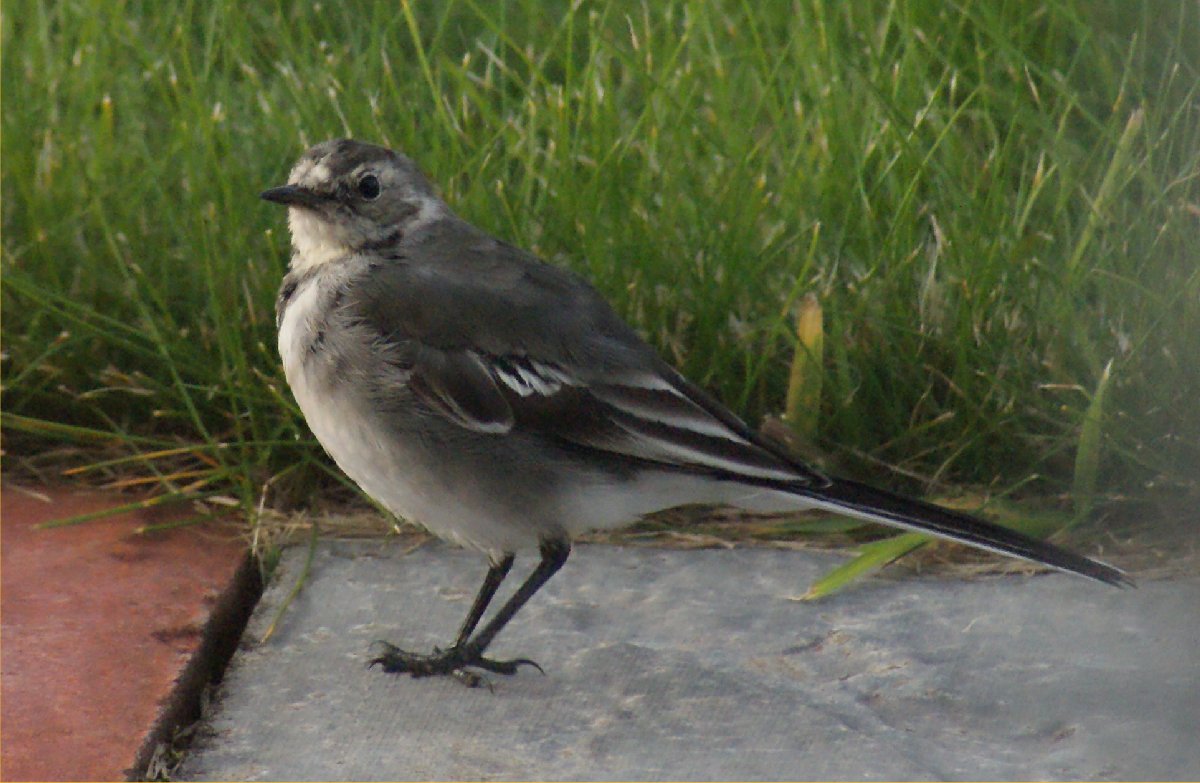
|
| Active birds, but the one with its lunch stayed still enough at Belsay in July 2010. The juvenile visited the cottage where we stayed on Mull in August 2014. |
Back to bird list
| WAXWING Bombycilla garrulus | |
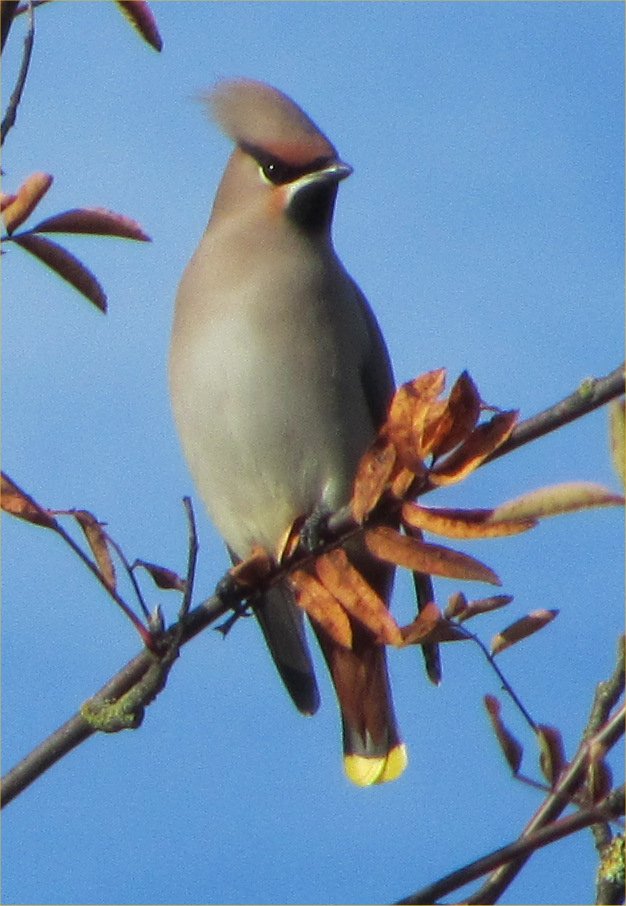 |
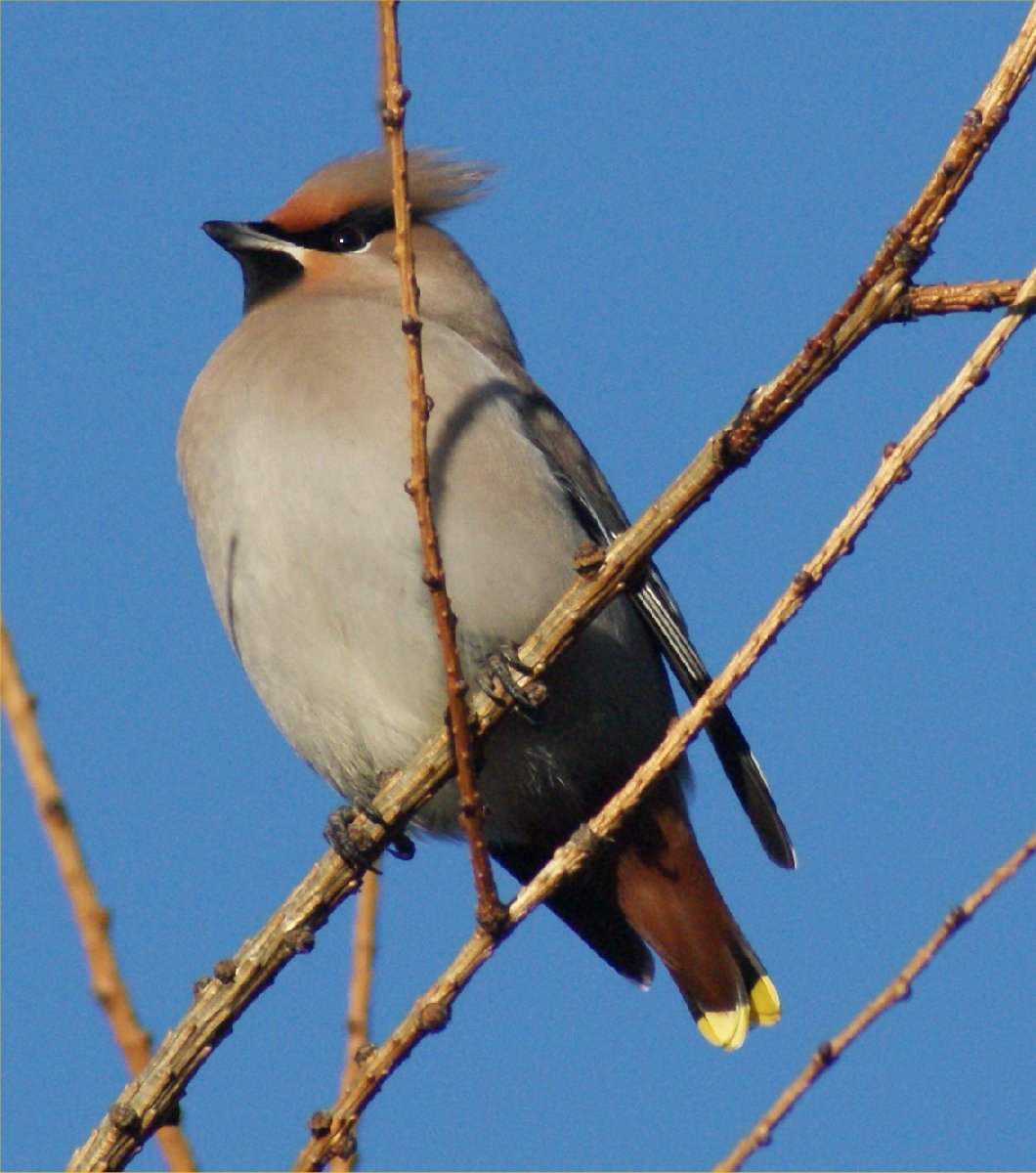 |
| We were startled to see the one on the left at our local reservoir, Wydon Water, in November 2010. The other was one of a group at Druridge in January 2013. |
Back to bird list
| DIPPER Cinclus cinclus | |
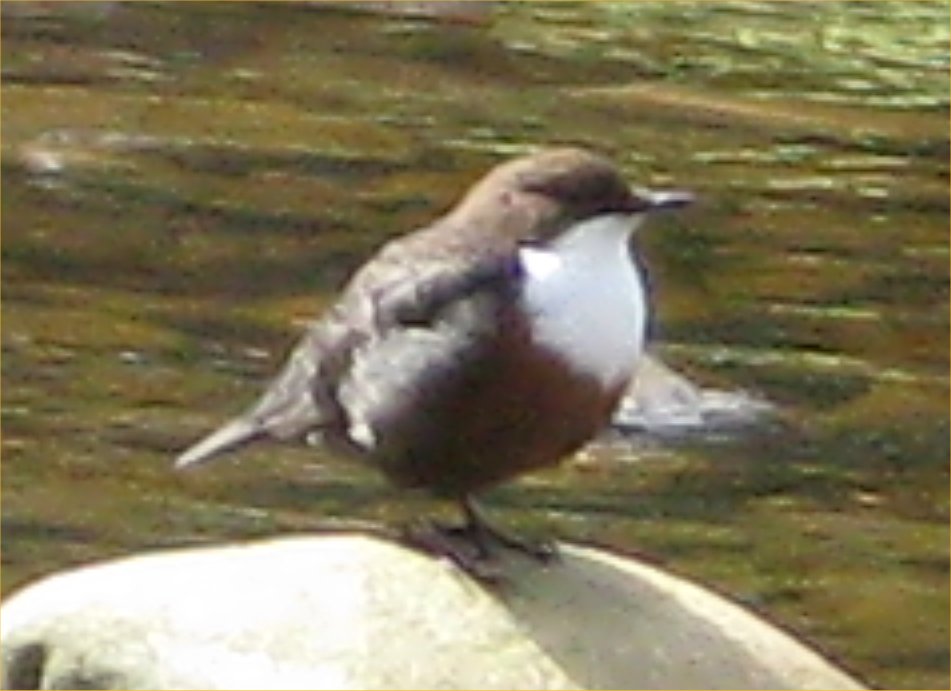 |
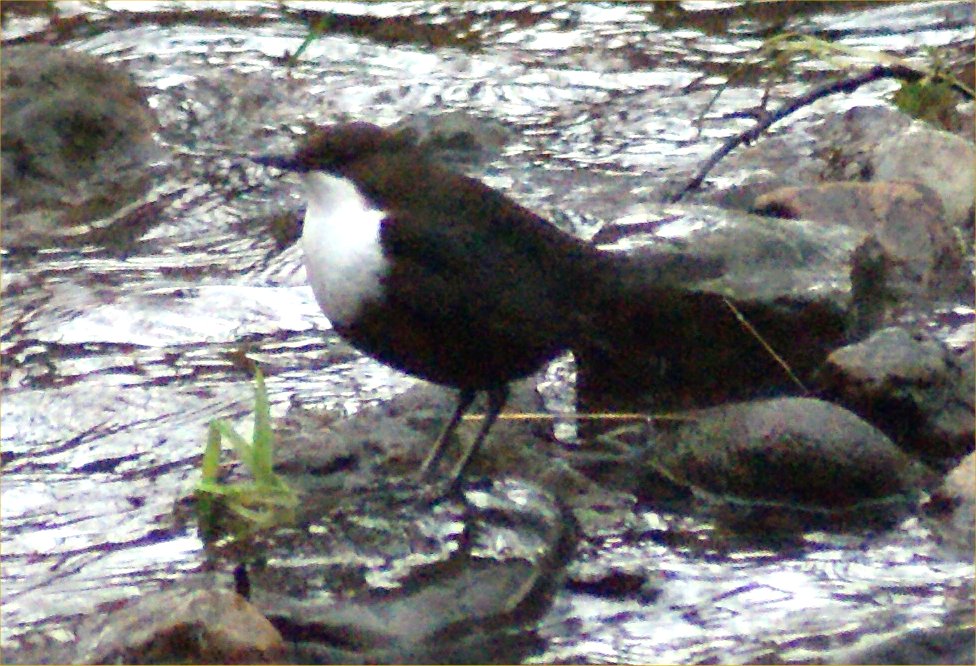
|
| These are quick and shy birds, so we're always trying to get better shots of them. These two were at Gibside in April 2009 and Wallington November 2010. |
Back to bird list
| WREN Troglodytes troglodytes | |
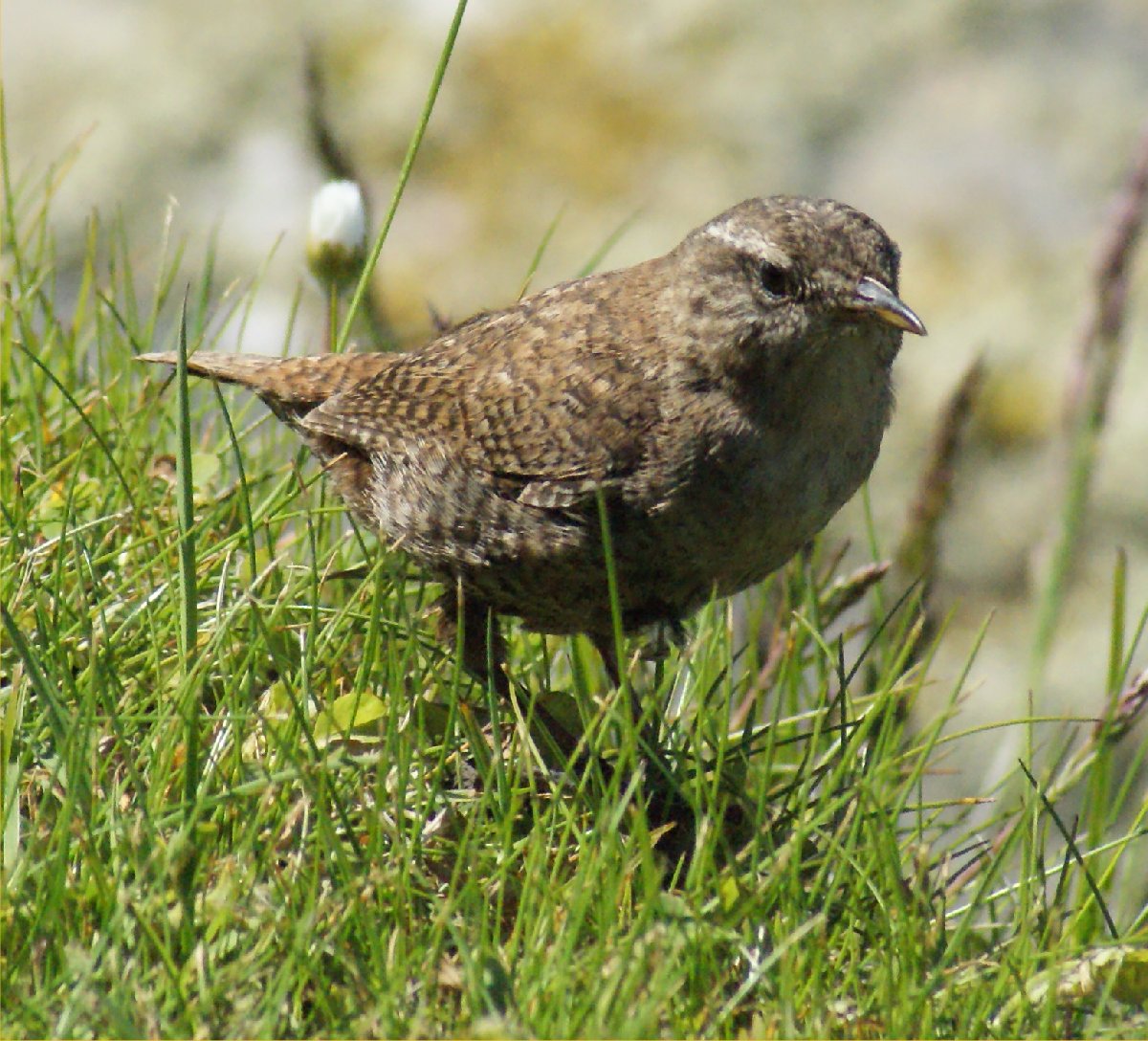 |
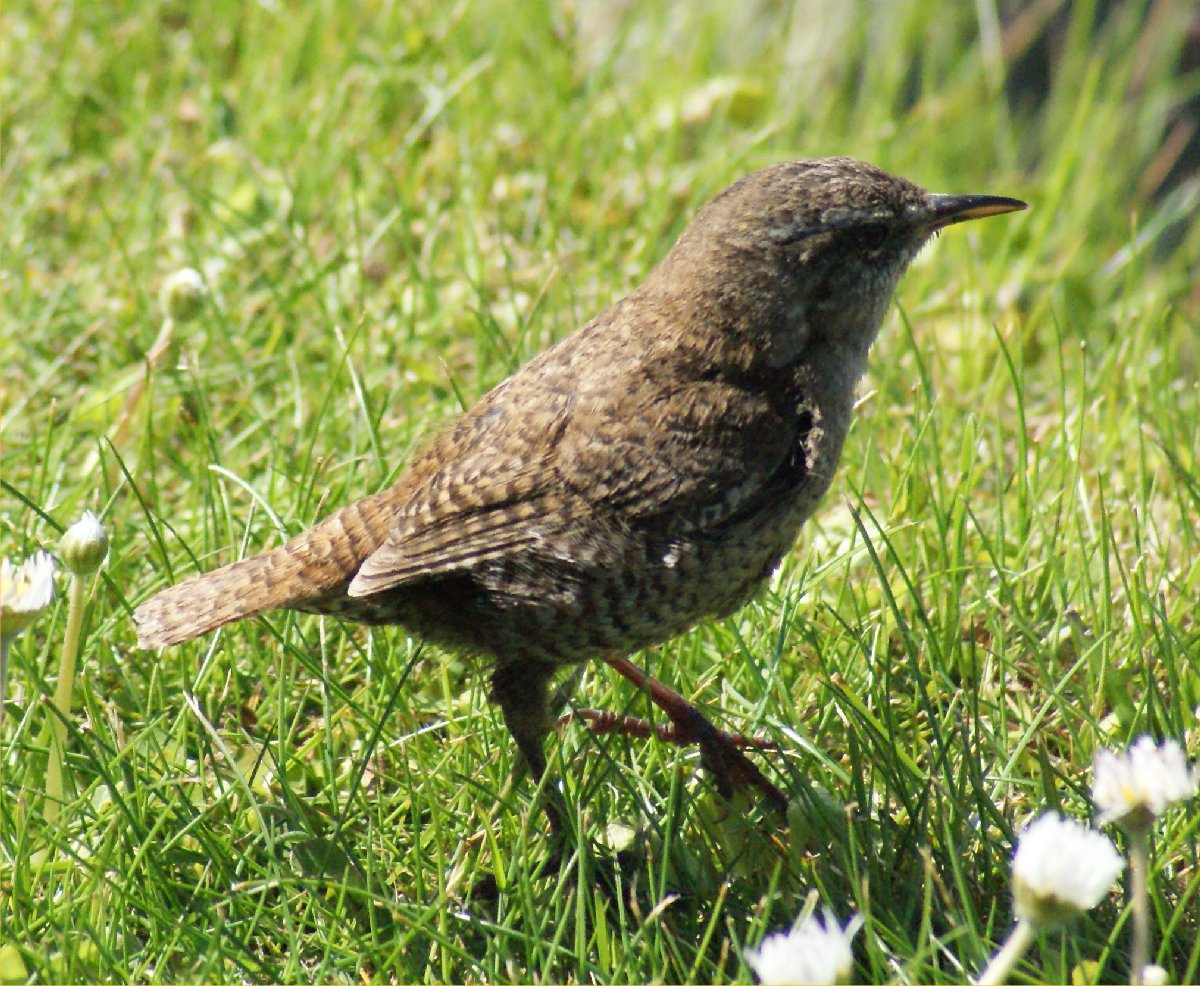
|
| We see, and certainly hear, Wrens on most of our walks, but our best photos were of this juvenile at Jarlshof archaeological site in Shetland, in June 2010. |
Back to bird list
| DUNNOCK Prunella modularis | |
 |
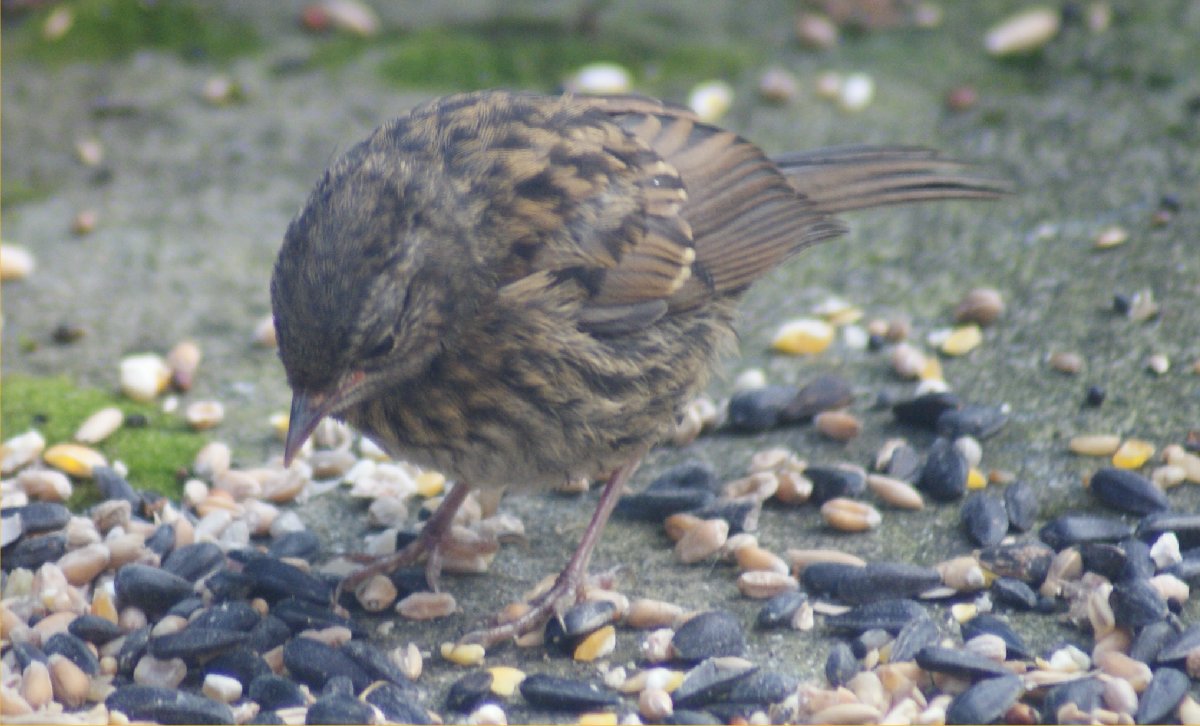
|
| Also called a Hedge Accentor the adult, on the left, was seen at Wallington in March 2014, the juvenile on our patio in August 2008 |
Back to bird list
| WHINCHAT Saxicola rubetra | |
 |
| Shyer than the Stonechat (next bird) and with a similar if quieter call, the Whinchat lives in less rocky habitats, such as the floor of the volcanic crater at Achnaha, Ardnamurchan, where we saw this individual in July 2015 from a considerable distance - hence the grainy picture. |
Back to bird list
| STONECHAT Saxicola torquata | |
 |

|
| A cooperative bird, kindly perching on fences and hedgetops for the photographer. These two were on Mull, the left-hand one in August 2014, the other in May 2010. |
Back to bird list
| ROBIN Erithacus rubecula | |
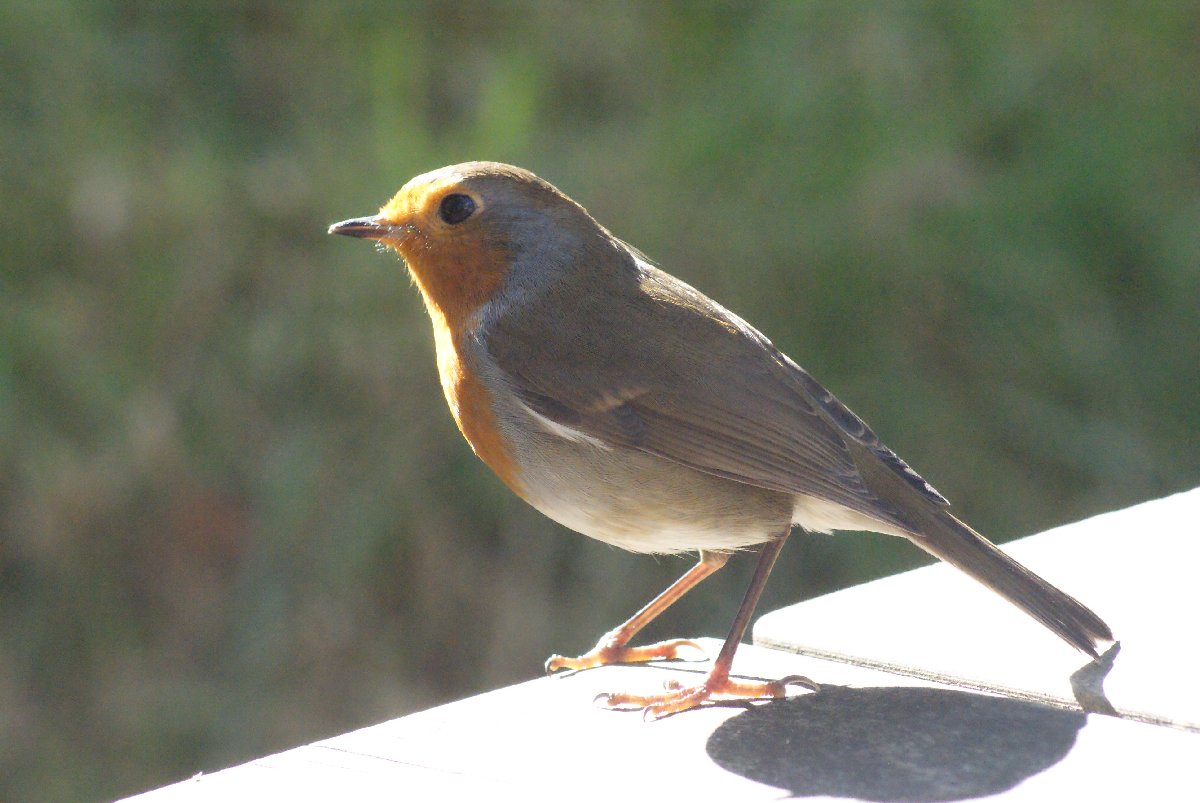 |
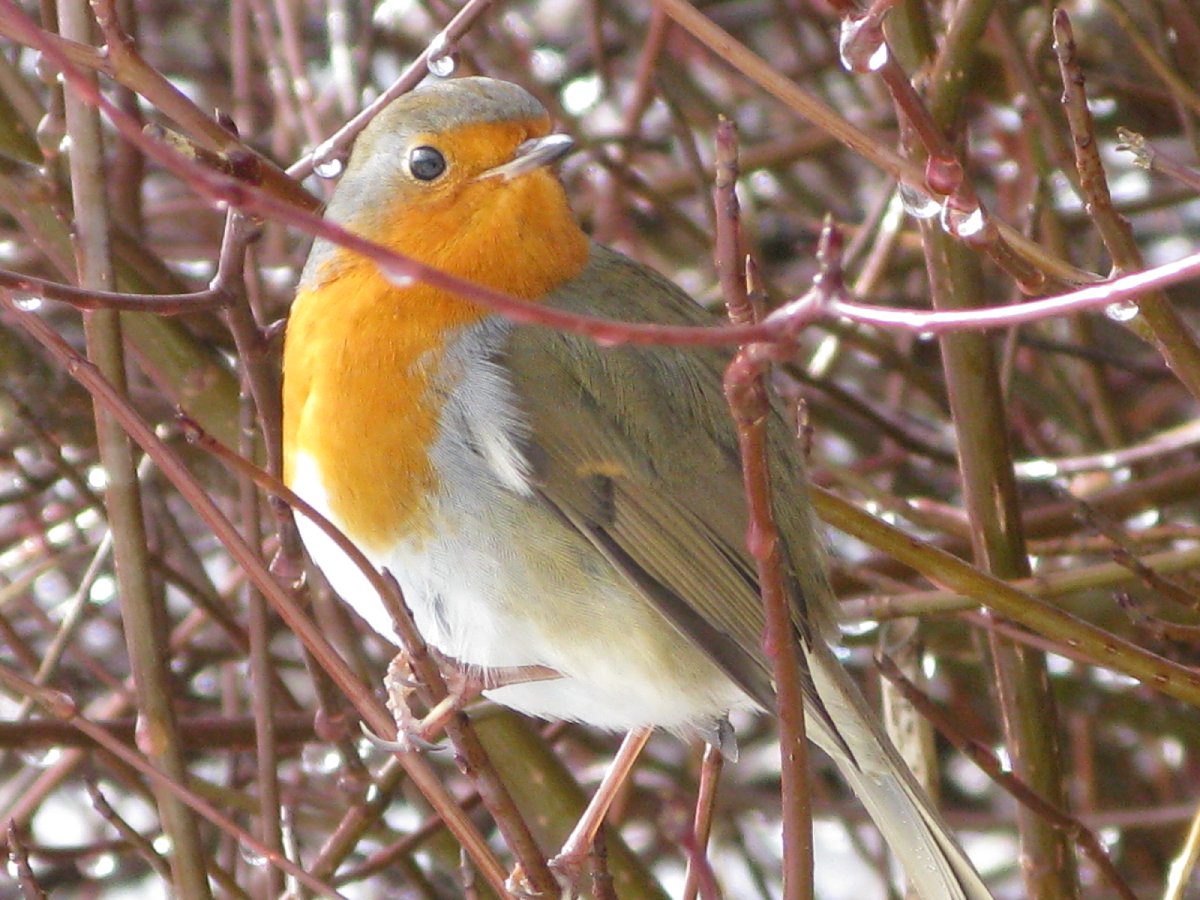
|
| A bird very kind to photographers. These are just two of several pictures we could have included, from Glen Coe Visitors' Centre in August 2014 and Wallington, February 2009 |
Back to bird list
| NORTHERN WHEATEAR Oenanthe oenanthe | |
 |

|
| We were pleased to get photos of this usually very timid moorland bird, the left-hand one in Teesdale in June 2010, the other at Druridge in May 2013. |
Back to bird list
| RING OUZEL Turdus torquatus |
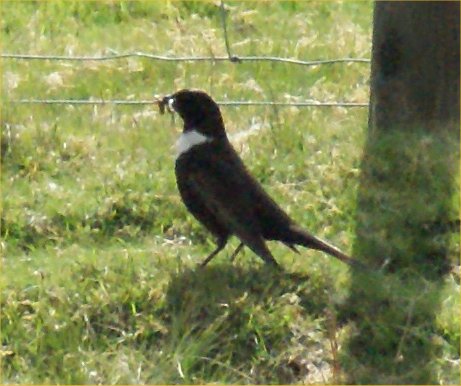 |
| Not a great photograph, but the only time we've seen one of these even reasonably close. It was on the opposite bank of the Tees below Cauldron Snout. |
Back to bird list
| BLACKBIRD Turdus merula | |
 |

|
| This one, photographed at home in early May 2010, amused us greatly by one of its calls, which sounded like "real birdie". |
A disabled bird, one leg missing, photographed on our terrace in July 2009. We saw it several times, so its missing leg wasn't too much of a handicap. |
Back to bird list
| SONG THRUSH Turdus philomelos |
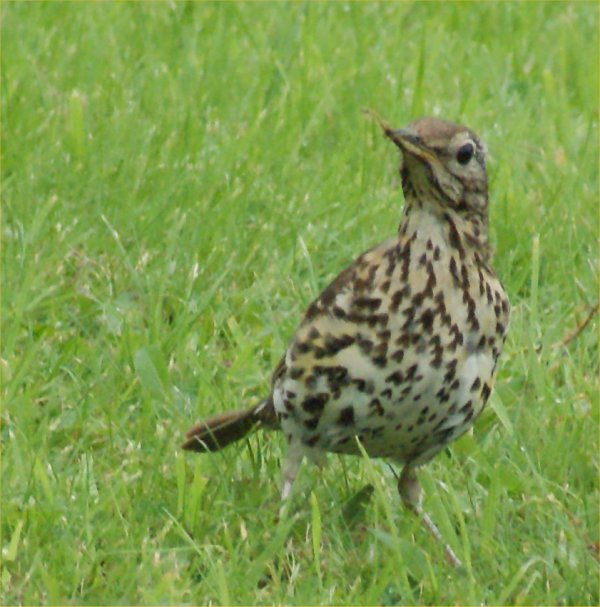 |
| A fairly common bird, though less so than in the past. They usually keep their distance, but this one was very interested in our picnic, at Cawfields Quarry, Northumberland, in August 2020. |
Back to bird list
| REDWING Turdus iliacus |
 |
| A winter visitor, distinguished from the Song Thrush by the bold stripes on the head and orange-red patch under the wing. This one was in a small flock in the Abbey Grounds, Hexham in January 2021. |
Back to bird list
| SEDGE WARBLER Acrocephalus schoenobaenus |
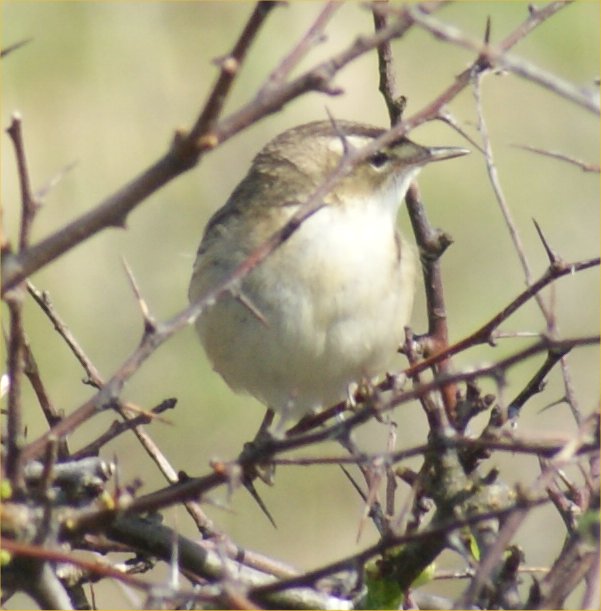 |
| They sing from fairly high in bushes, so are easier to see than other warblers. This one was by a track behind the beach at Druridge in May 2013. |
Back to bird list
| COMMON WHTETHROAT Sylvia communis |
 |
| A shy little warbler which did allow us to get close enough at Druridge in May 2013. |
Back to bird list
| BLACKCAP Sylvia atricapilla | |
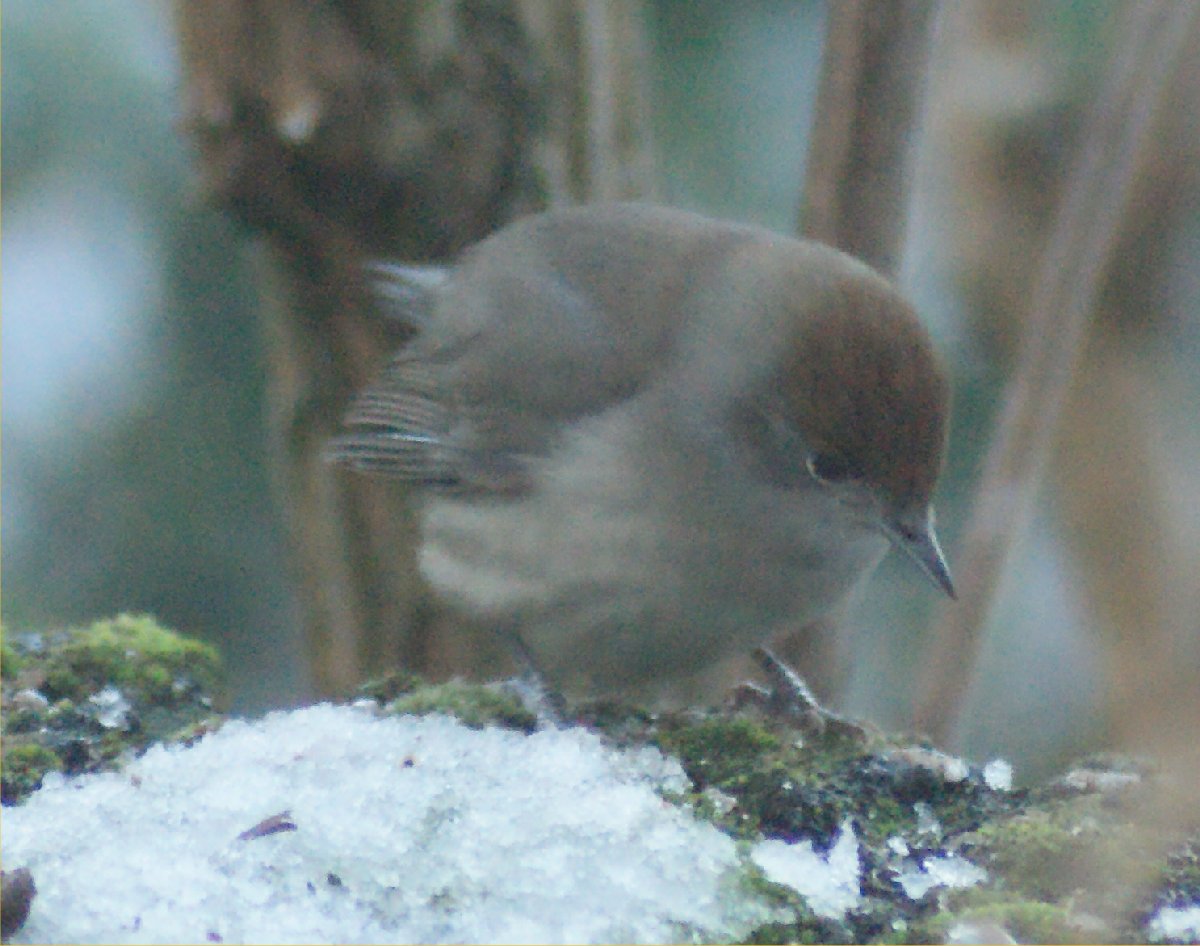 |
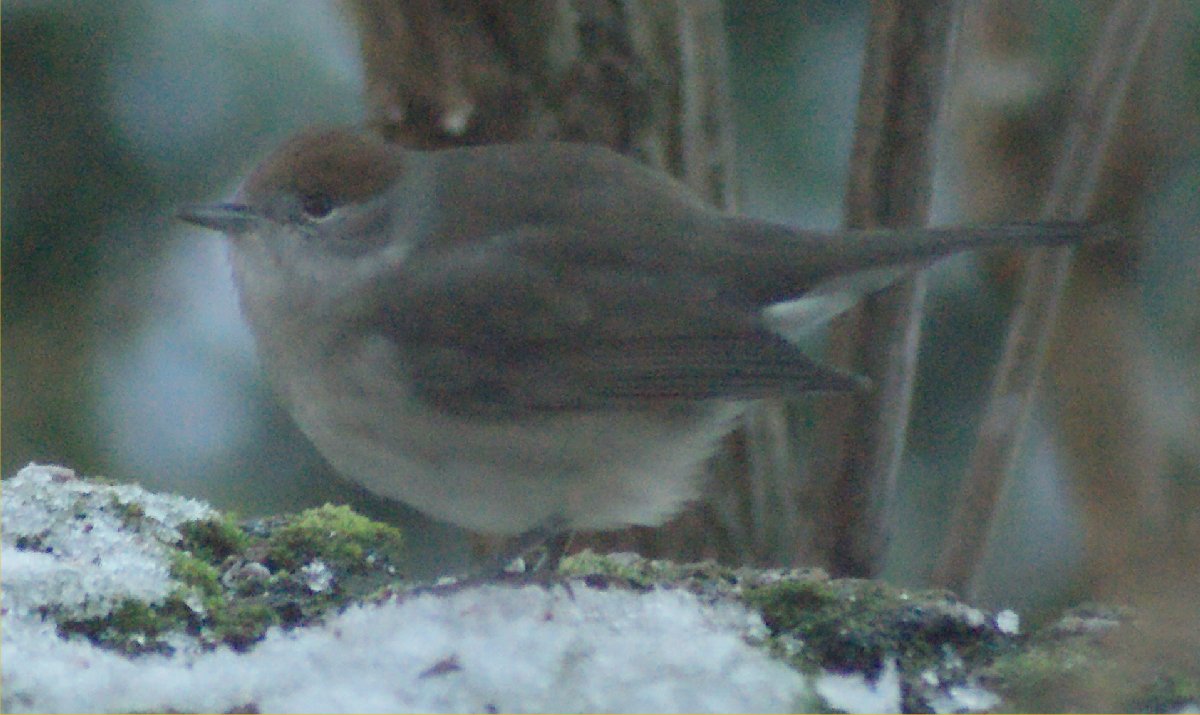
|
| Blackcaps are supposed to be Summer visitors, but this female appeared on our terrace on 16th December 2010. For a while she appeared in the records as the most inland winter Blackcap seen in Northumberland. |
Back to bird list
| GOLDCREST Regulus regulus |
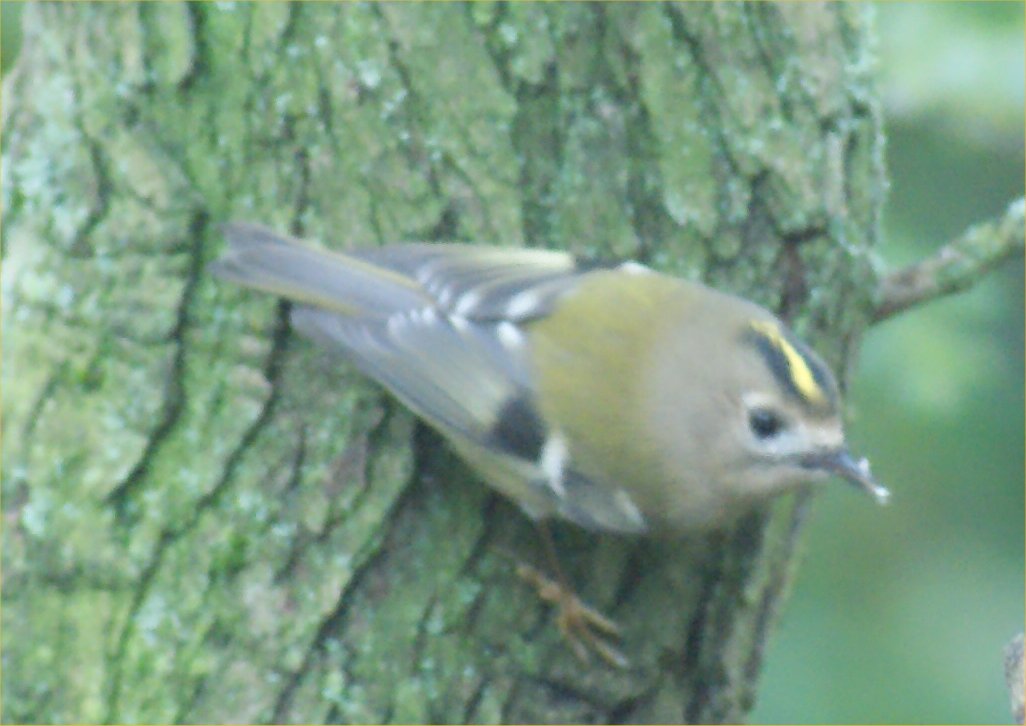 |
| Nervous, quick and tiny, a real challenge to photograph. This one was seen from a hide in Washington WWT in October 2011, but not very close. We'll try to get a clearer one! |
Back to bird list
| LONG-TAILED TIT Aegithalos caudatus | |
 |

|
| Not easy to photograph, but well worth the effort. This one was at Washington WWT in January 2015. |
Back to bird list
| COAL TIT Parus ater | |
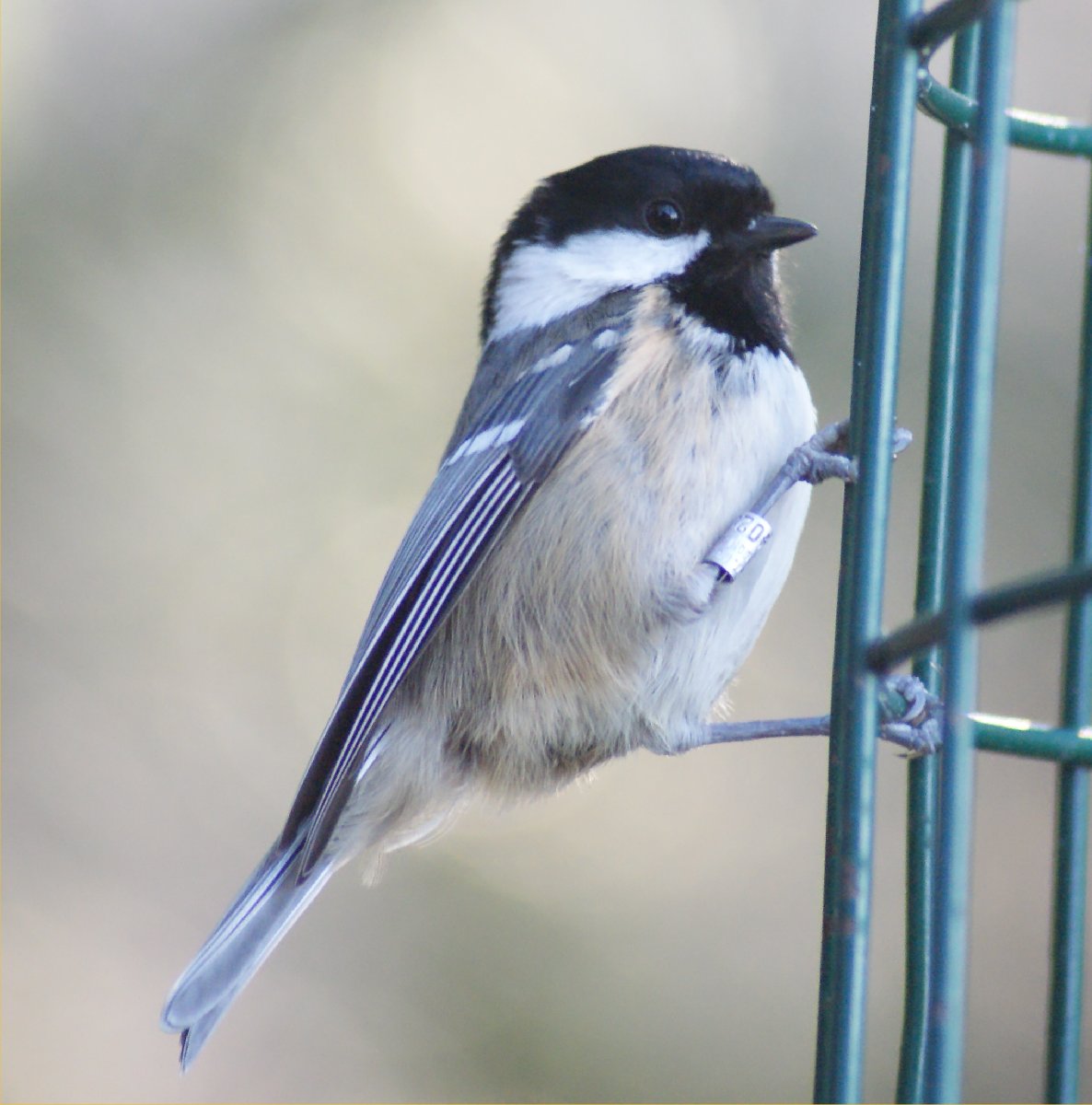 |
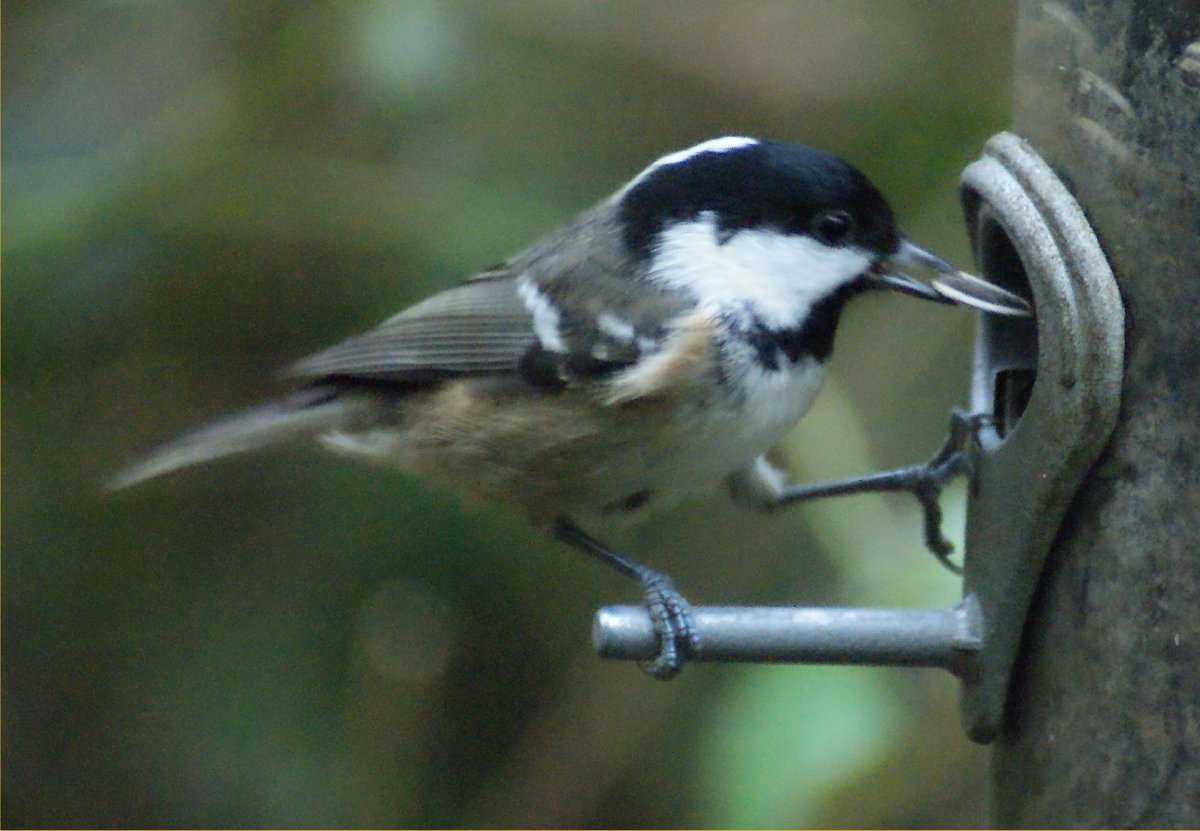
|
| Quick and nervous, like other small birds they are easier to snap from a hide, at Gibside in February 2012 and at Wallington in November 2008. |
Back to bird list
| BLUE TIT Parus caerulus |

|
| They appear on our feeders too, of course, but we snapped this one in Portuairk, Ardnamurchan, May 2014. |
Back to bird list
| GREAT TIT Parus major | |
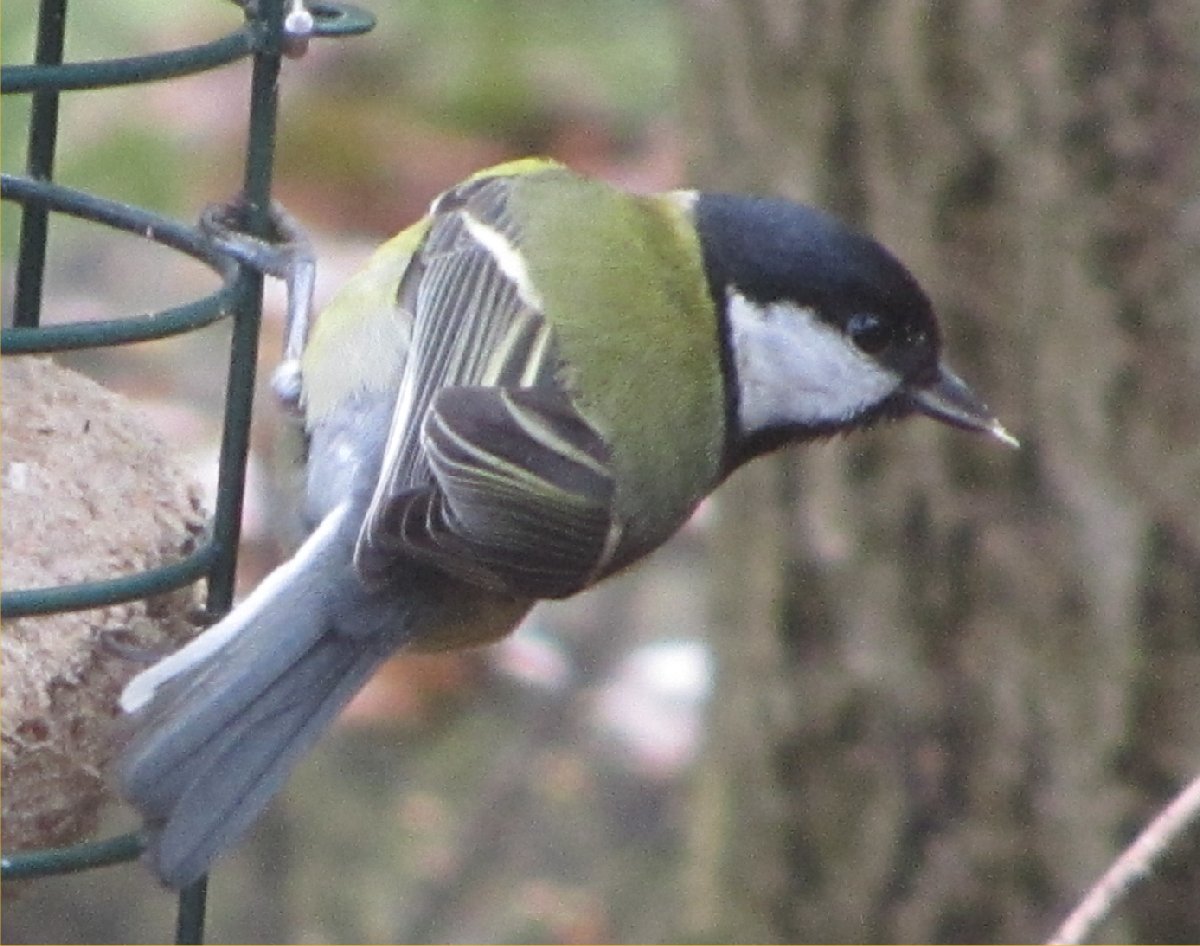 |

|
| Seen and heard frequently, these two were at Gibside in March 2013 and Washington WWT in January 2009. |
Back to bird list
| EUROPEAN NUTHATCH Sitta europaea | |
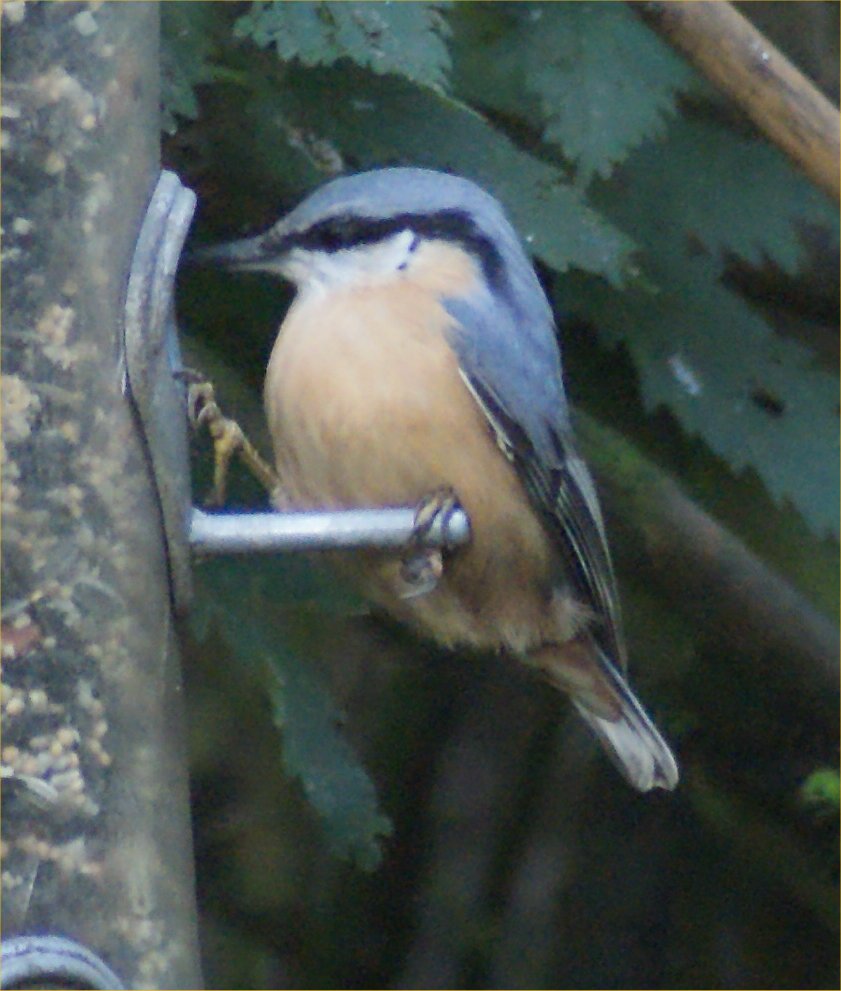 |
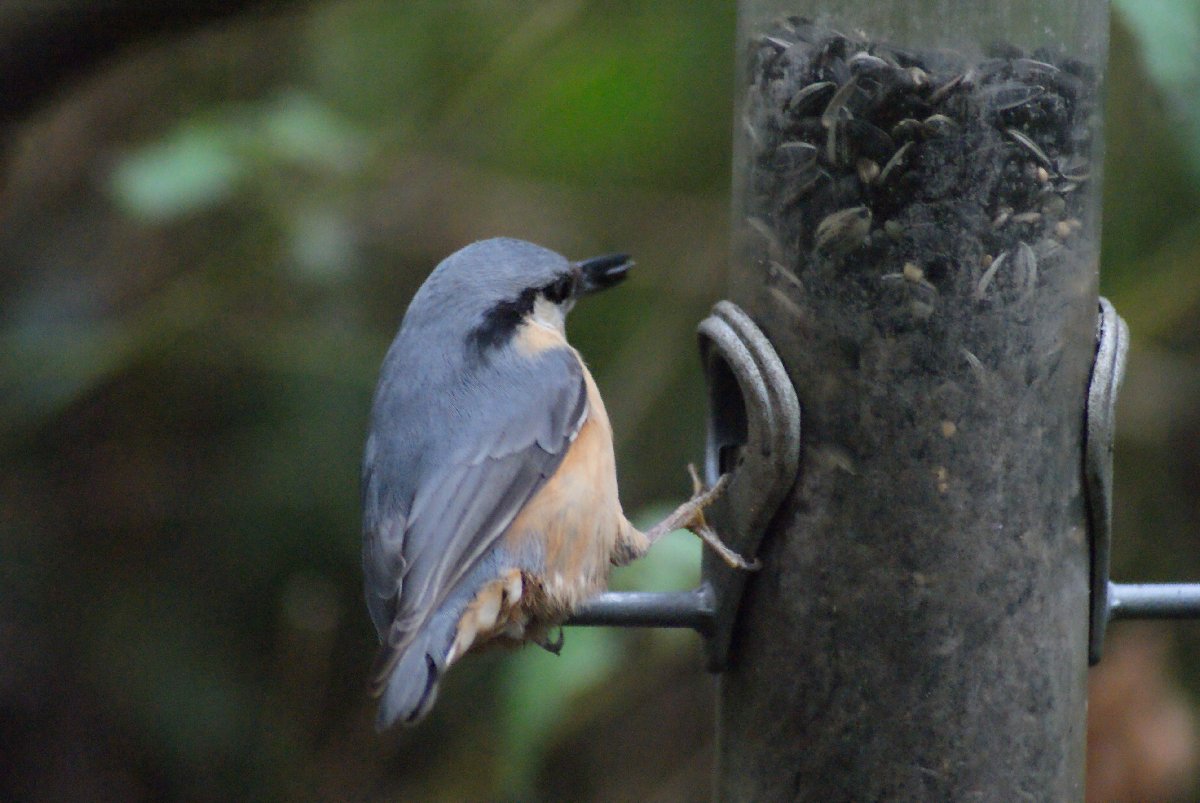
|
| Walk in a mature woodland and you'll probably hear the bubbly call of the Nuthatch. These two were at Wallington, in November 2011 and November 2008, but we occasionally have a fleeting visitor on our feeders too. |
Back to bird list
| EURASIAN TREECREEPER Certhia familiaris | |
 |

|
| These scurry up and down trees and are easier to photograph if they feed on the ground, as at Gibside in December 2012. The other one decided our fat balls were a tree, and stayed long enough for Elisabeth to grab her camera. |
Back to bird list
| EURASIAN JAY Garrulus glandarius |
 |
| Jays are very shy and difficult to photograph other than from a hide, which we've failed to do so far. This one was in a hedge some distance away at Washington WWT (July 2014), but we'll try to get a better one! |
Back to bird list
| JACKDAW Corvus monedula |
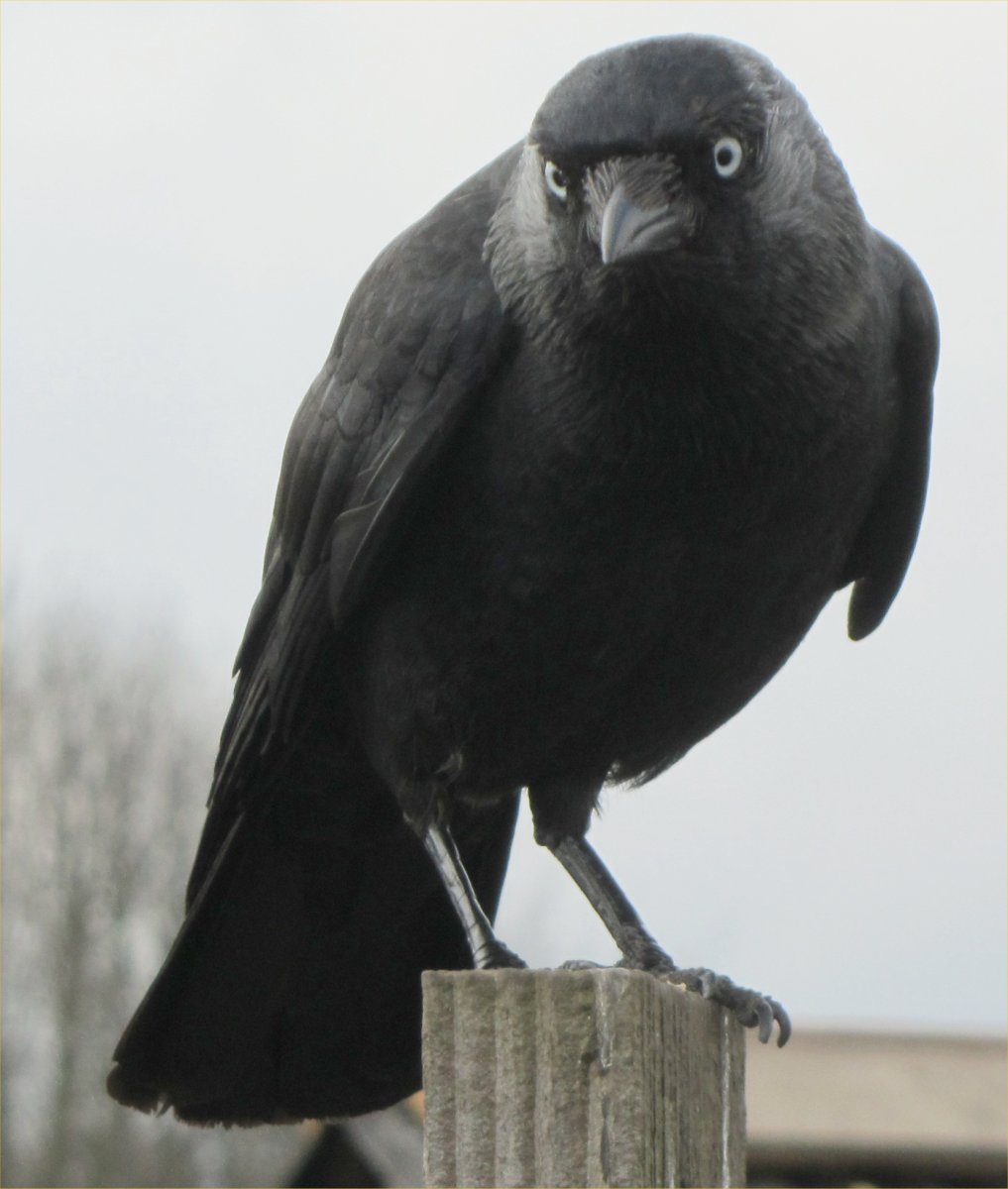 |
| We see these noisy yet endearing corvids on our feeders, but they are difficult to snap while quarrelling or falling off the small feeders. This cocky character posed for Elisabeth at Beamish Open-air Museum in March 2015. |
Back to bird list
| CARRION CROW Corvus corone | |
 |
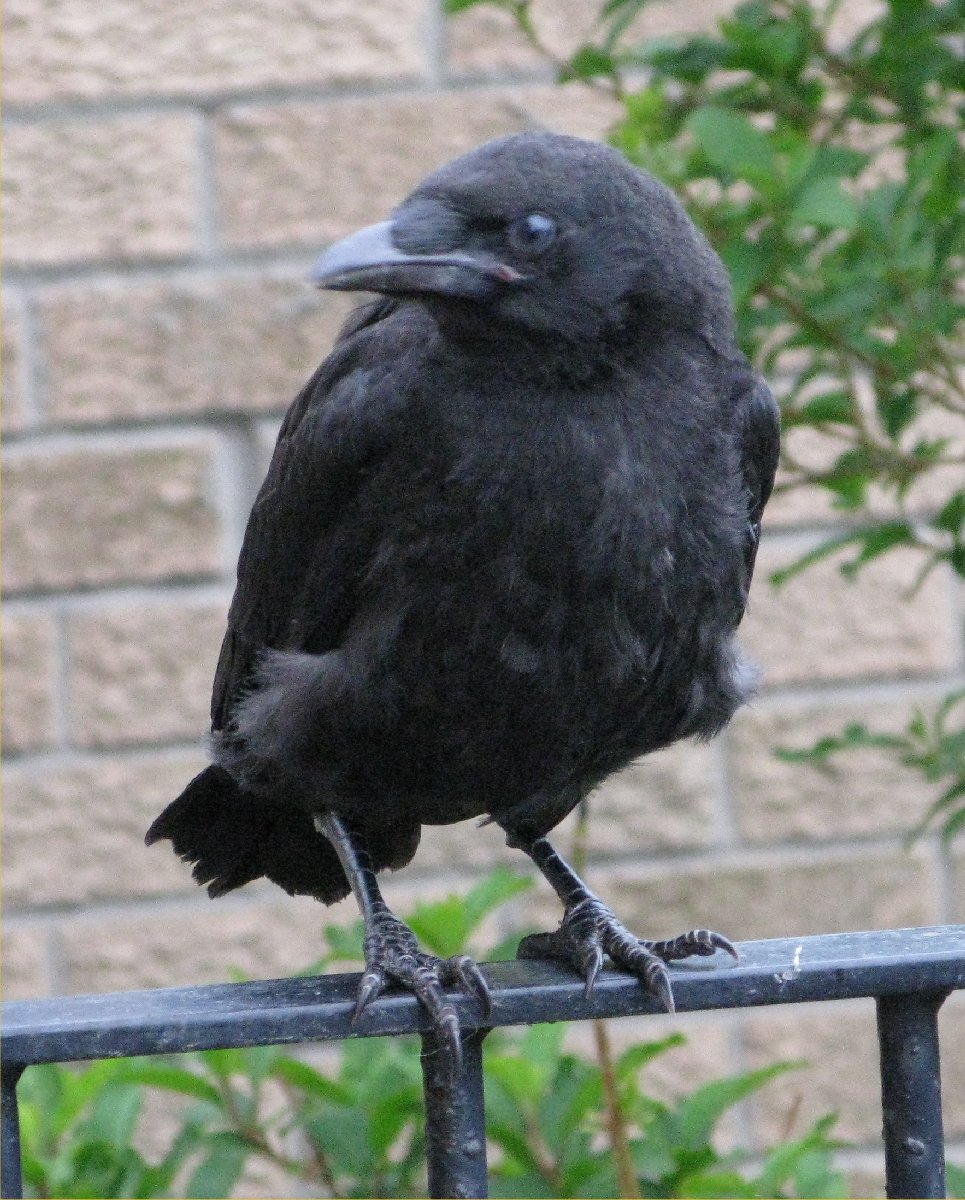
|
| A particulaly bold specimen, on our patio in June 2009. |
Back to bird list
| COMMON STARLING Sturnus vulgaris |
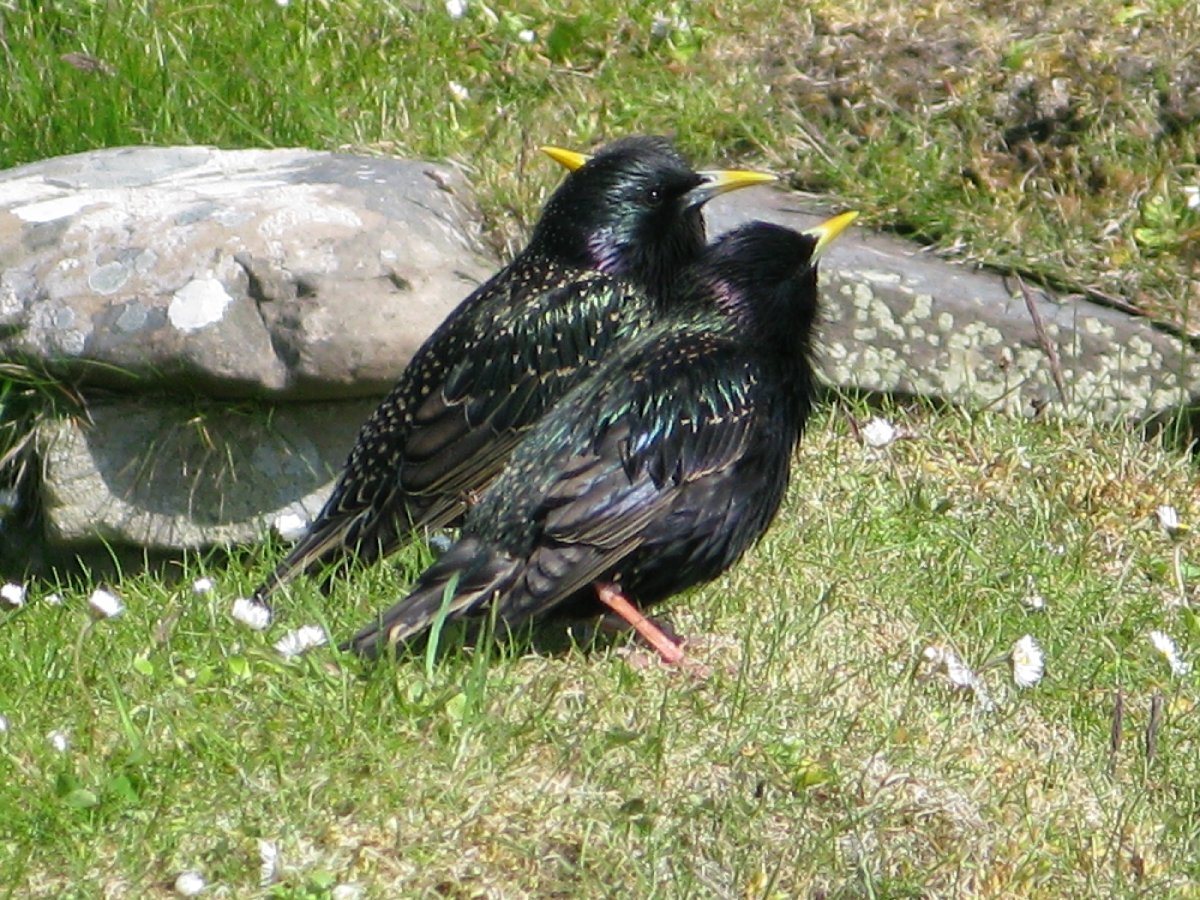 |
| Why our best photo of these birds came from Jarlshof, an archaeological site in Shetland, in June 2010, when they visit our feeders every day is a mystery. There are three birds, by the way, in case you're puzzled by the extra beak. |
Back to bird list
| HOUSE SPARROW Passer domesticus | |
 |
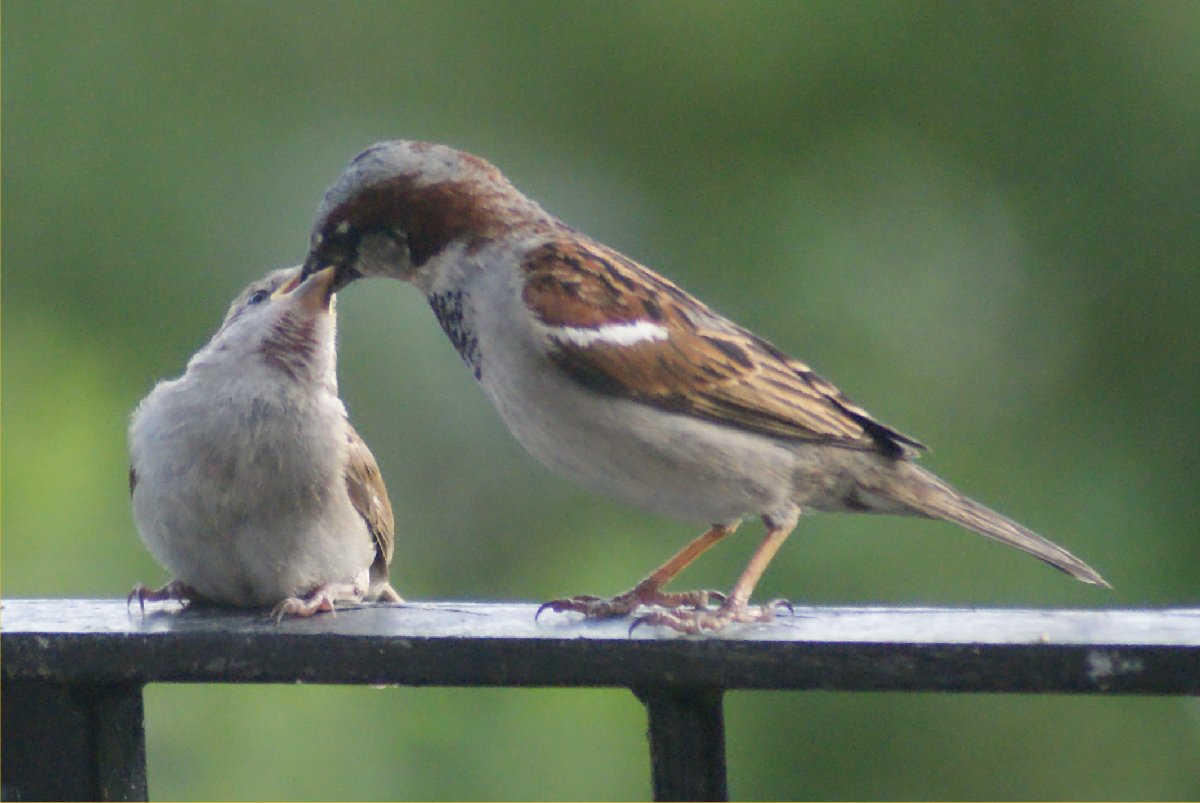
|
| Though becoming rarer in the south, we still see plenty here and further north. They can be guaranteed to provide entertainment in exchange for the seeds we put out, whether arguing at the feeder (Portuairk, Ardnamurchan September 2013) or feeding offspring on our patio in May 2009. |
Back to bird list
| TREE SPARROW Passer montanus | |
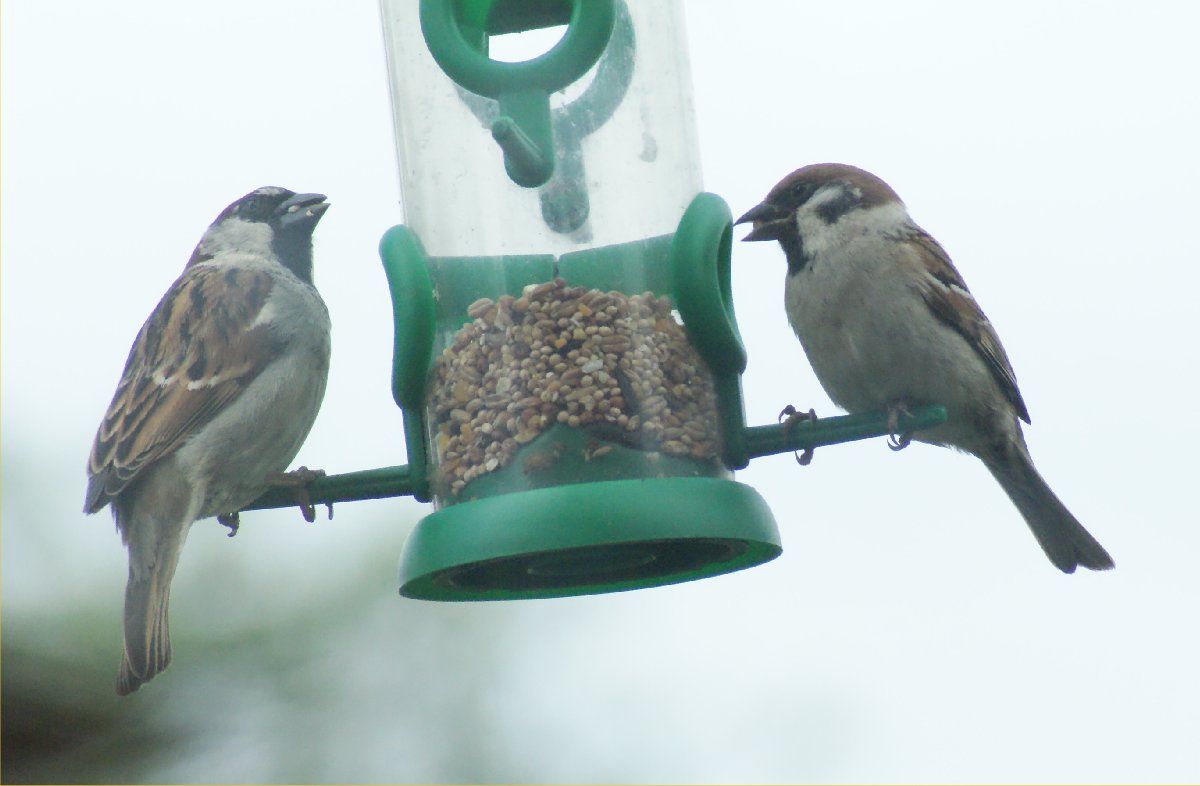 |
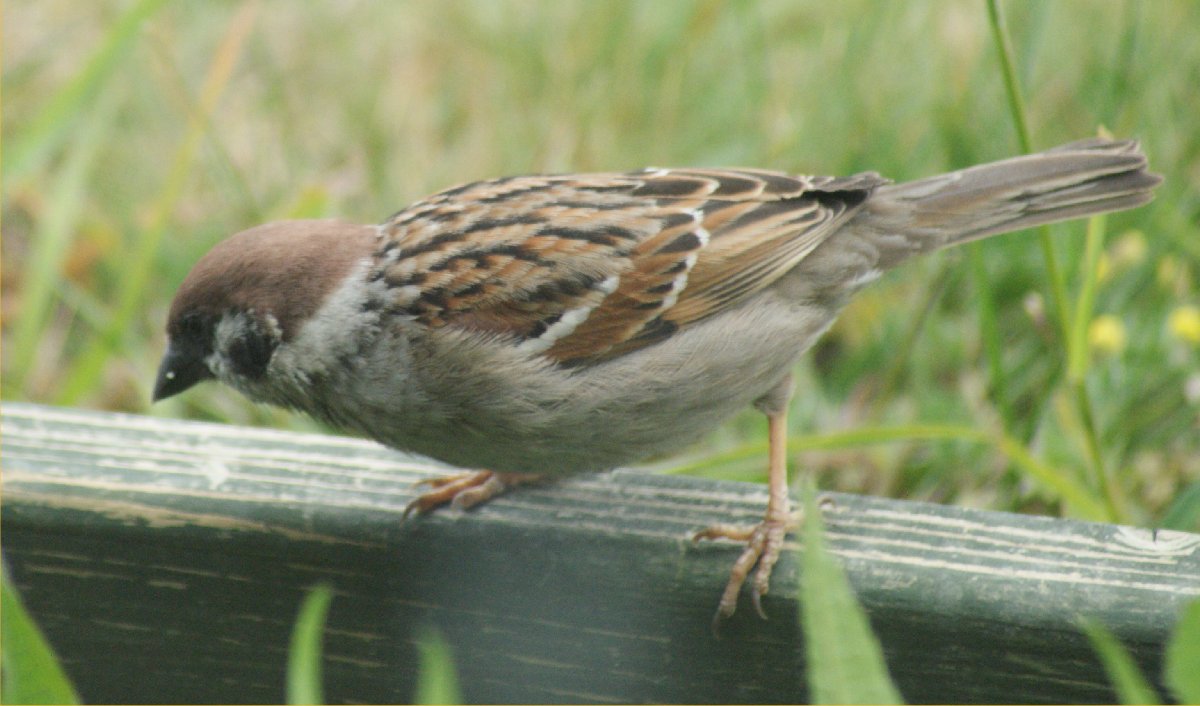 |
| Much rarer than the House Sparrow, but we did have a visitor to our patio in May 2012. It conveniently fed with a House Sparrow (on the left in the left-hand photo) to allow comparison. The other one was at Hauxley Nature Reserve in June 2009. |
Back to bird list
| CHAFFINCH Fringilla coelebs | |
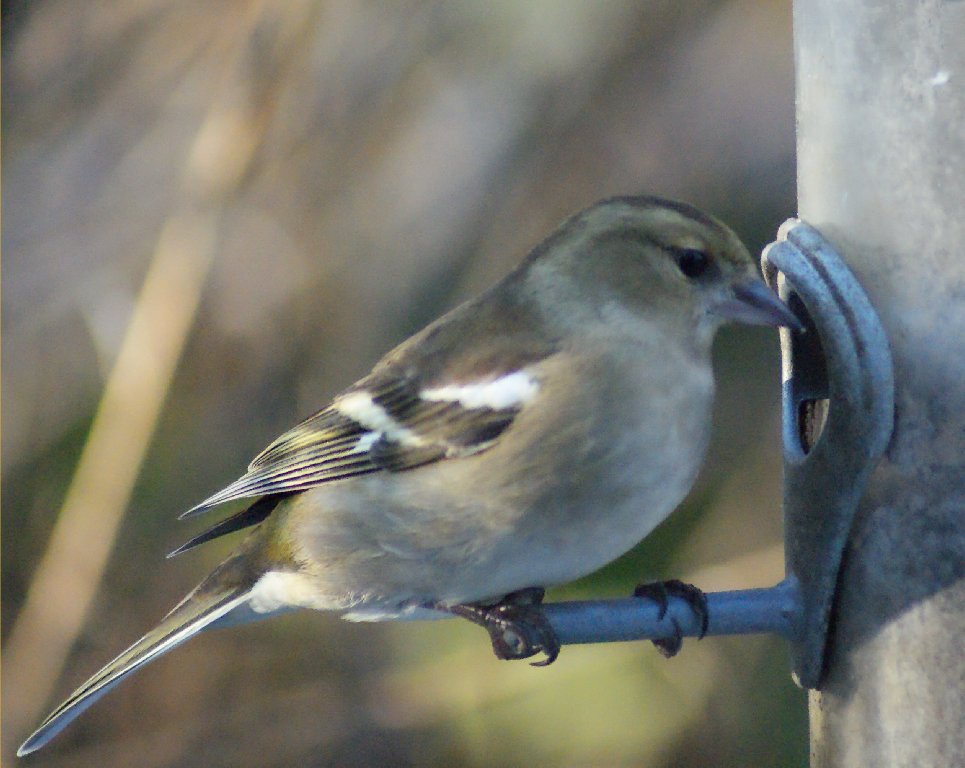 |

|
| Often on our patio but easier to photograph from a hide, these two (female on left) at Wallington, in December 2008 and October 2012 respectively. |
Back to bird list
| BRAMBLING Fringilla montifringilla | |
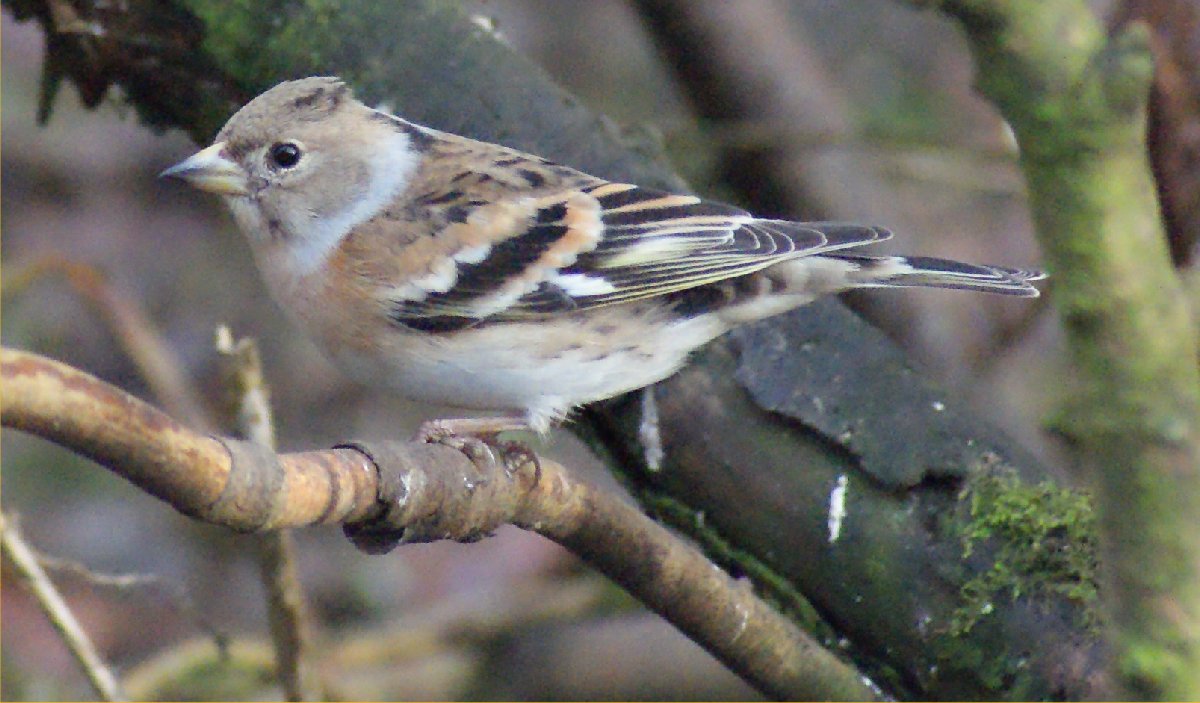 |
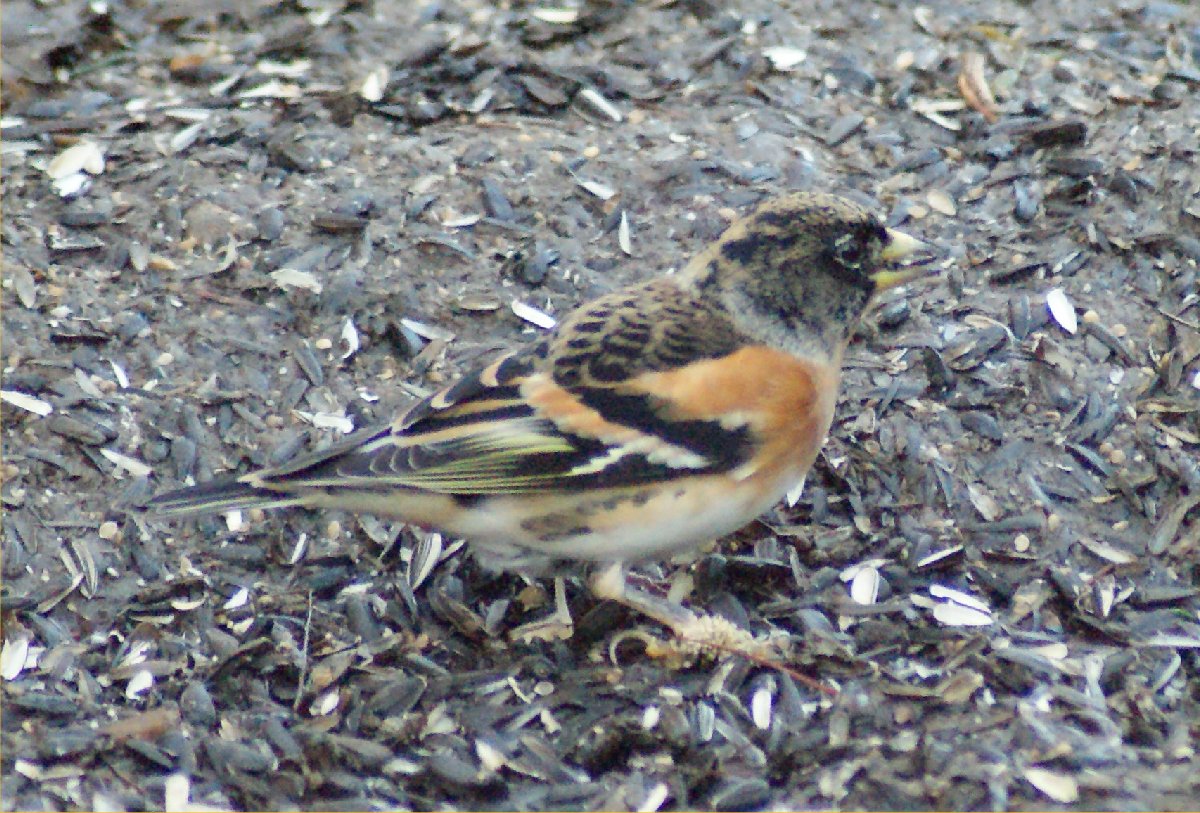
|
| We occasionally have these winter visitors on our patio too, but these two were seen from the hide at Wallington, the female (left) in February 2010, the male in January 2014. |
Back to bird list
| GREENFINCH Carduelis chloris | |
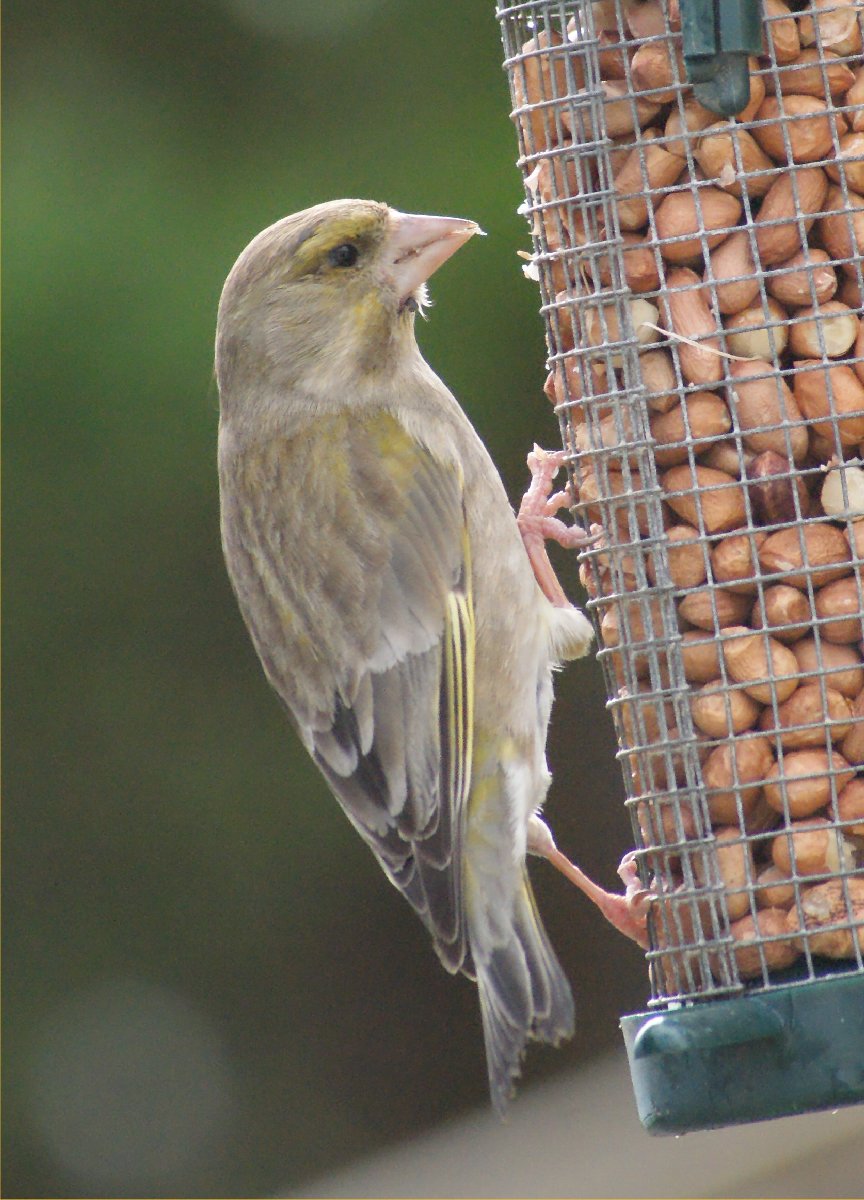 |

|
| Quite common on feeders, the female on the left was in Portuairk, Ardnamurchan, in May 2014, the juvenile on our own feeders in July 2009 |
Back to bird list
| GOLDFINCH Carduelis carduelis | |
 |
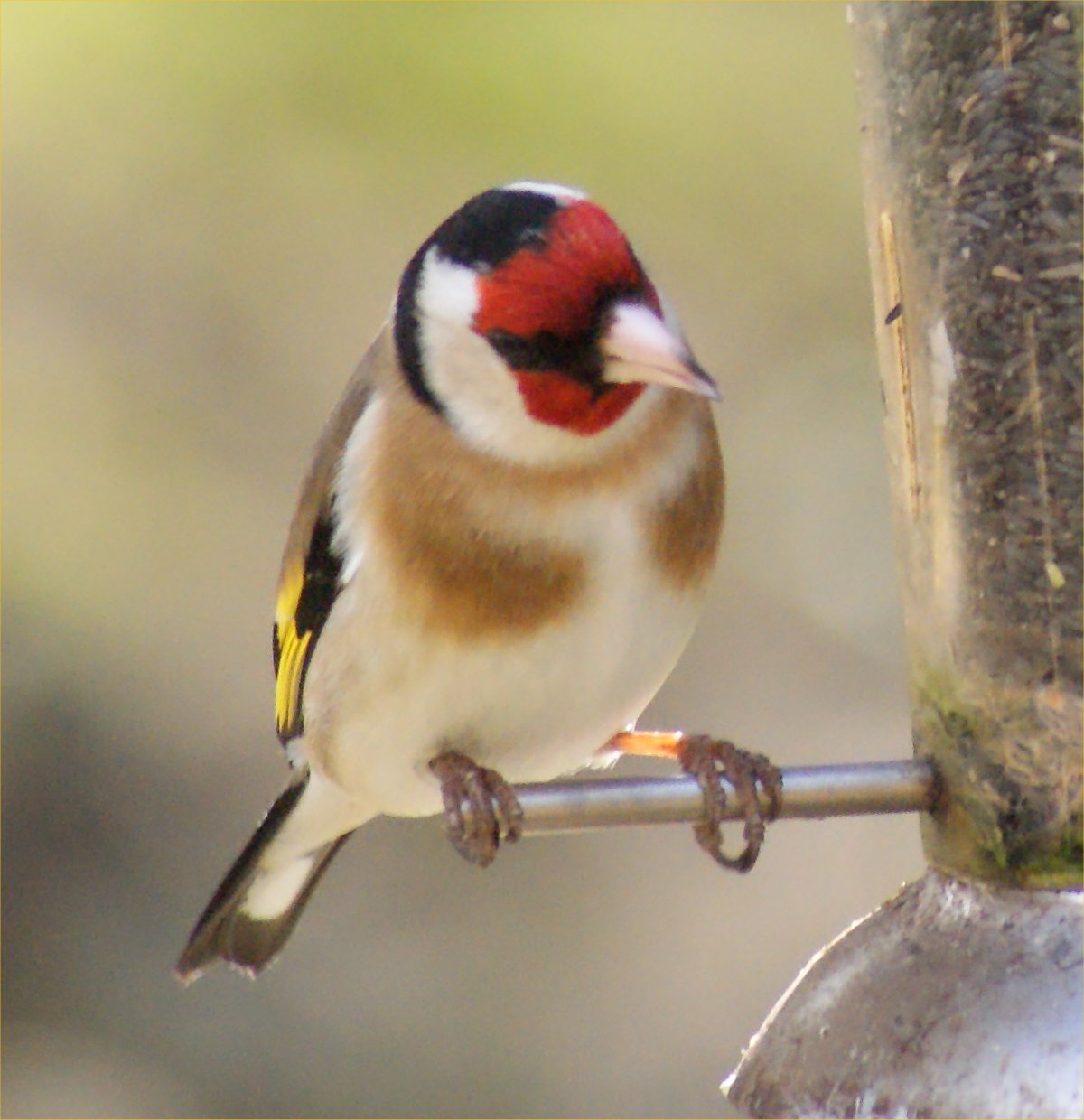
|
| Often on our feeders, as was the left-hand one in March 2009. The other was in Wallington, April 2013. |
Back to bird list
| SISKIN Carduelis spinus | |
 |
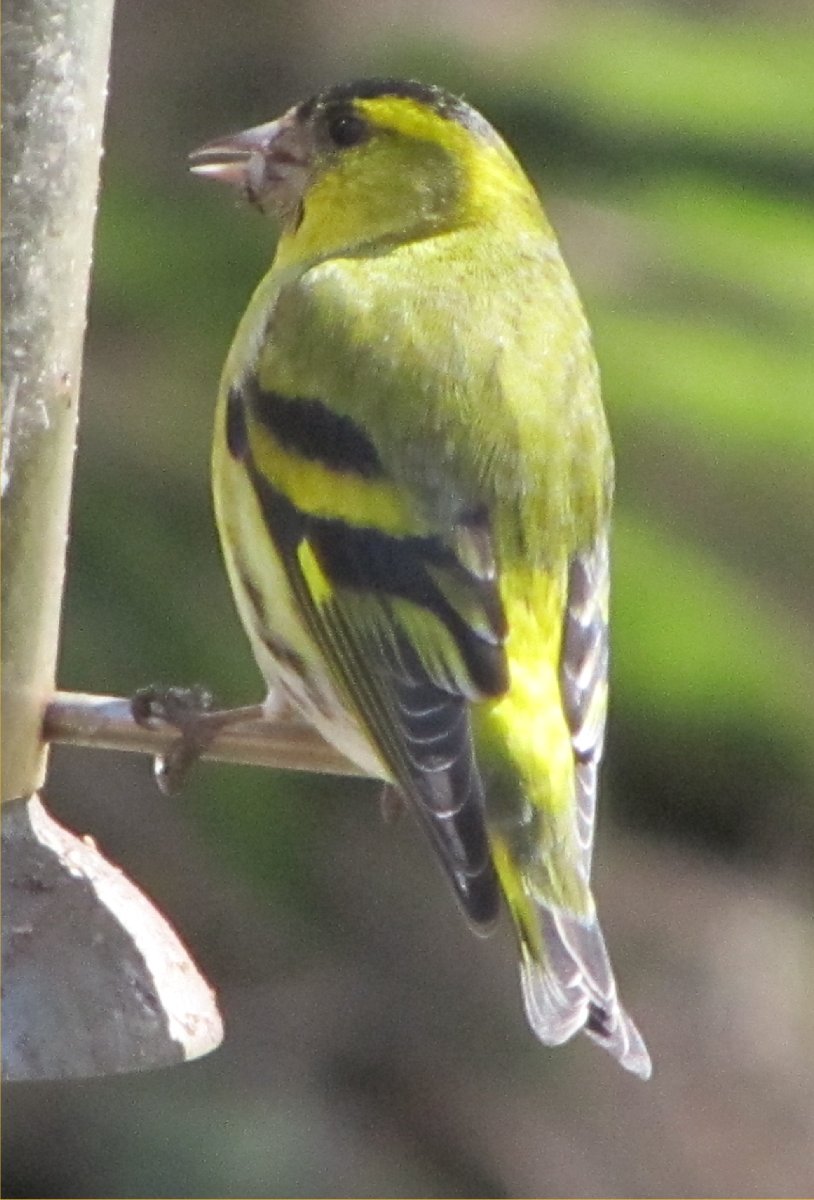
|
| Delightful little finches which visit our feeders, not every year but sometimes as a group when they do. The left-hand female was one of our visitors in July 2008, the male in Wallington in 2013. |
Back to bird list
| TWITE Carduelis flavirostris | |
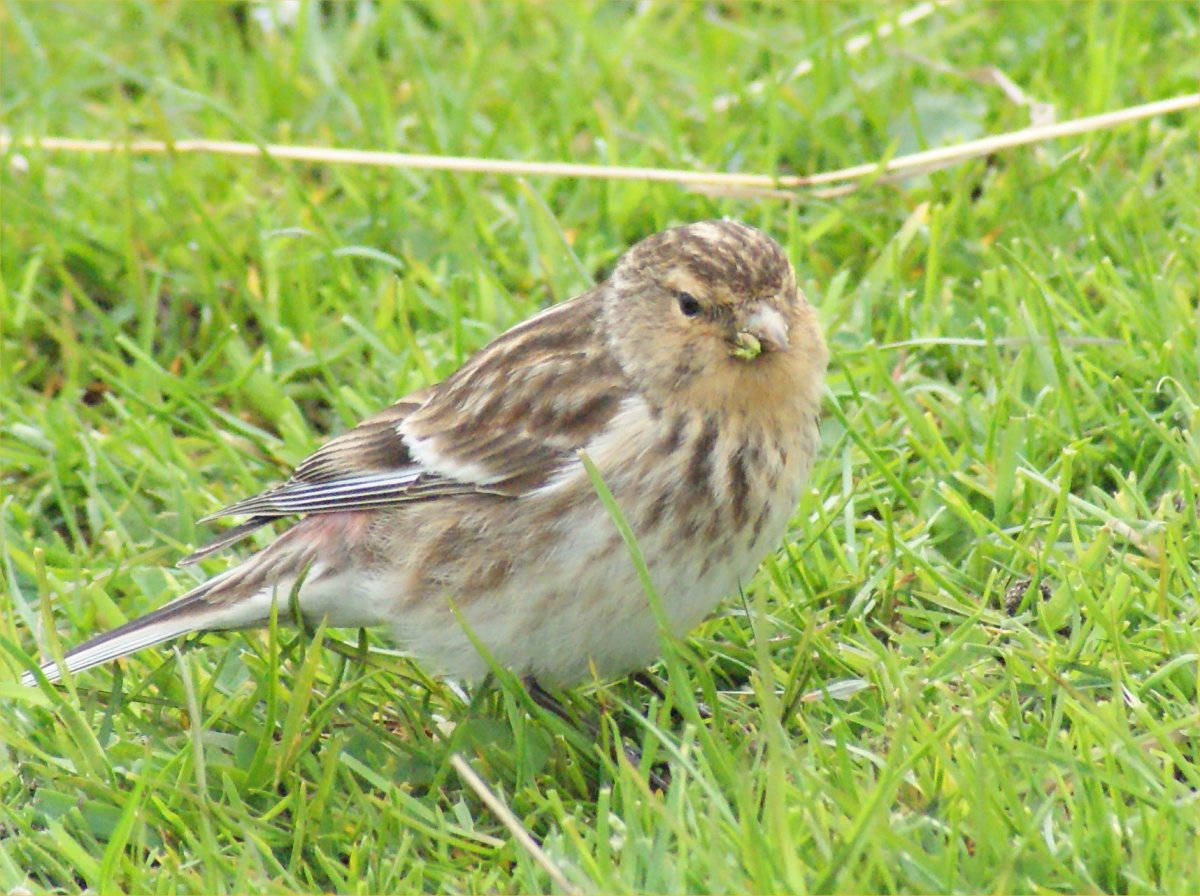 |
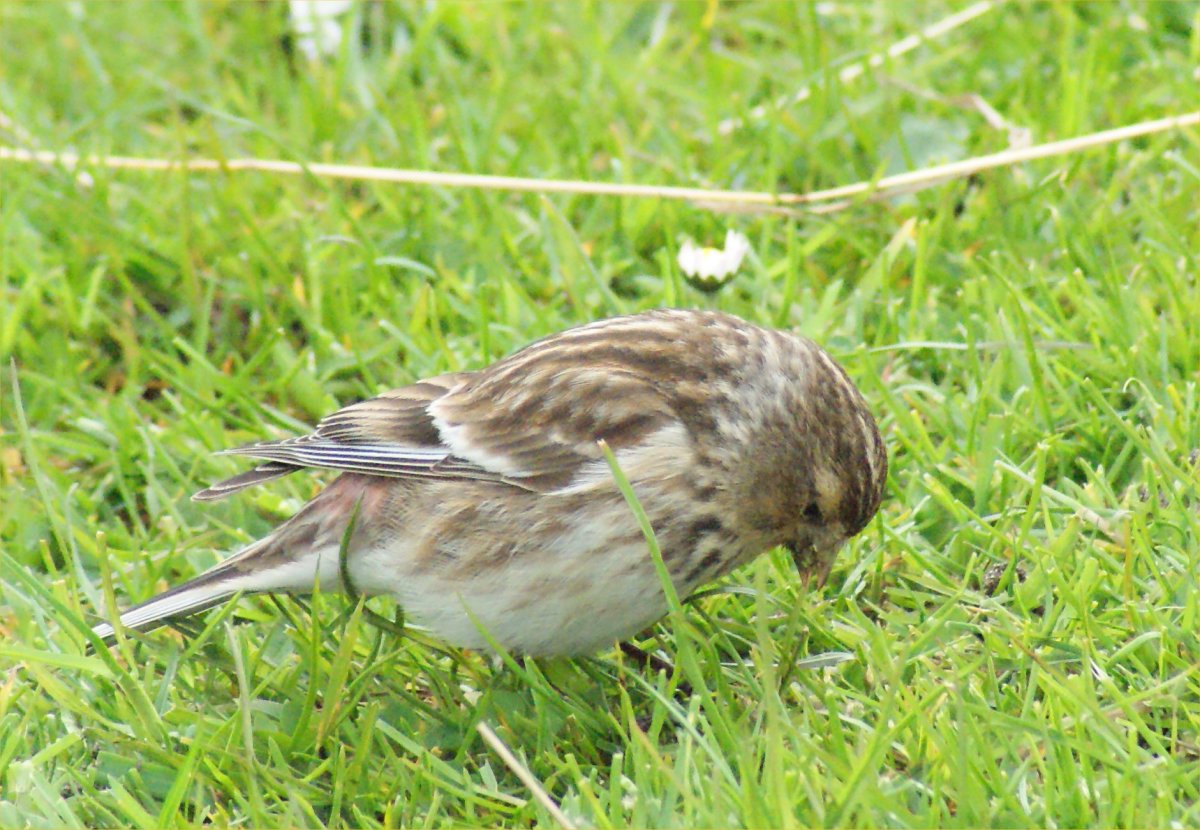
|
| Very much a bird of the North. Usually quite shy, this one was happily feeding and allowed us to get within a couple of metres on Iona in May 2018. |
Back to bird list
| COMMON? REDPOLL Carduelis sp. | |
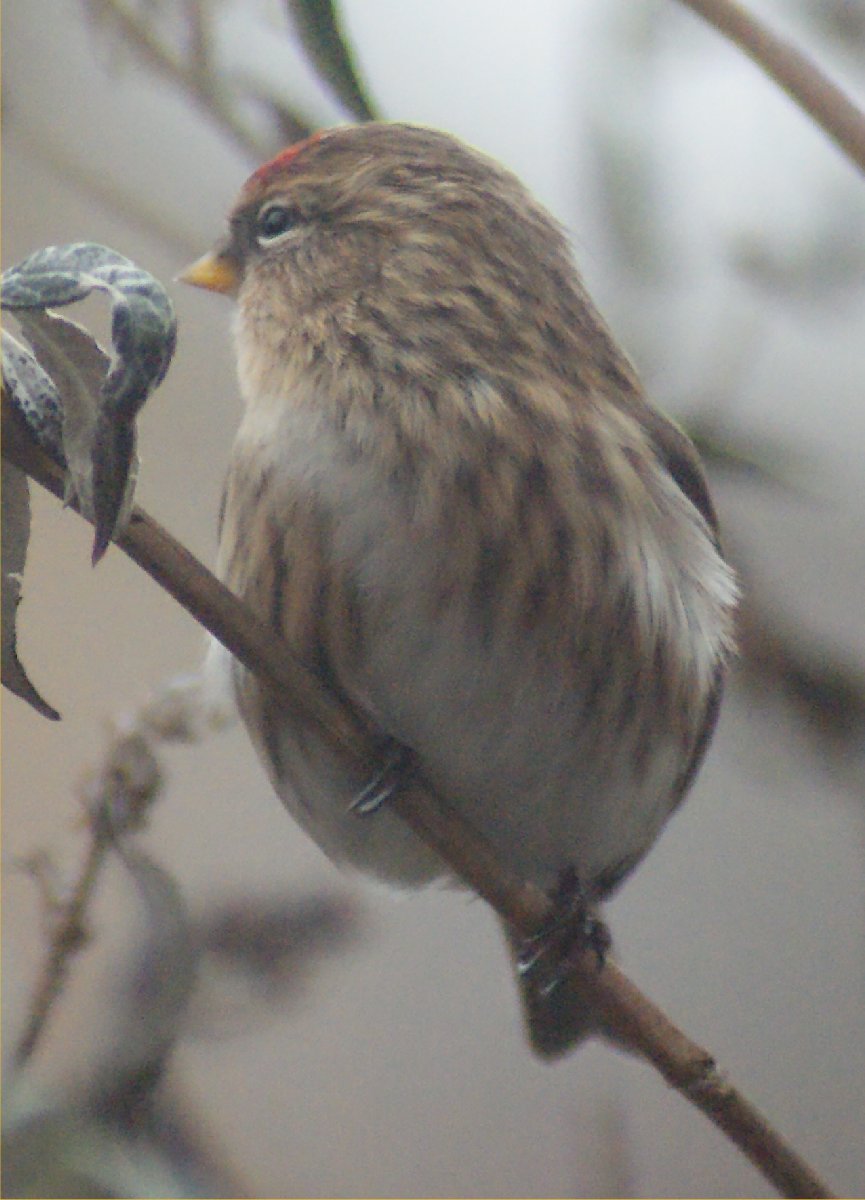 |
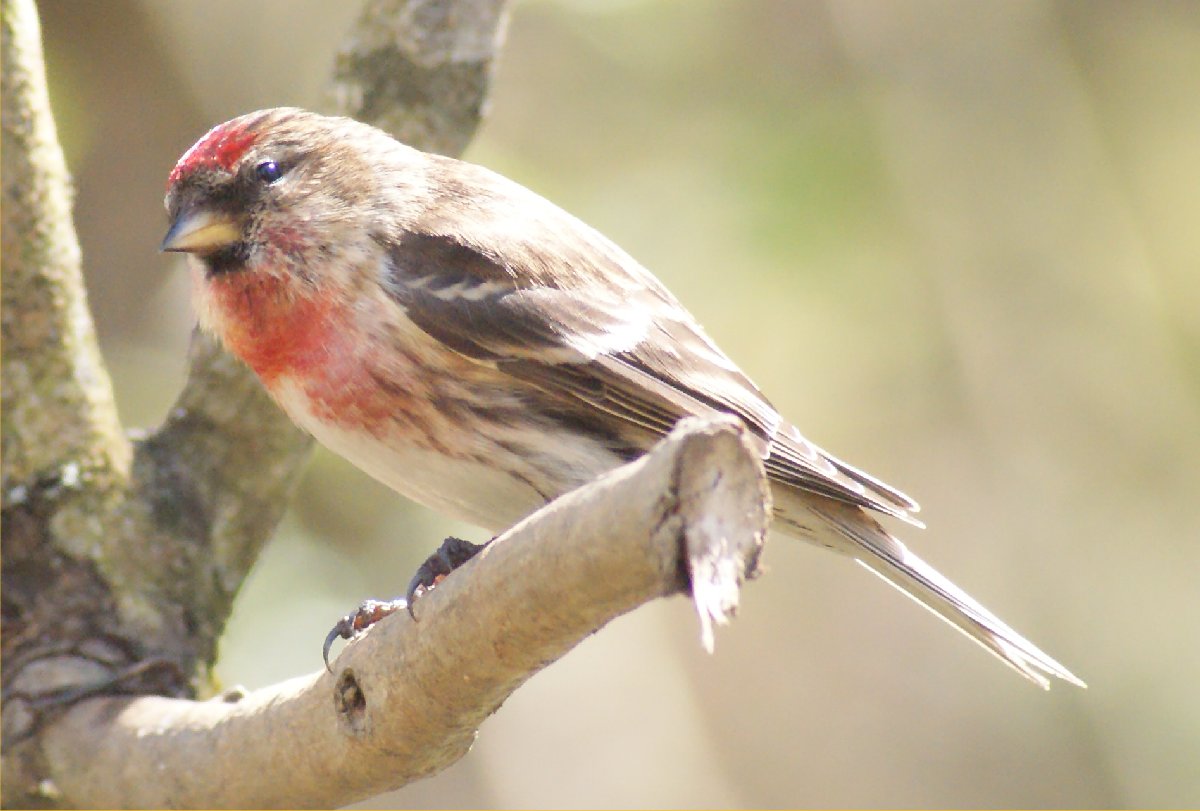
|
| We're not going to state with any conviction whether these two are Common or Lesser Redpolls - we gather from our friend Alan Outen that they are "difficult". We saw the left-hand one from our window in January 2011 - as it was winter we're not even sure whether it was male or female. The other, at Wallington in April 2013, is clearly a male in full breeding plumage. |
Back to bird list
| BULLFINCH Pyrrhula pyrrhula | |
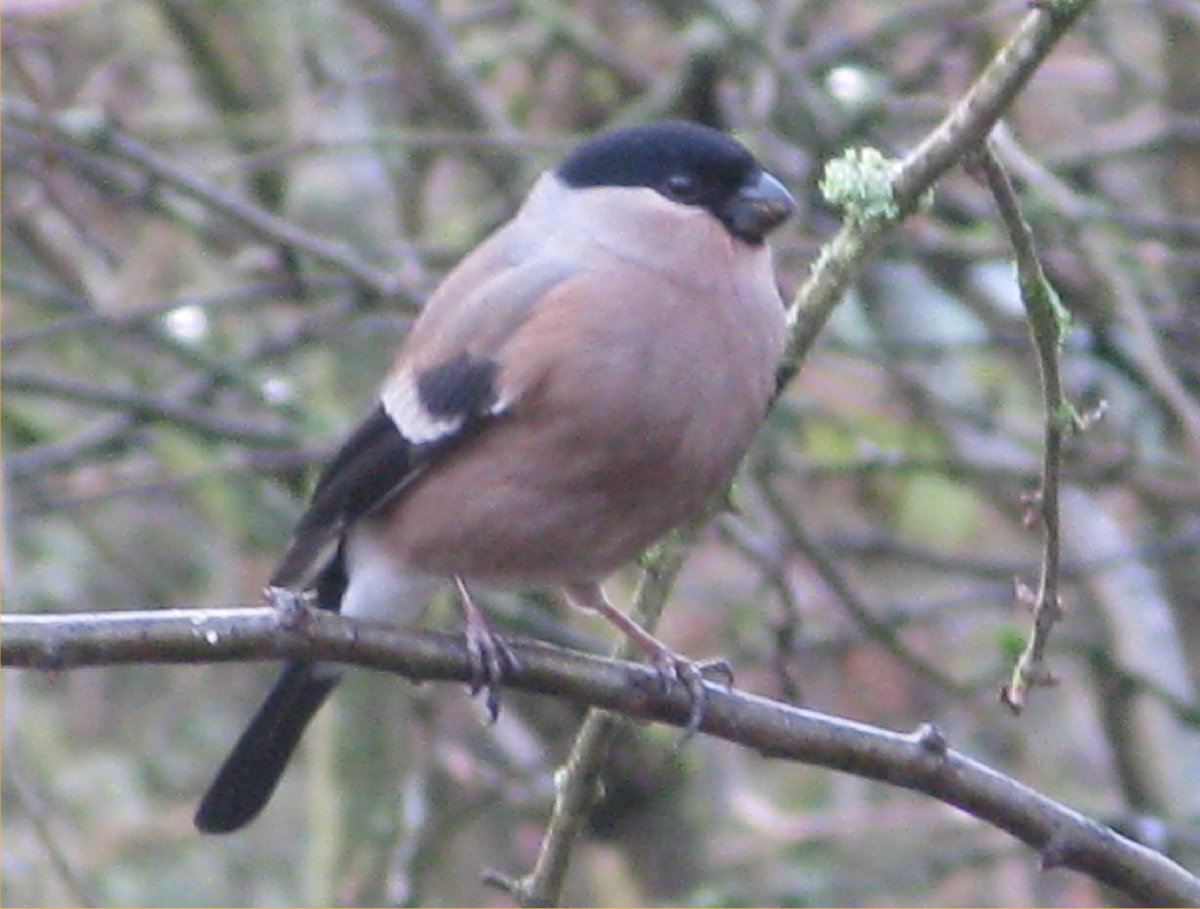 |
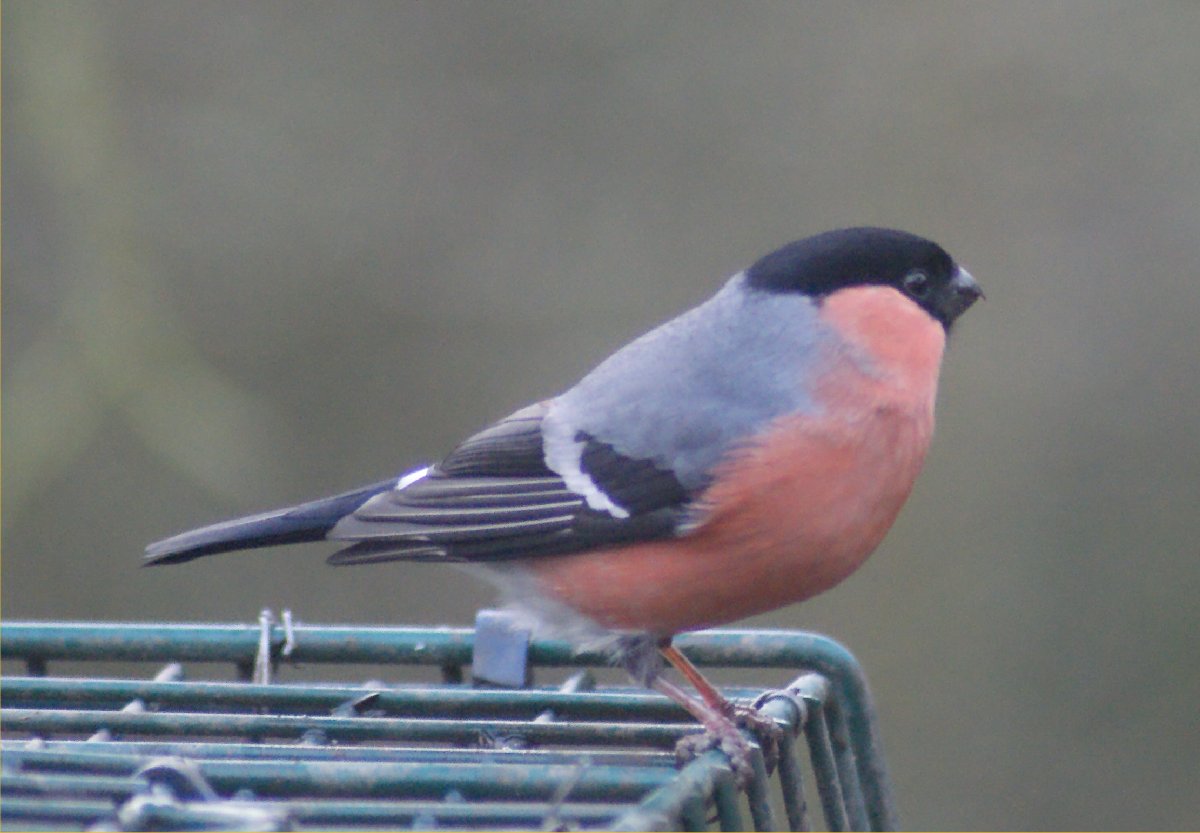
|
| These appear on our patio from time to time, but they are easier to photograph from one of the hides at Washington WWT. We saw both of these (female on the left) in January 2009. |
Back to bird list
| REED BUNTING Emberiza schoeniclus | |
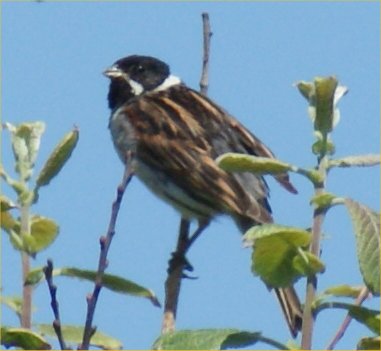 |
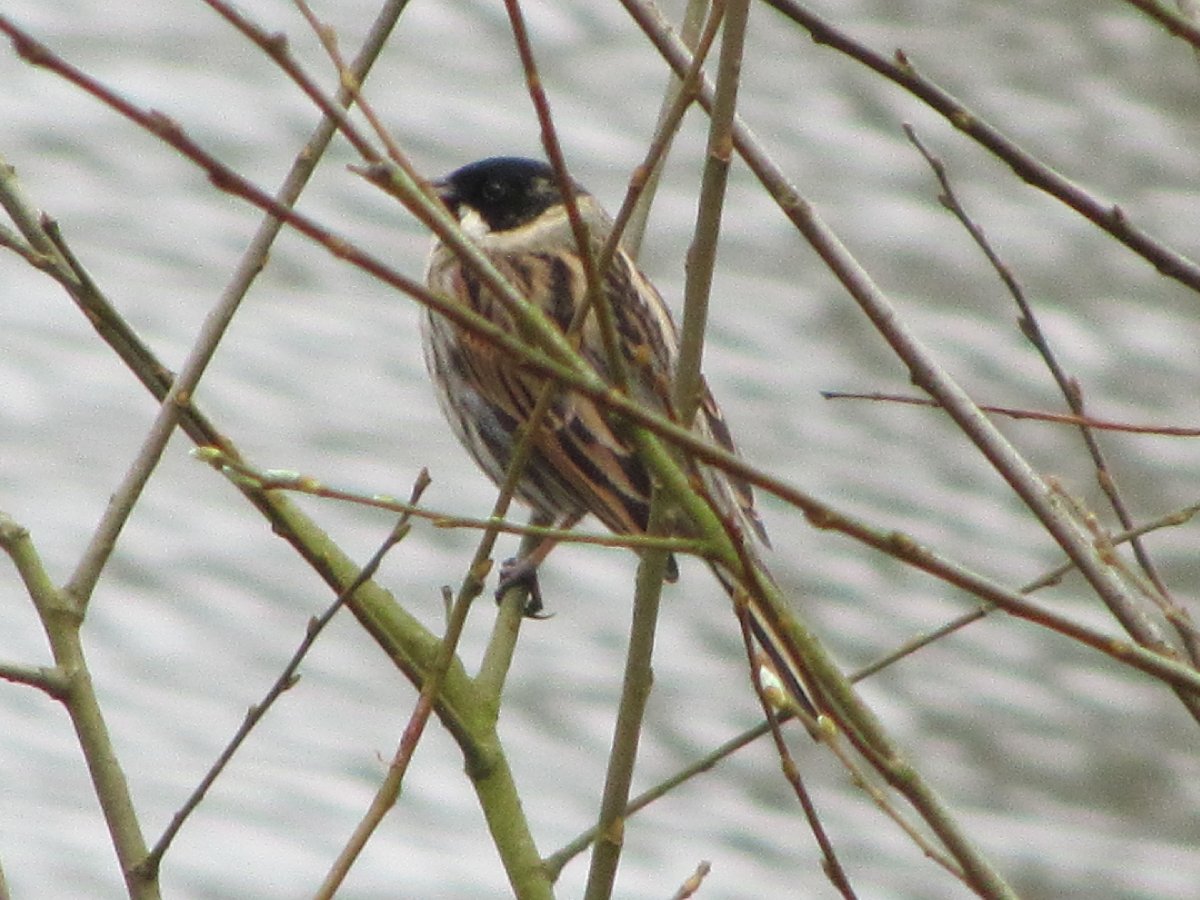
|
| A dapper little bird which very considerately perches on the tops of bushes to be photographed. The left-hand one was in Druridge. June 2010, the other in Send, Surrey, in April 2013. |
Back to bird list
Home - Hexham, Northumberland
Druridge Bay, Northumberland coast south of Amble
Hauxley Nature Reserve, Northumberland coast south of Amble
Farne Islands - off the Northumberland coast
Beadnell, Northumberland coast, South of Seahouses
Cragside, National Trust property in Northumberland, includes several lakes
Tipalt Burn, near Greenhead, Northumberland
Wallington, National Trust property in Northumberland, includes a wildlife hide
Gibside, National Trust property in Northumberland, includes a wildlife hide
Belsay, English Heritage property in Northumberland
Lindisfarne, Northumberland coast
Washington WWT (Wildlife & Wetland Trust), near Sunderland, Tyne & Wear
Blanchland, in the Durham Dales
Teesdale, Durham/North Yorkshire border
Talkin Tarn, near Brampton, Cumbria
Clumber Park, near Worksop, Nottinghamshire
Buxton, Derbyshire
Cromford, Derbyshire
Norton Marsh and Cley, North Norfolk coast
Caerlaverock WWT, Solway Firth, south of Dumfries
Linlithlithgow Palace, South-West of Edinburgh
Connel Bridge, north of Oban, Argyll
Glen Coe, National Trust for Scotland Visitors' Centre, Argyll
Erraid, off the South-West corner of the Isle of Mull, Argyll
Sanna Bay and Sanna Burn, near the Western tip of the Ardnamurchan peninsula, Argyll
Portuairk, just south of Sanna Bay, Ardnamurchan
North Uist, Outer Hebrides, especially Balranald Nature Reserve
Jarlshof, South end of Mainland, Shetland
Nibon, North-West coast of Mainland, Shetland
Hillswick, North-West coast of Mainland, Shetland
Tur Ness, North-West coast of Mainland, Shetland
Spiggie Beach, South-West coast of Mainland, Shetland
St Ninian's Isle, South-West coast of Mainland, Shetland
Fethaland, North end of Mainland, Shetland
Herma Ness, North end of Unst, Shetland, the most northerly point in the UK
Milton Keynes, Buckinghamshire - actually Willen Lake, by Milton Keynes East Premier Inn
Send, Surrey - between Woking and Guildford, with a large pond near its western edge
Back to top
back to 'Fauna'
|